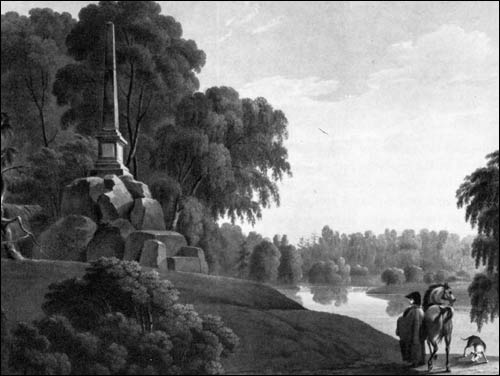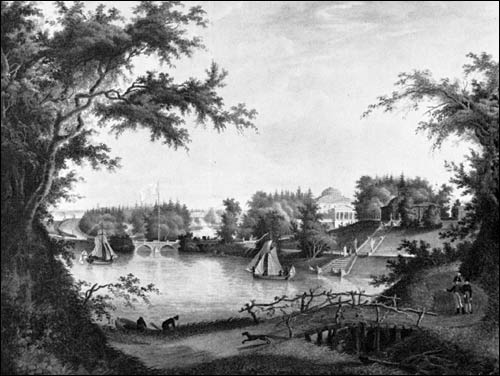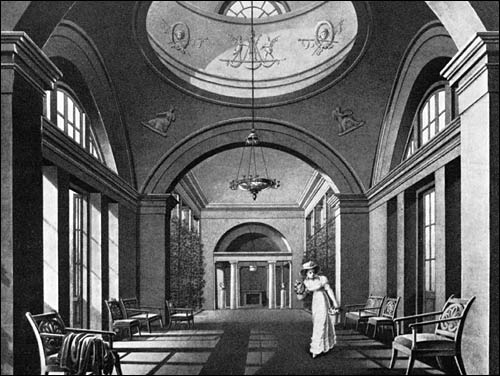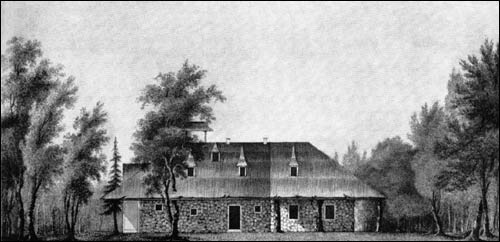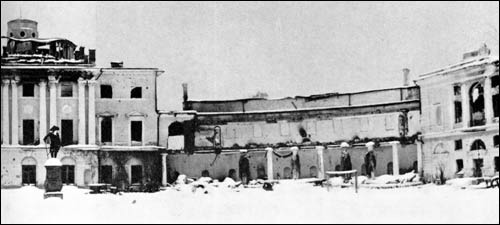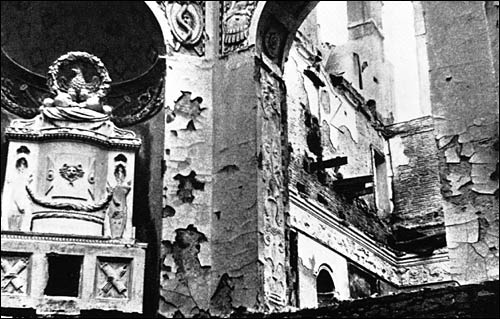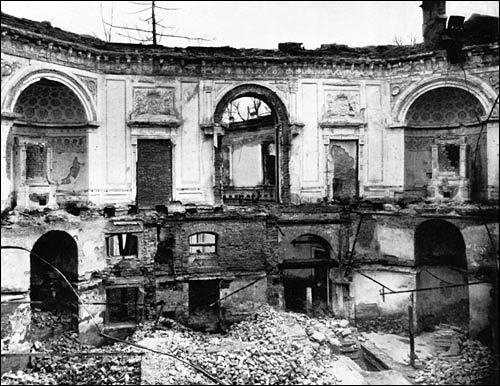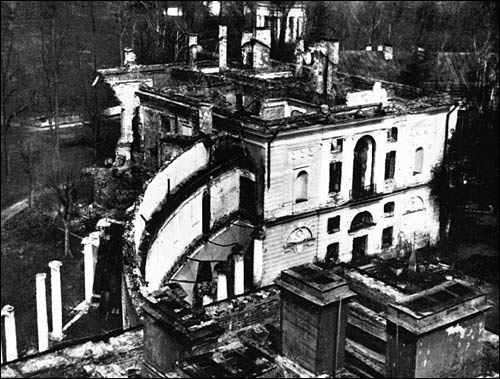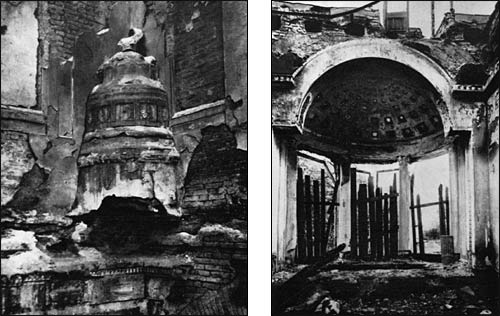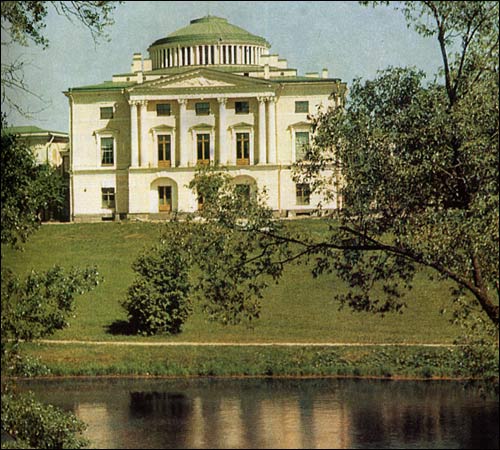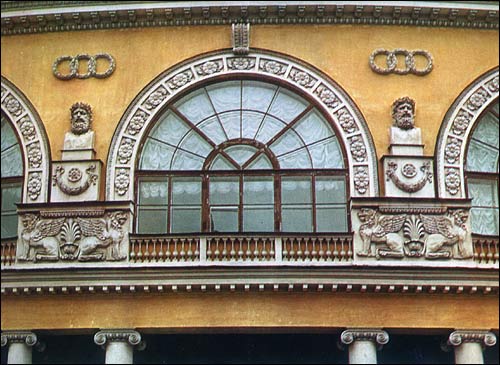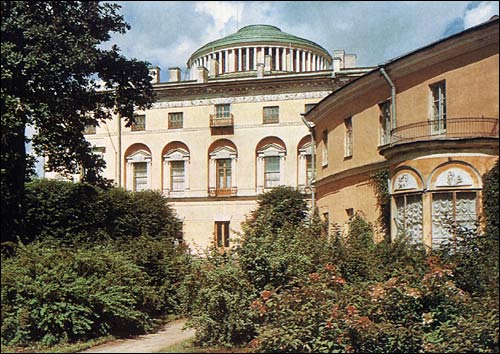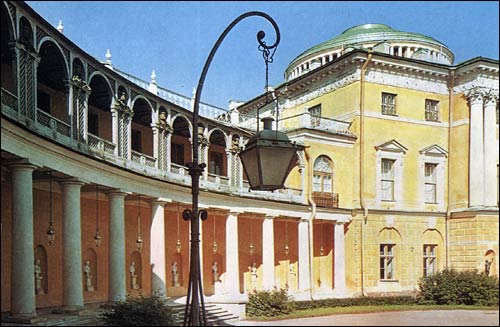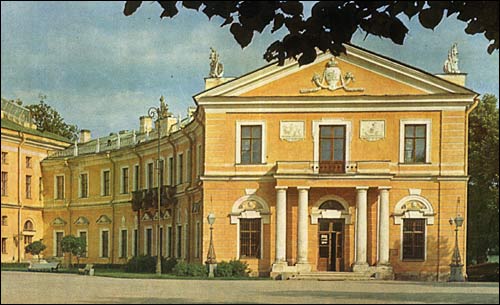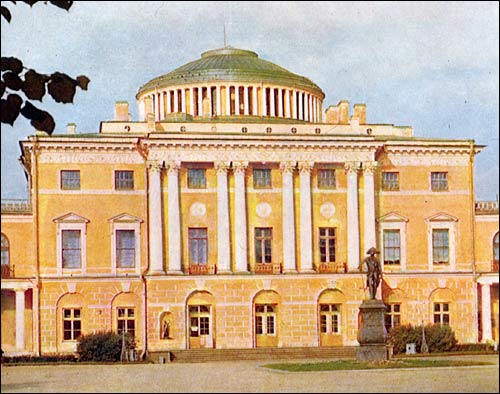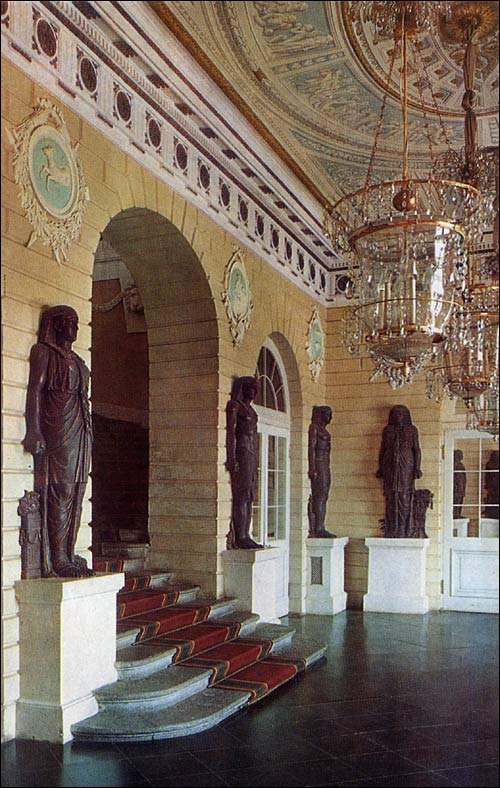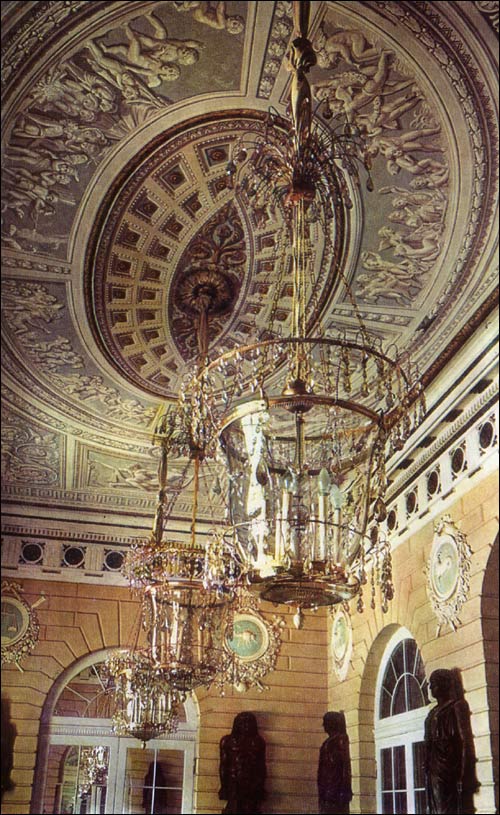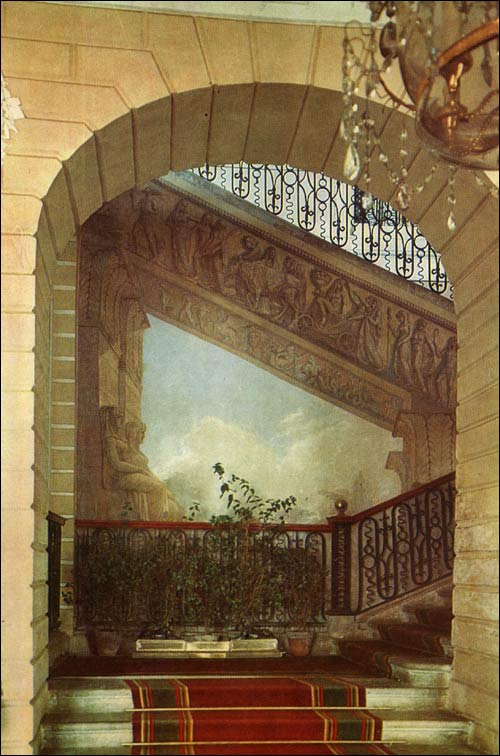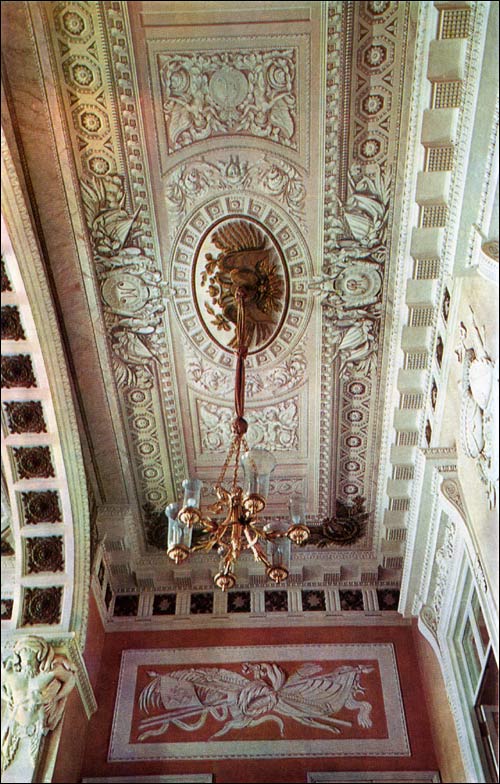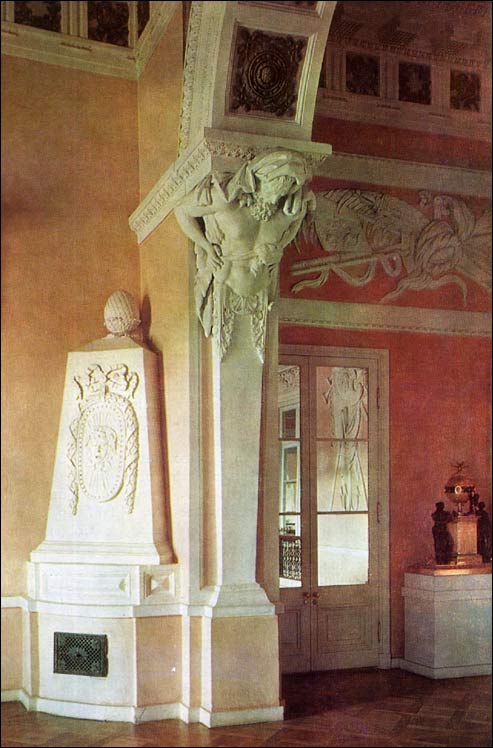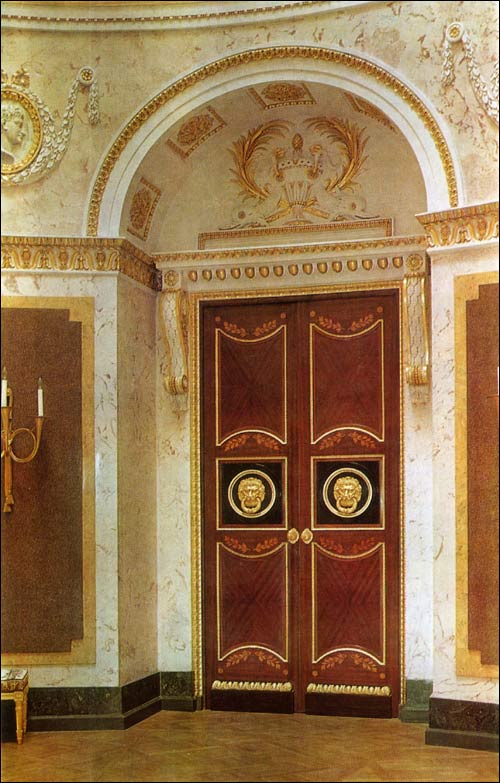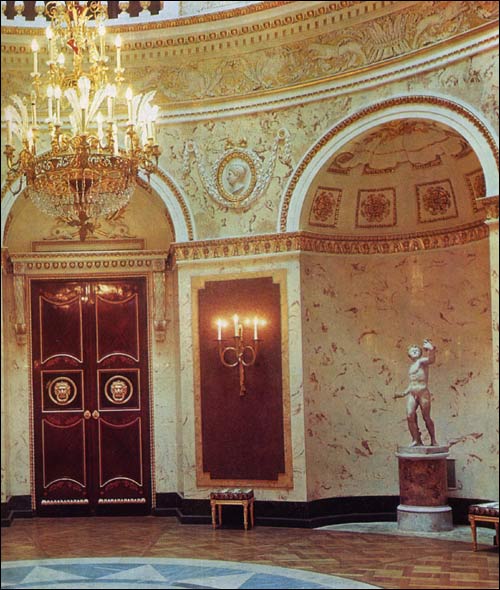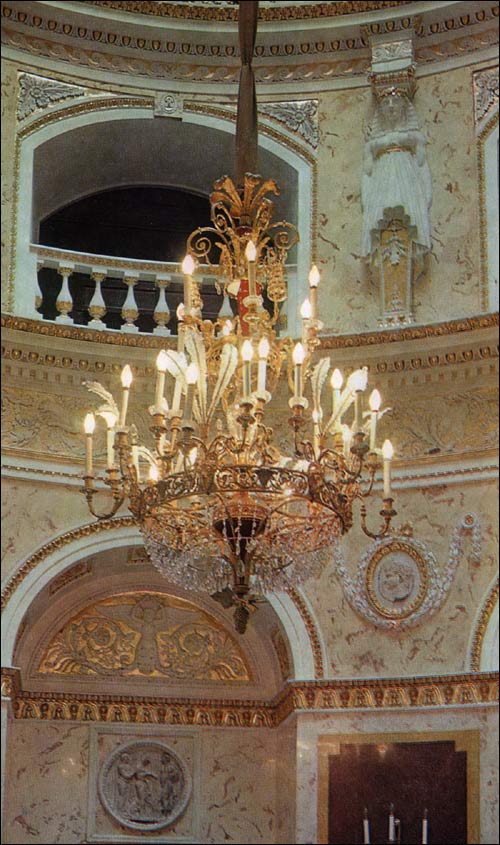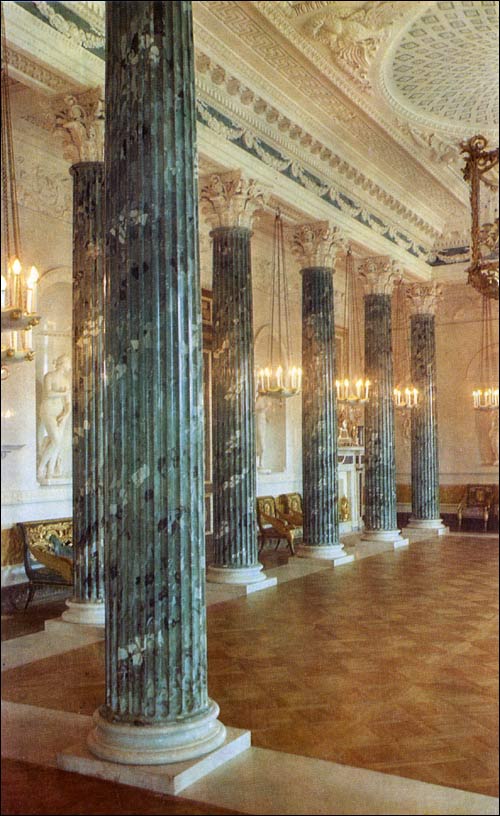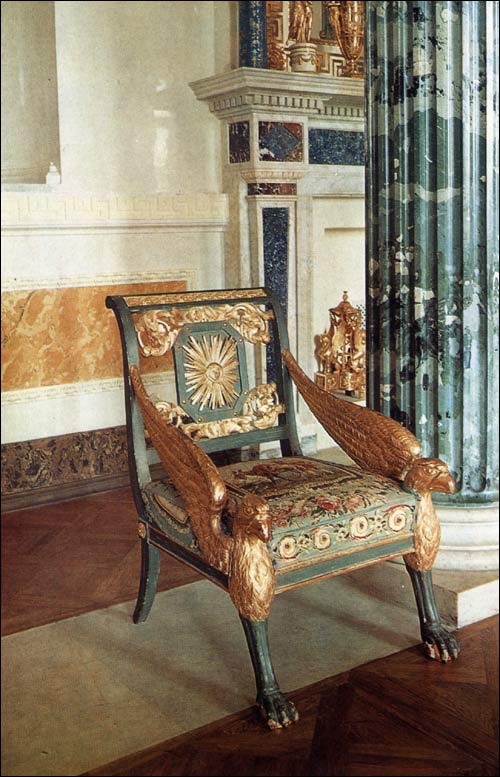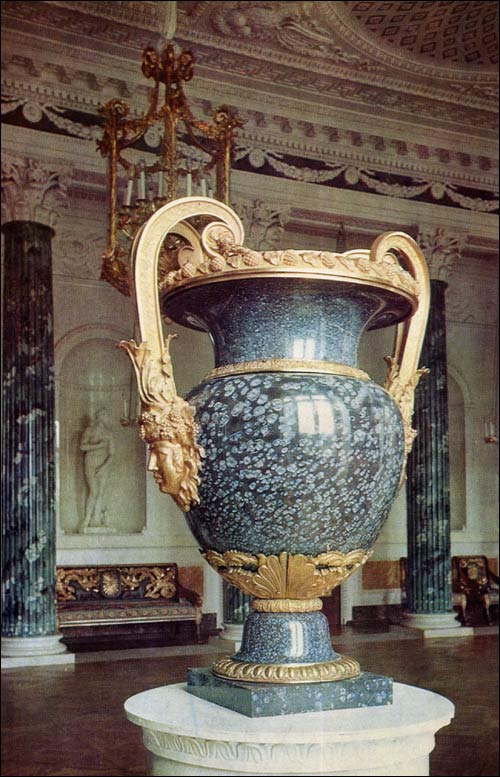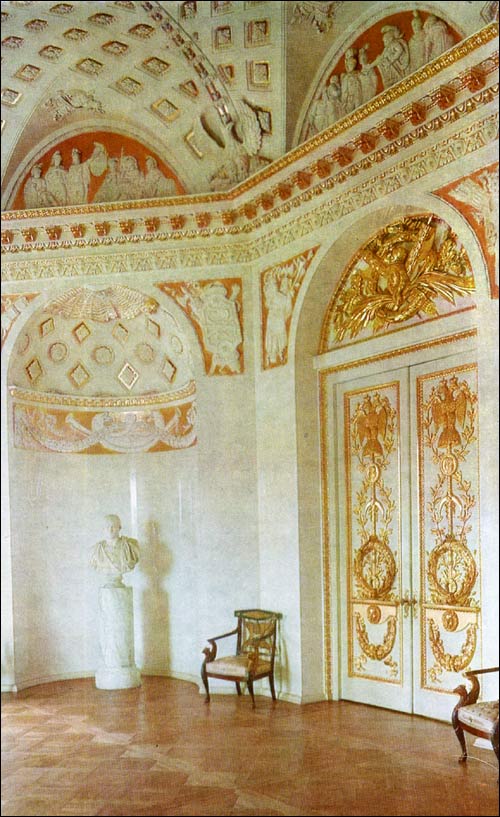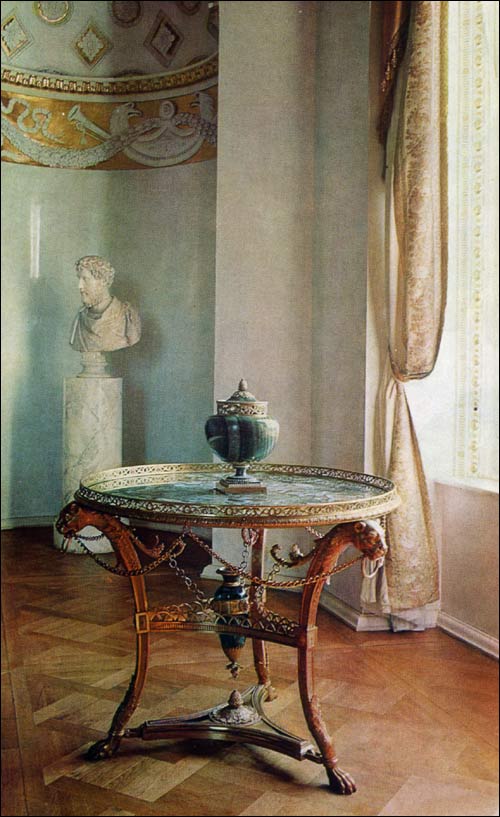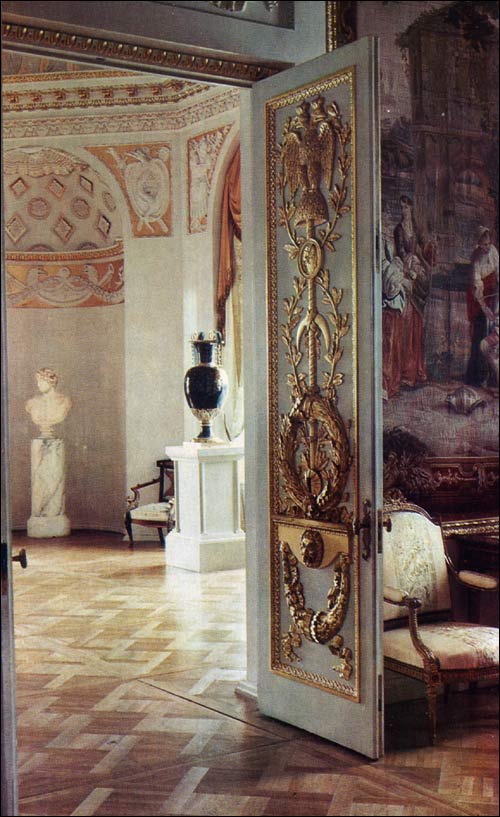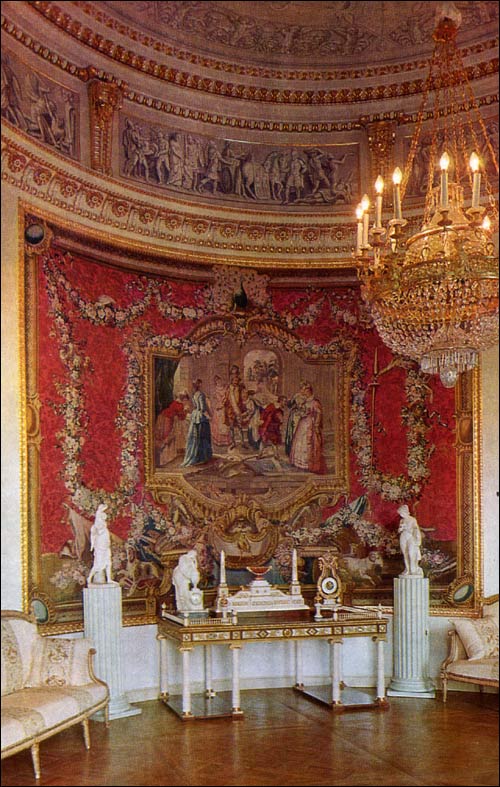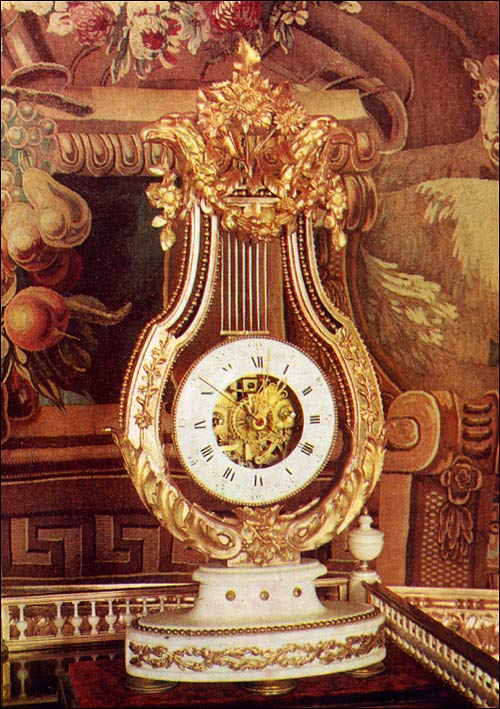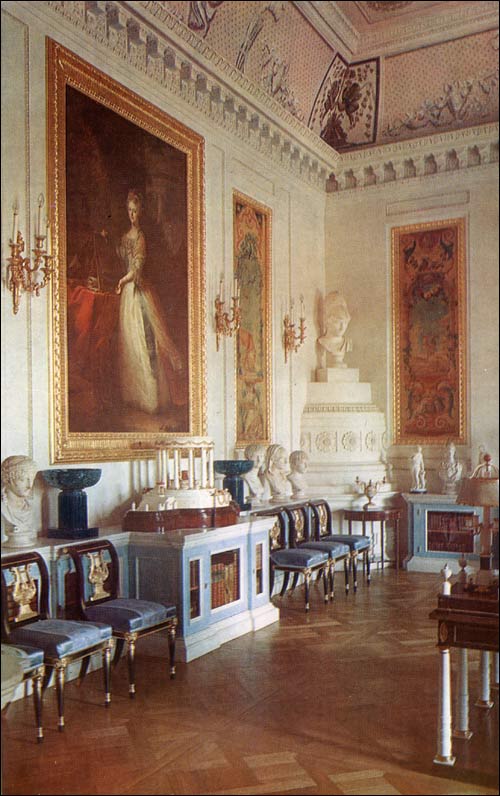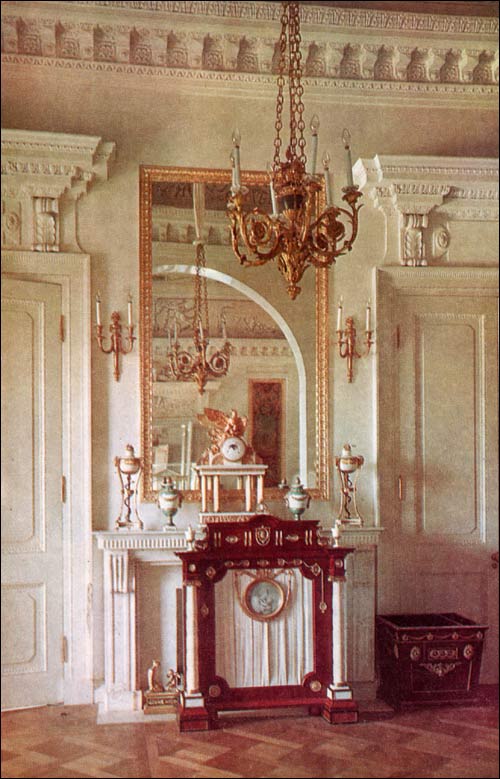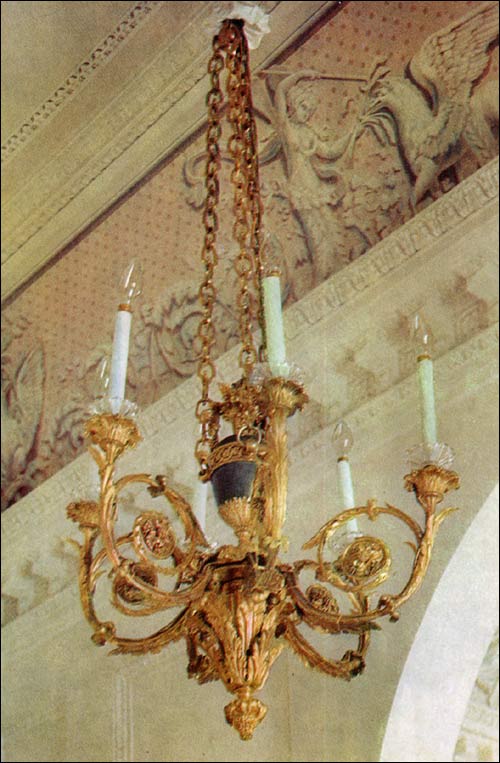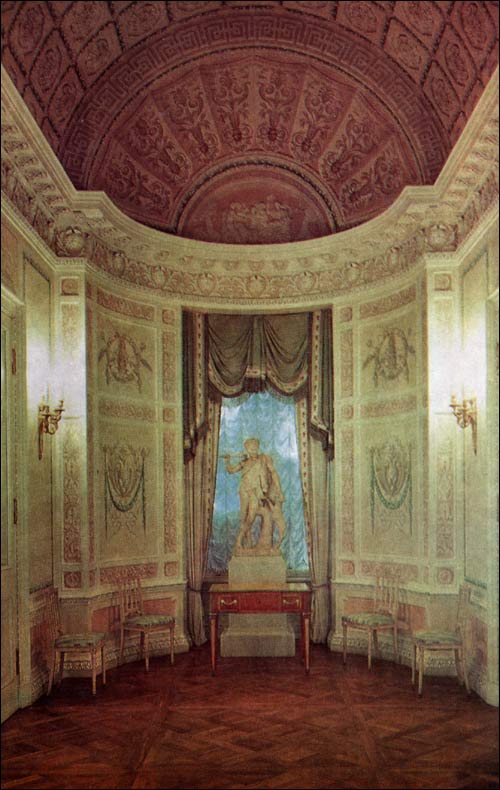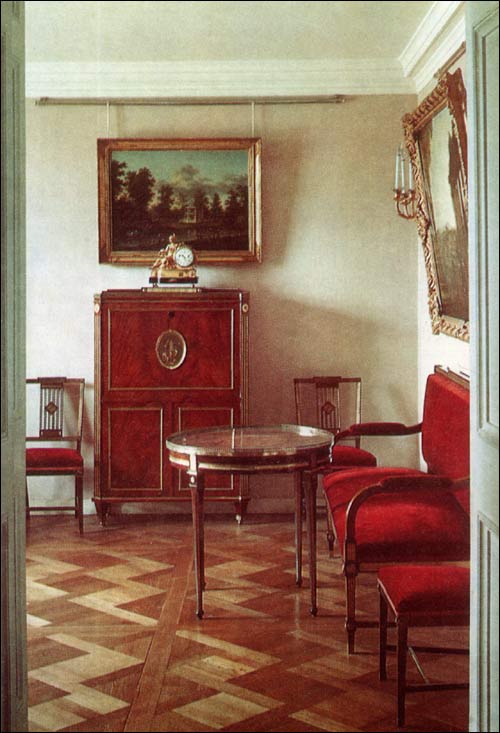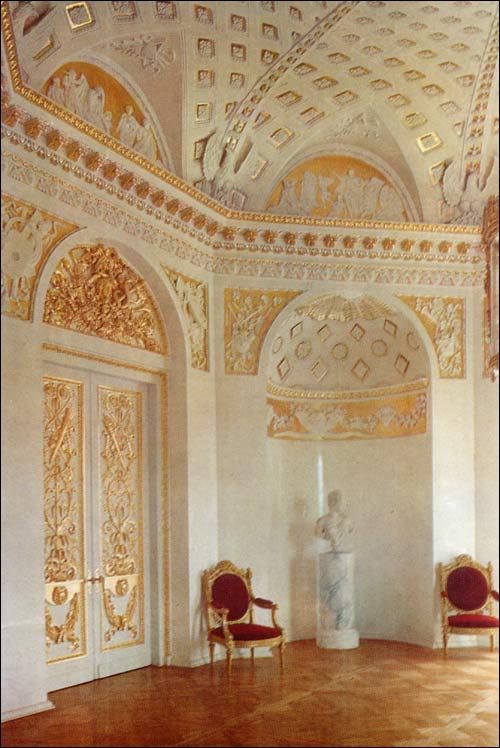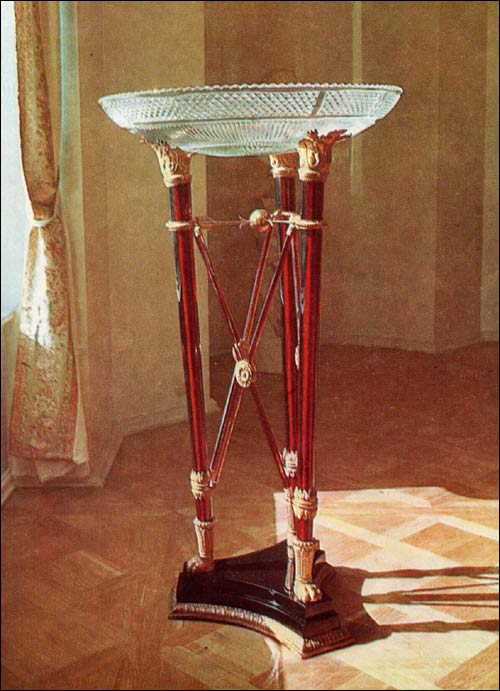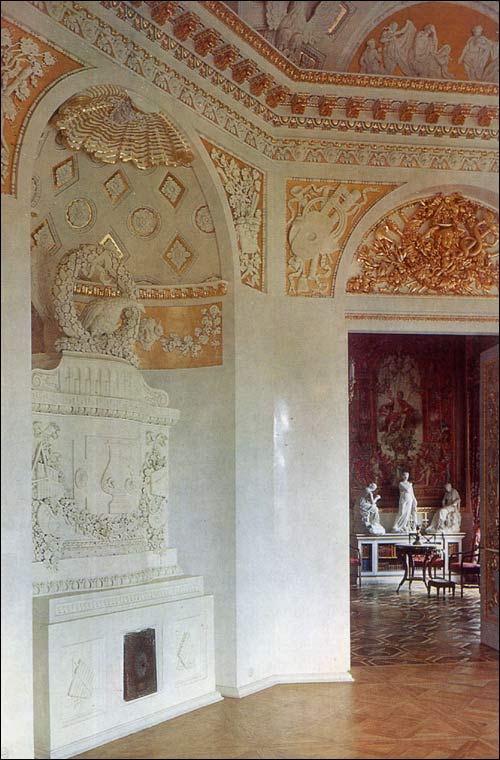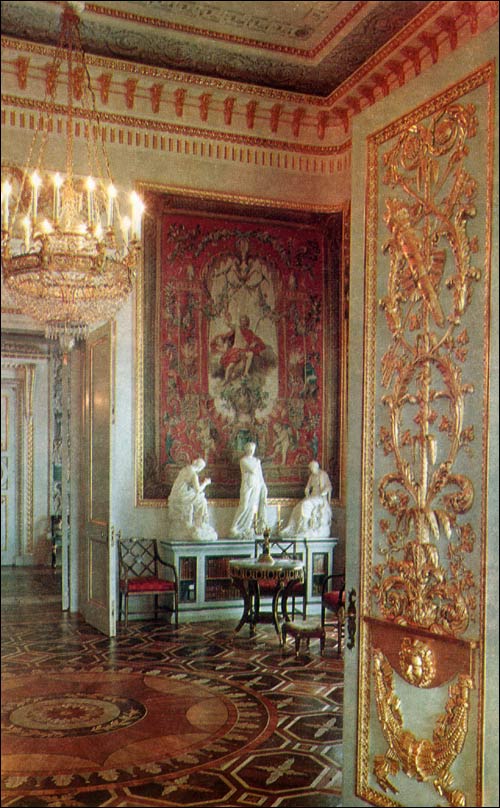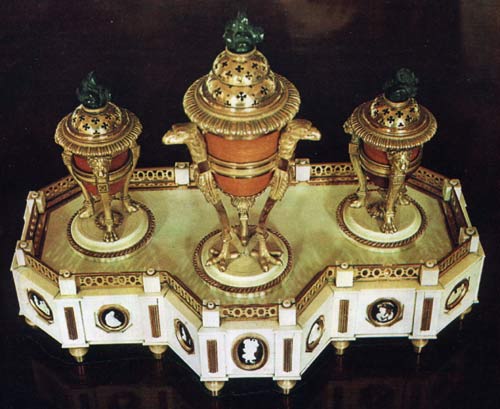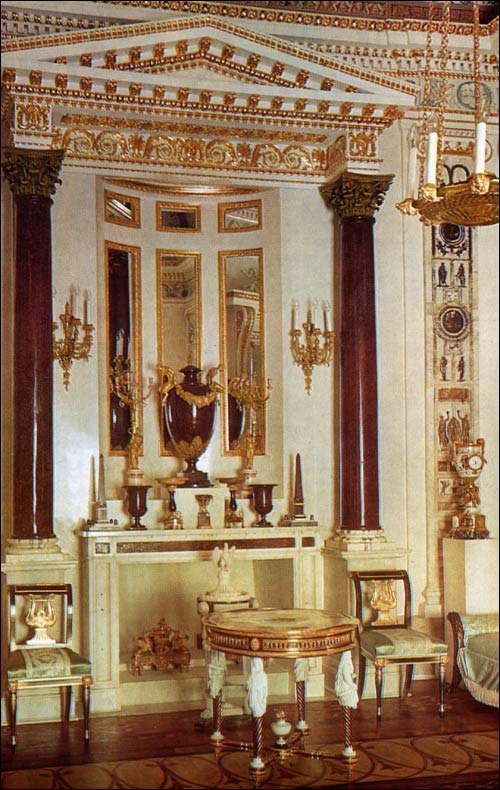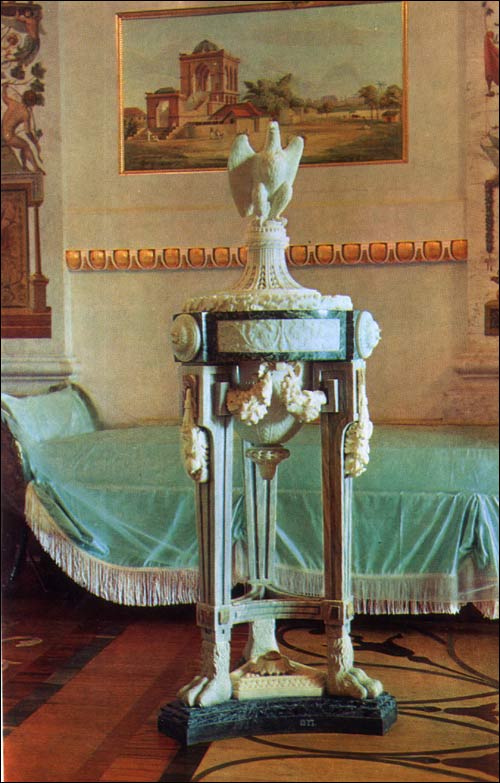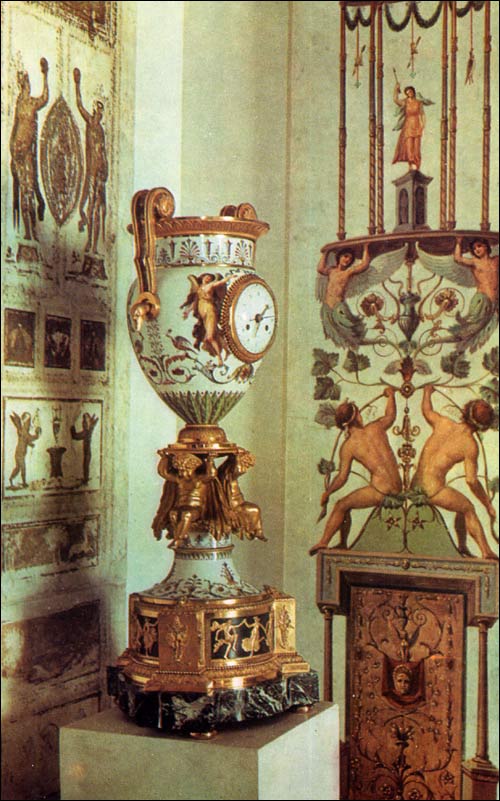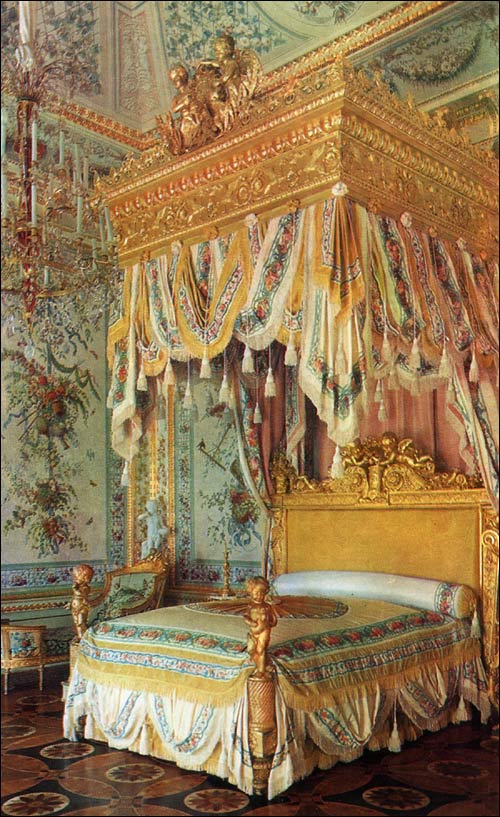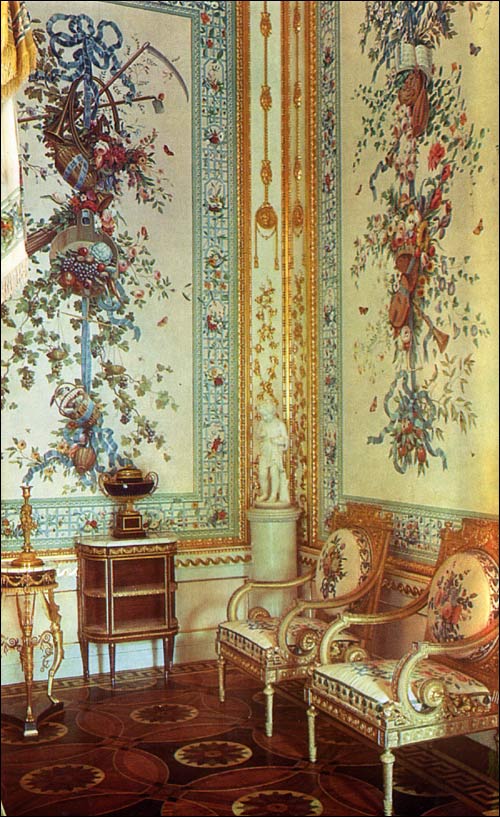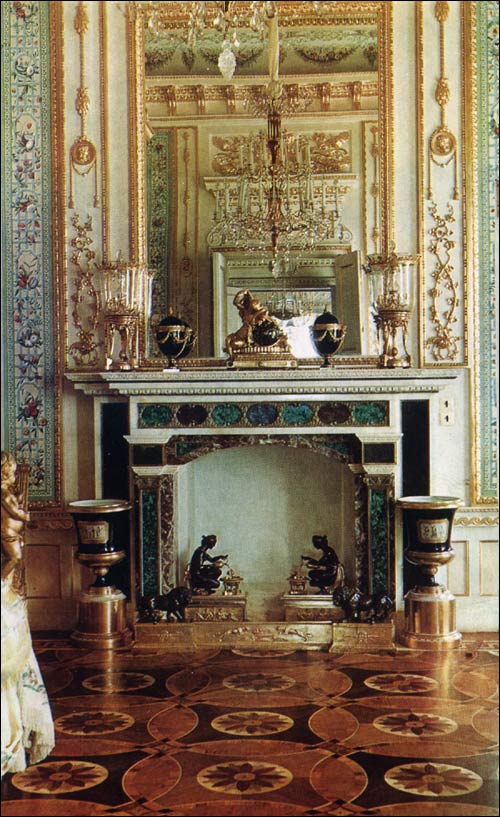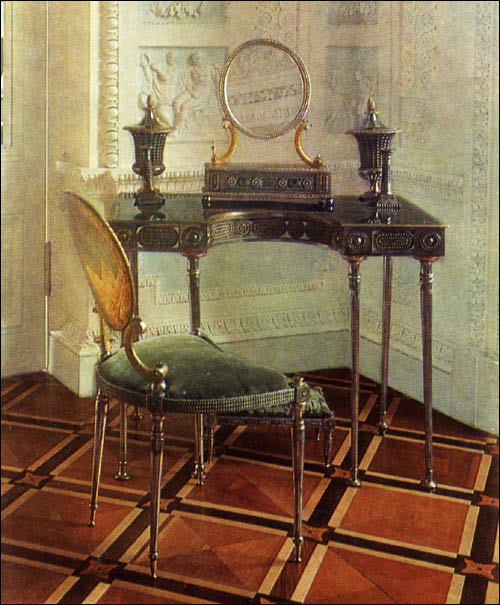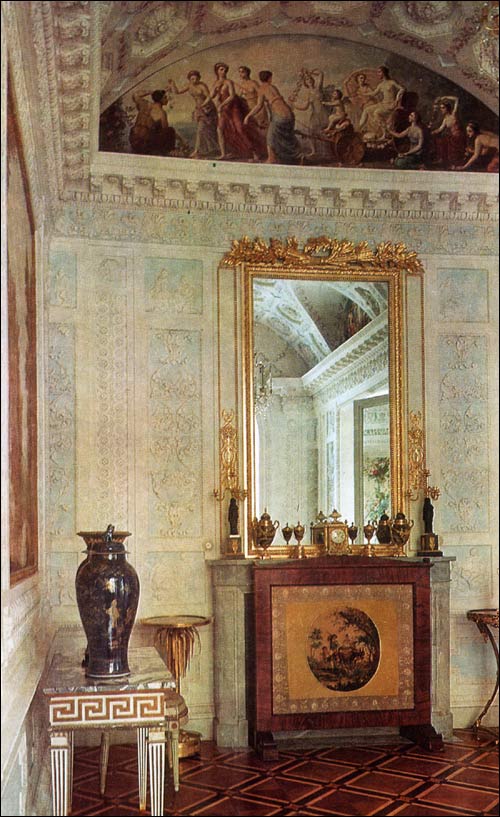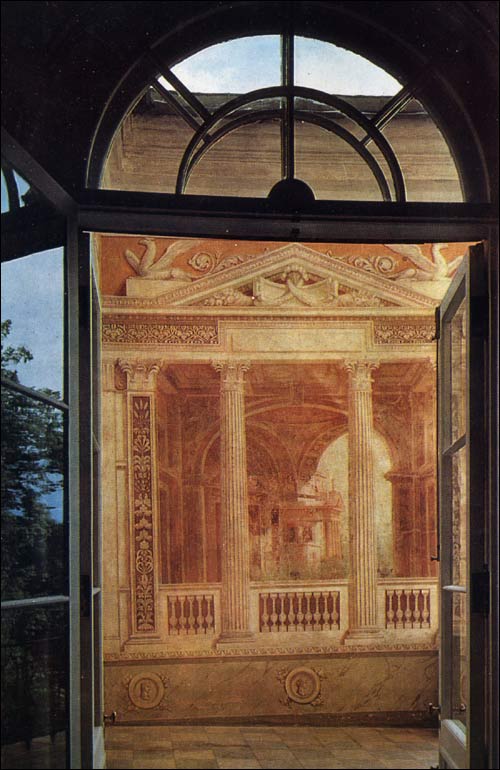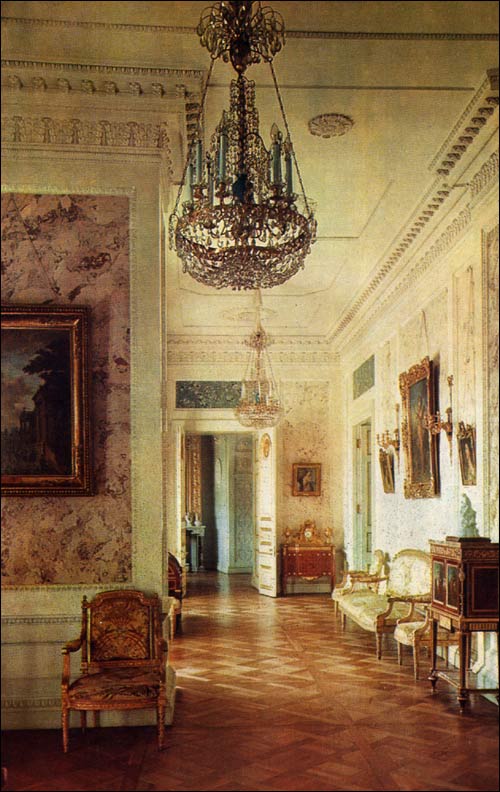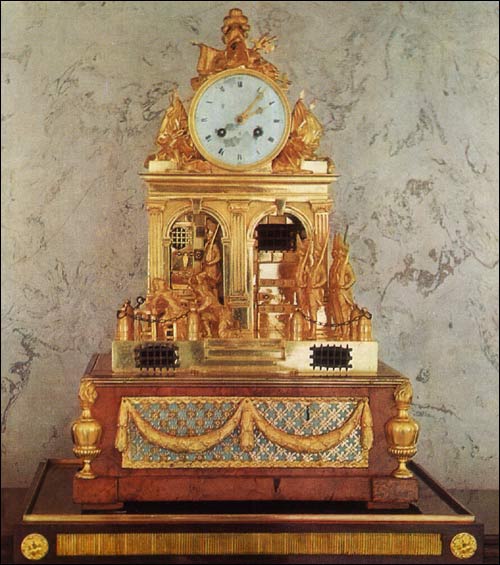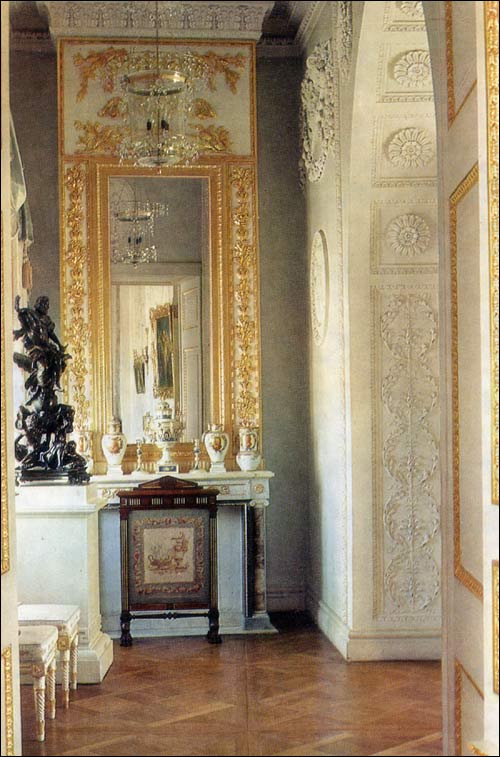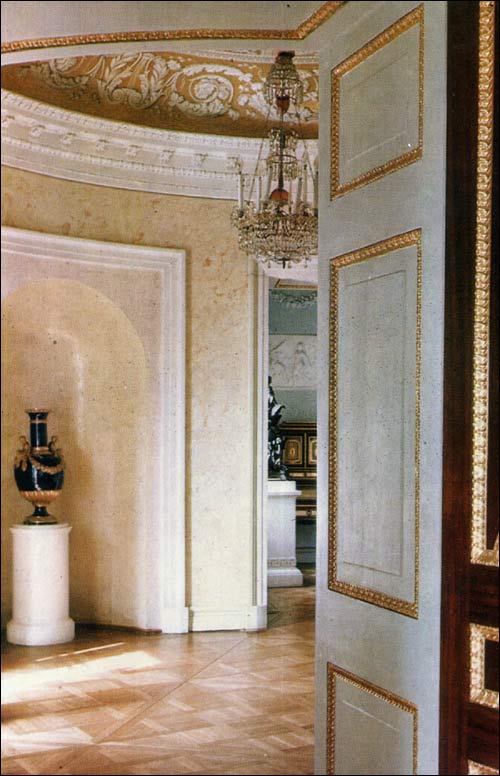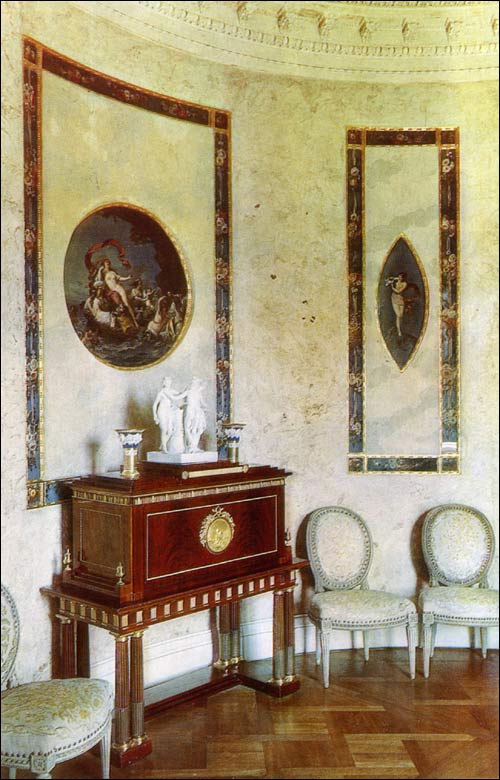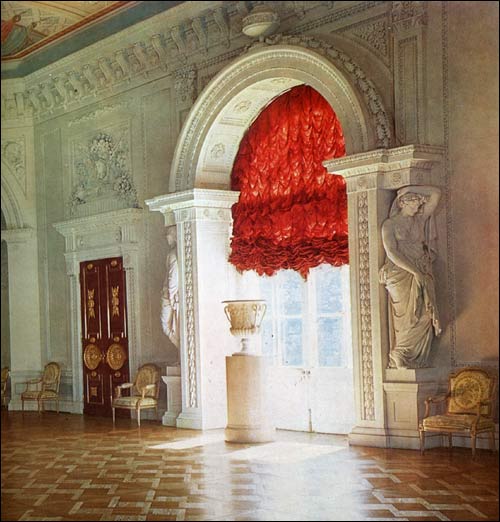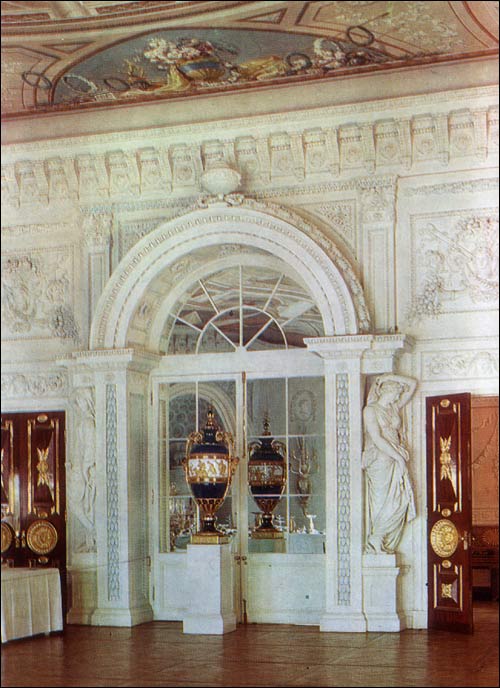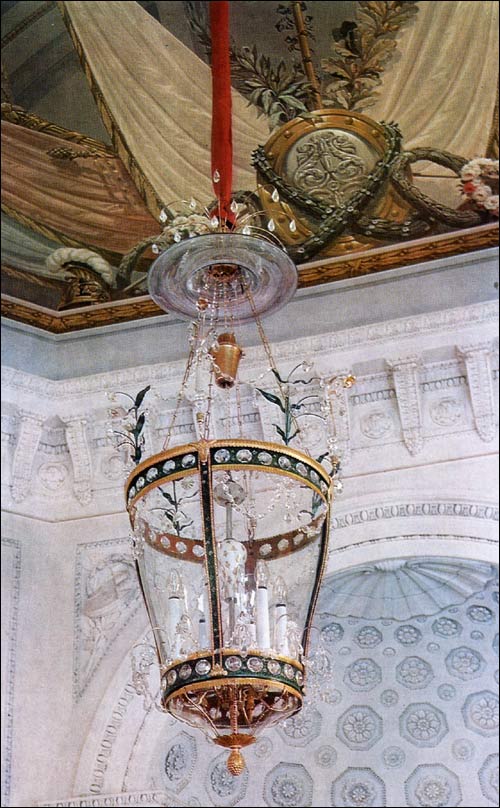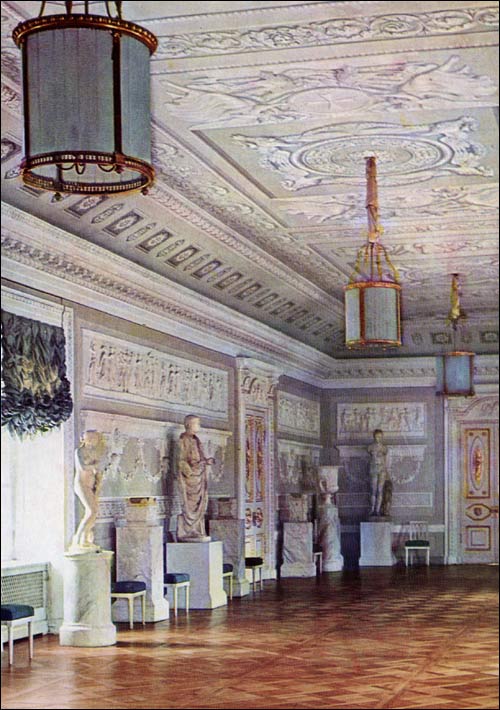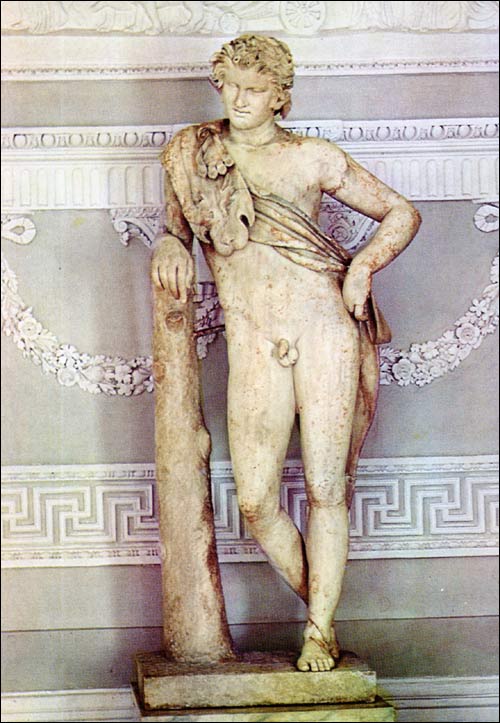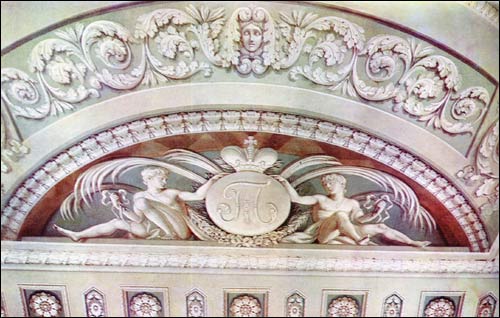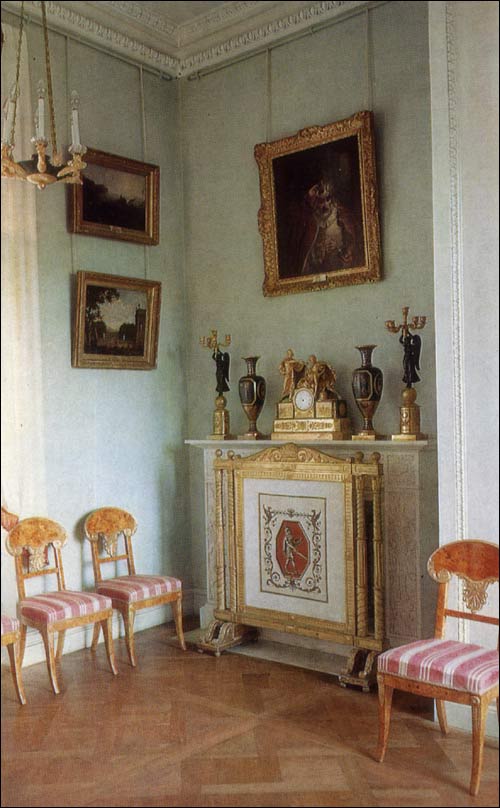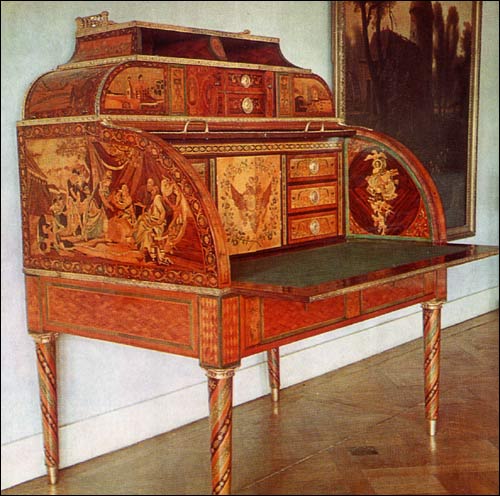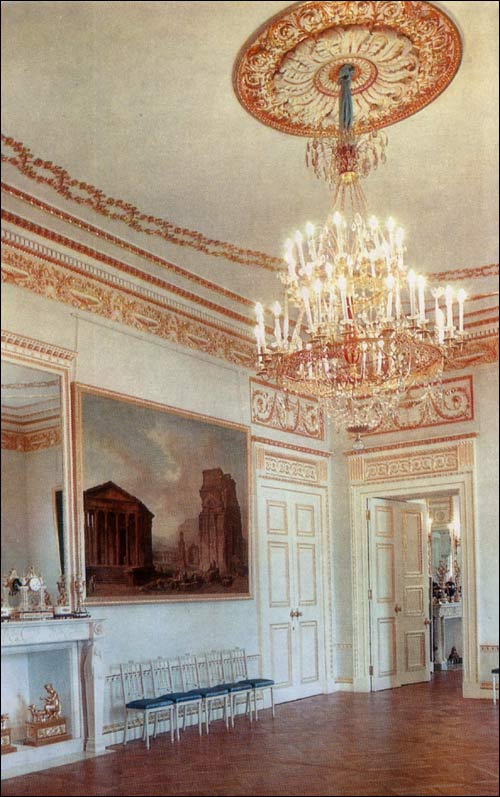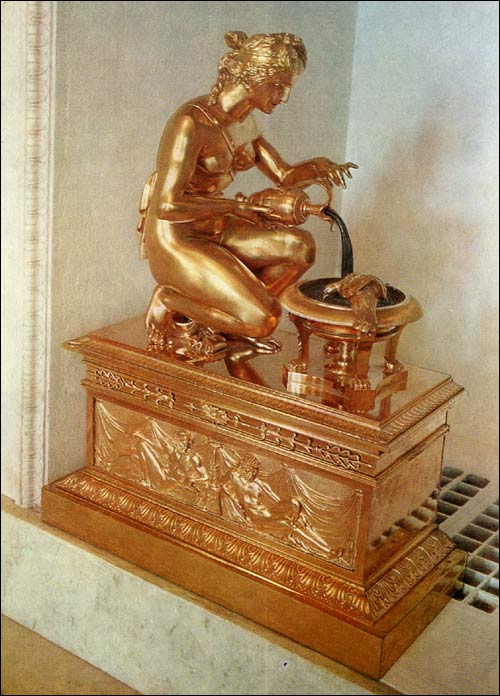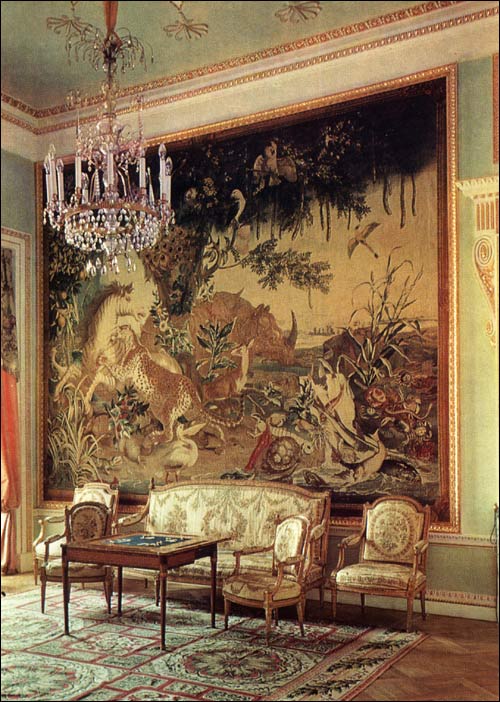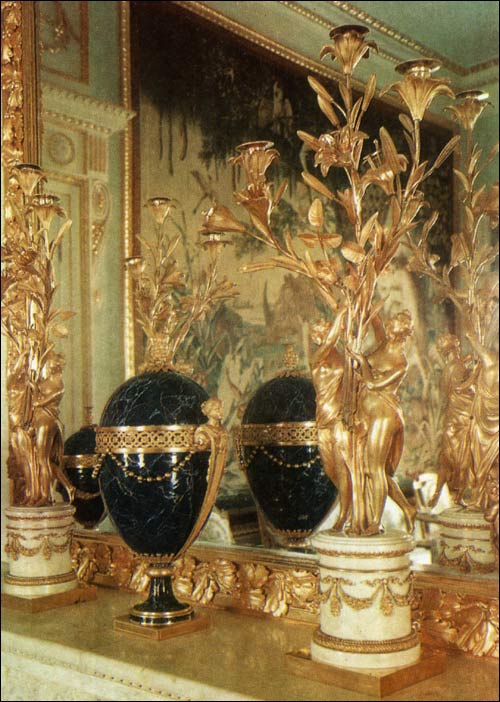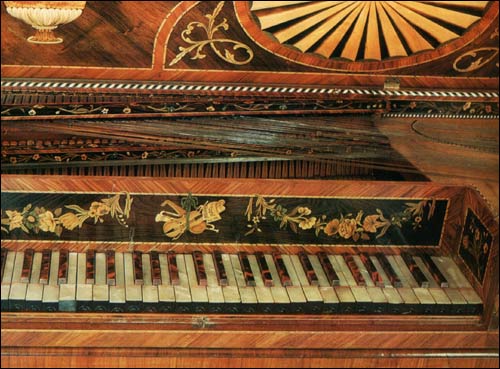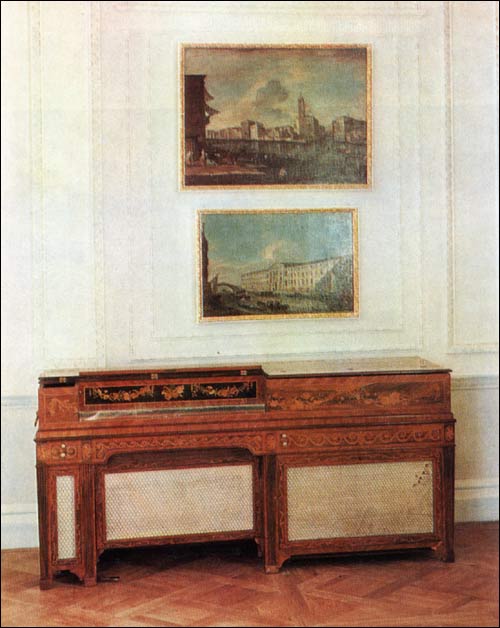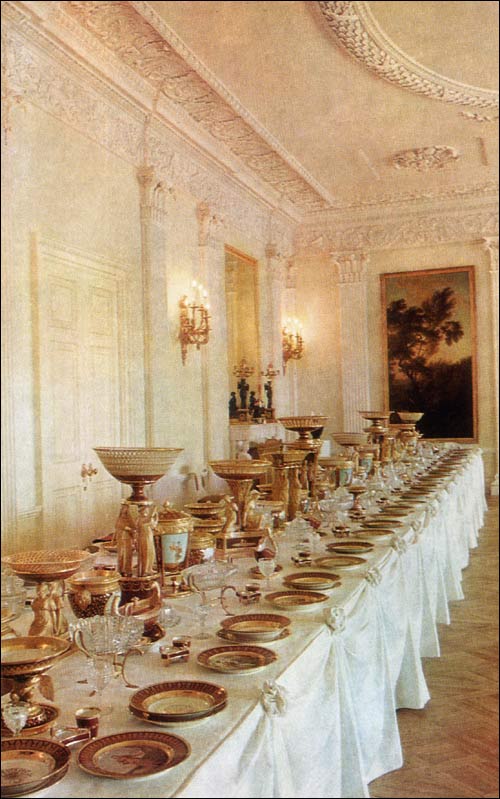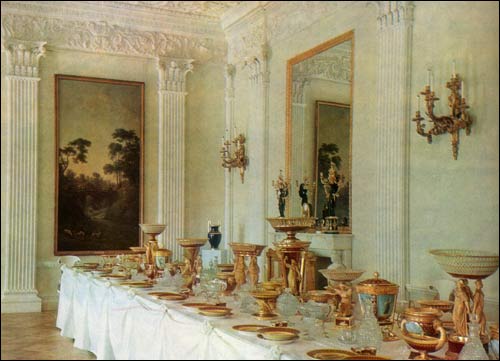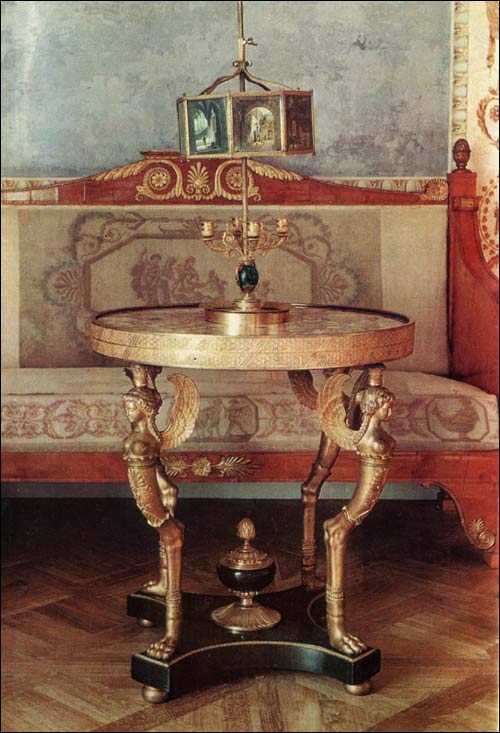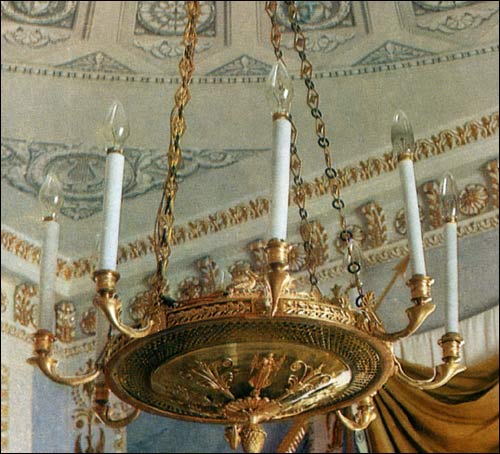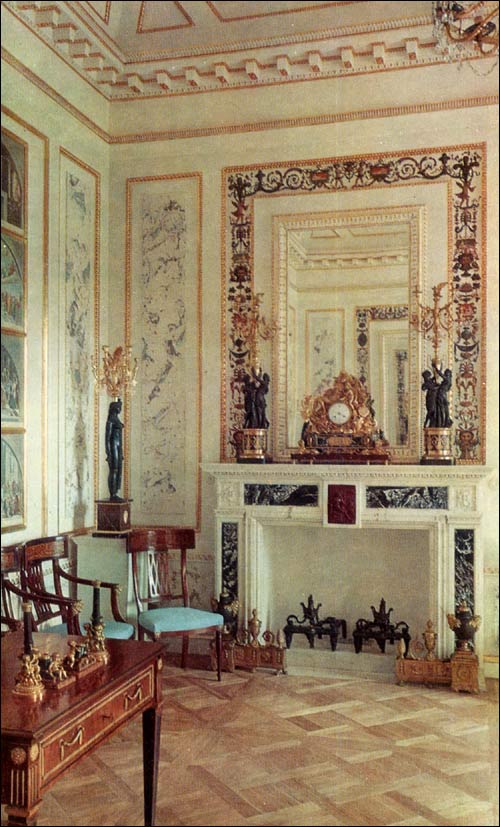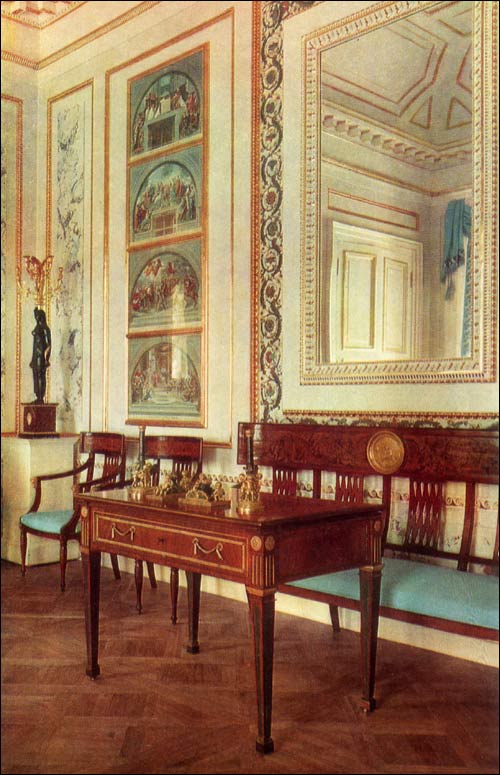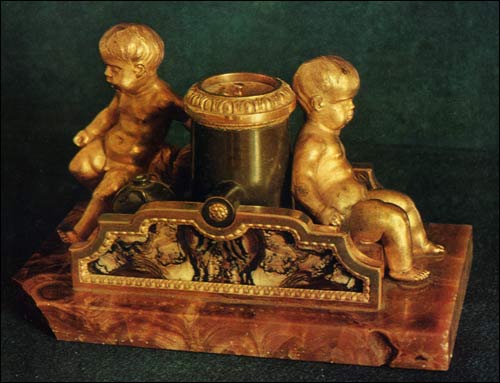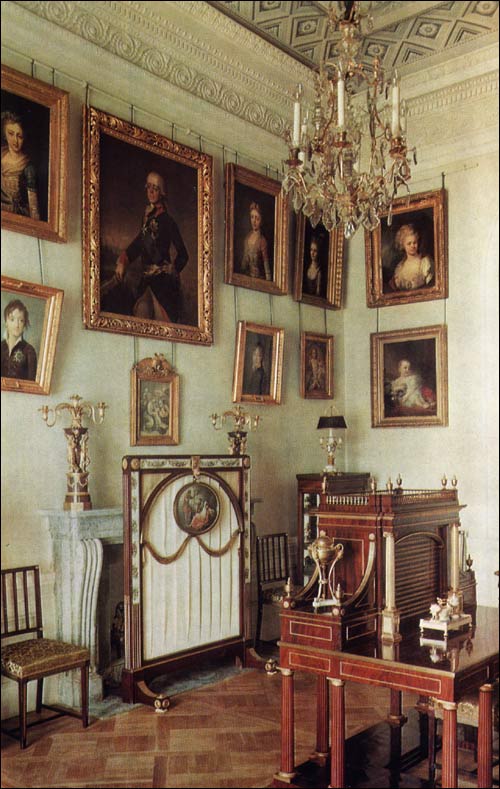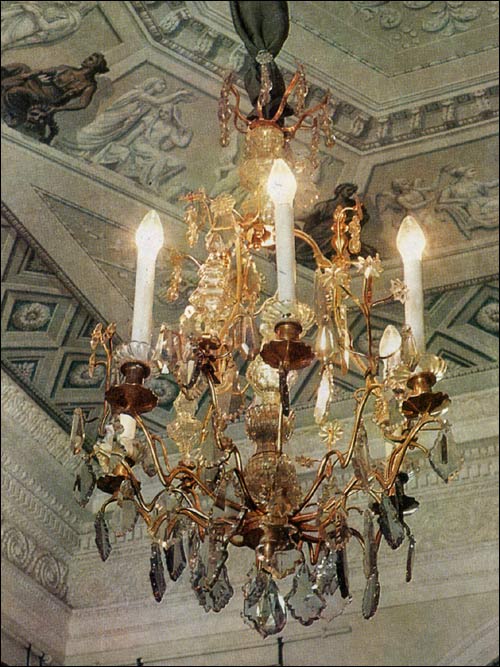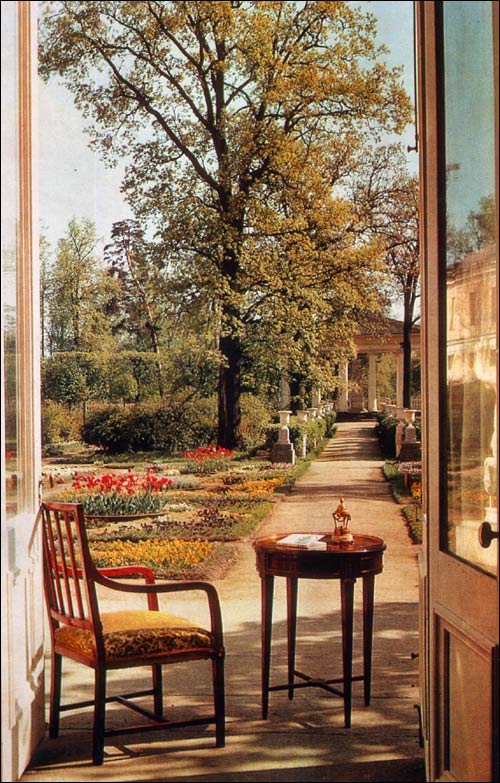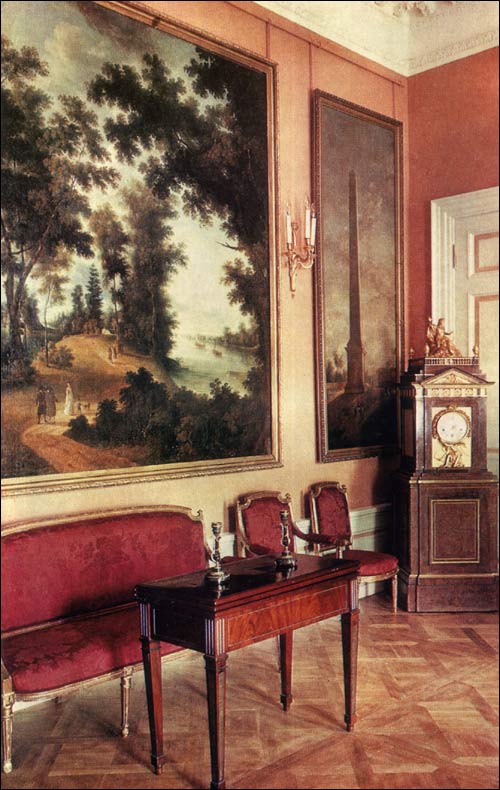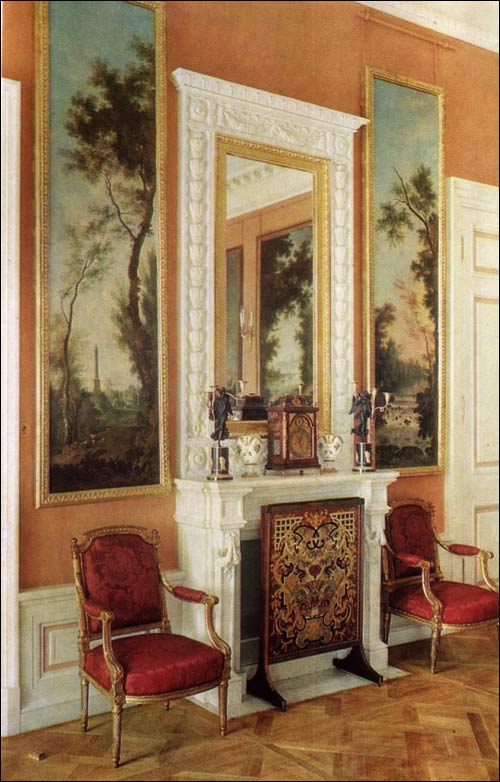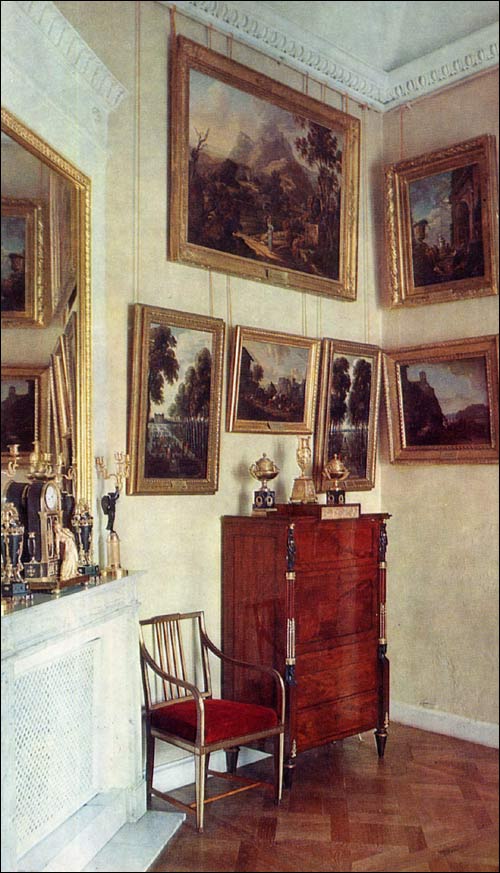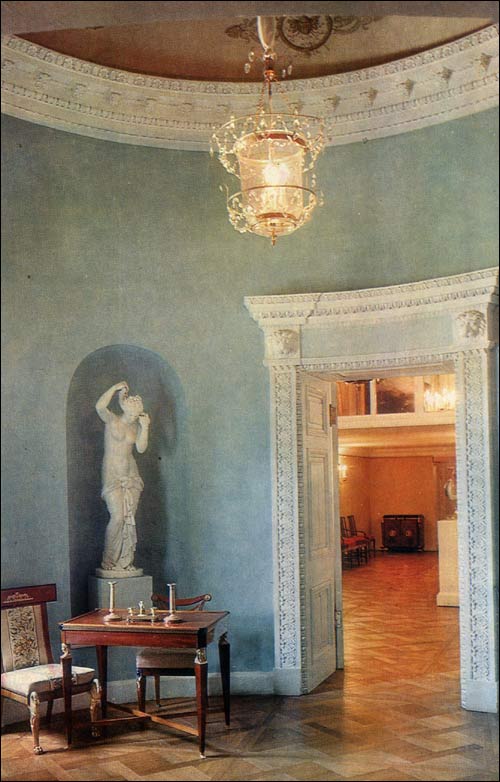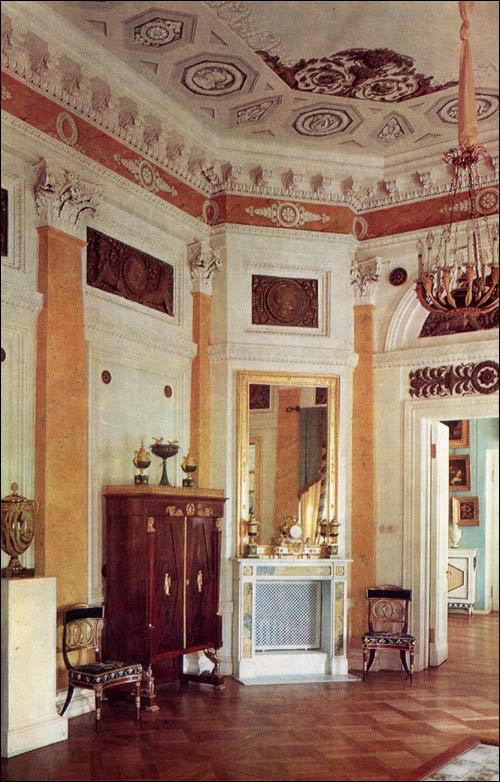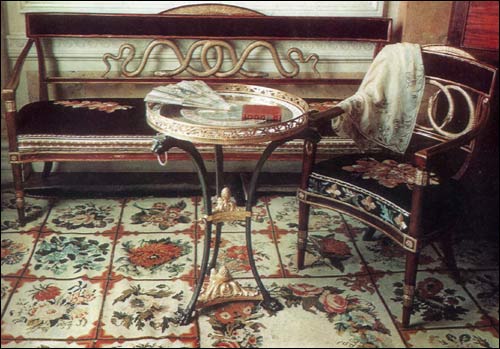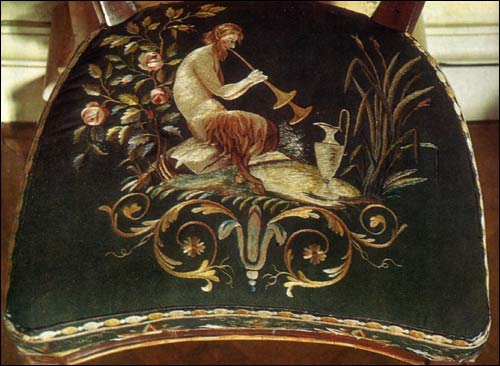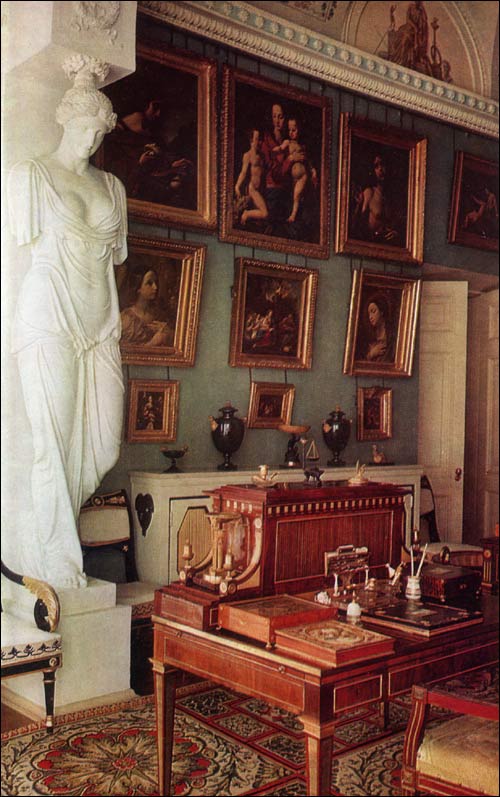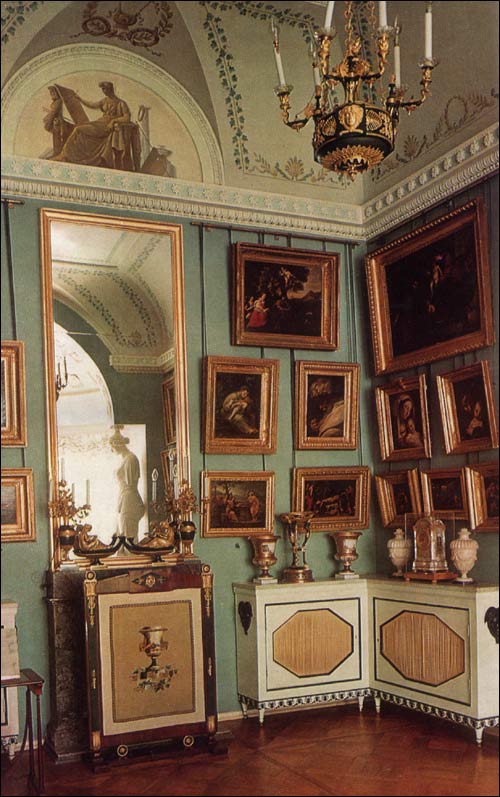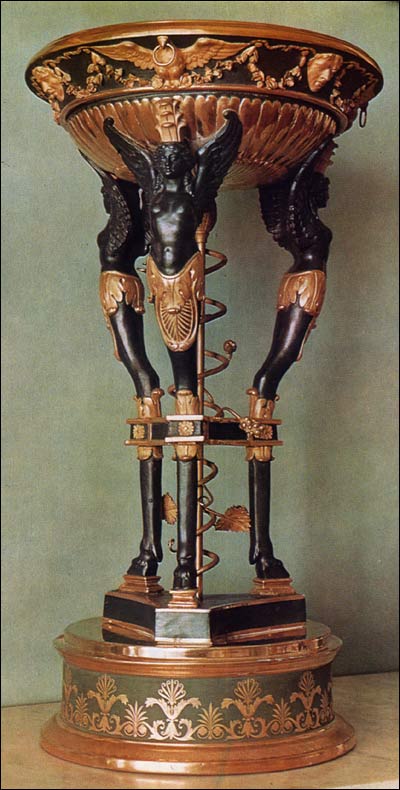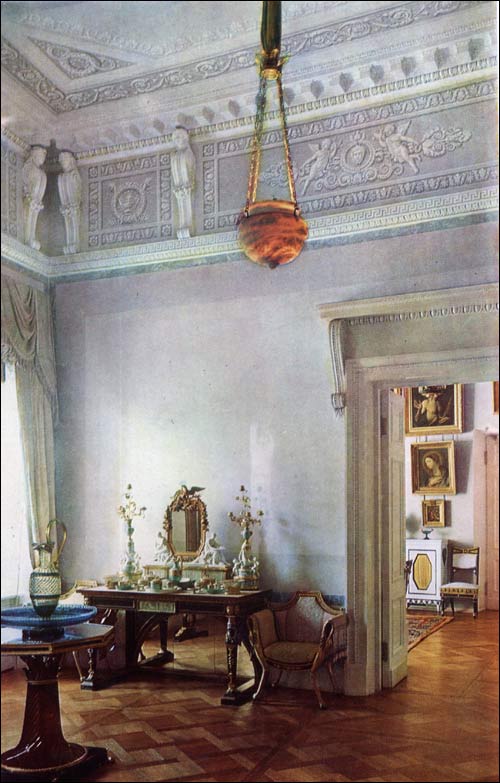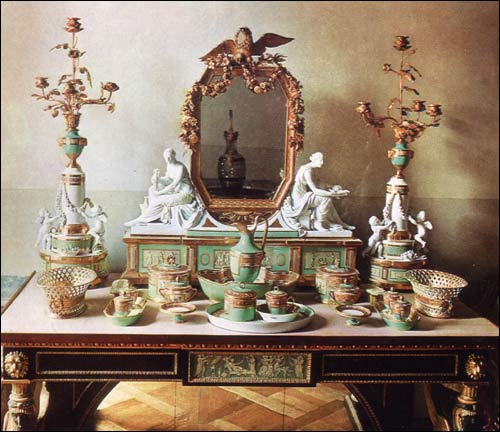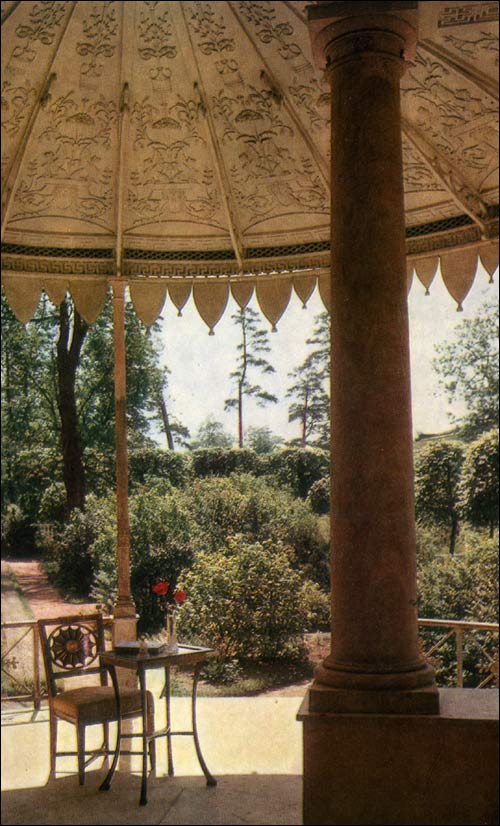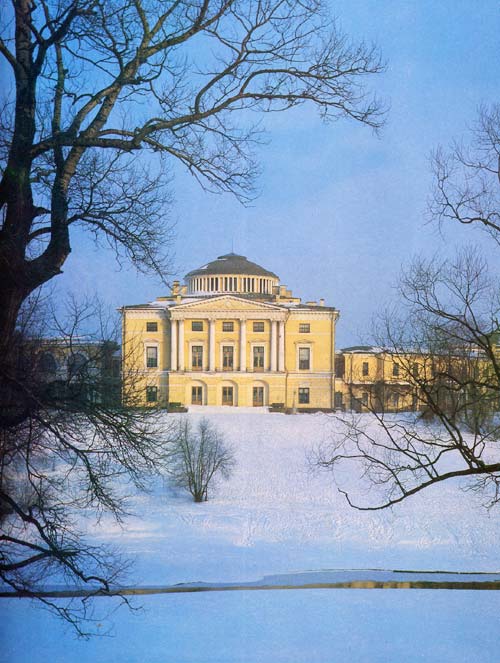CARI Infonet
Title: Istana Raja2 Sekarang? [Print this page]
Author: razifah Time: 12-7-2006 04:46 PM
Title: Istana Raja2 Sekarang?
Last week ader ke Pekan, Pahang n member tunjukkan Istana kat sana. Korang ade pic istana2 lain ker? letak lah kat sini bagi tgk.....Agak2nyer klasik ker istana-istana kat tempat lain tue? Mcm istana di zaman silam yg belajar masa sekolah ker?
Author: CRK Time: 12-7-2006 04:59 PM
razifah penah dengar istana kampong glam kat singapore?? istana sultan singapore dulu2. ada influence western architecture.. very classic...
Author: razifah Time: 13-7-2006 11:59 AM
Pernah dengar....tapi kalau tak silap dah tak terjaga kan?
Author: razifah Time: 13-7-2006 12:02 PM
Muzium Diraja Perak yang dahulunya pernah dikenali sebagai Istana Kenangan atau Istana Tepas Lembah mempunyai keunikan rekabentuk senibina yang amat mengagumkan. Ia telah dibina dengan cara tradisional tanpa menggunakan sebarang paku. Terletak berhampiran dengan Istana Iskandariah, iaitu istana rasmi Sultan Perak di Kuala Kangsar, muzium ini mempamerkan alat kebesaran Diraja, gambar-gambar kerabat Diraja, ilustrasi dan artifak-artifak pemerintahan beraja di Perak dari zaman dahulu sehingga kini.
Author: razifah Time: 13-7-2006 12:15 PM
http://www.malaysianmonarchy.org.my/portal_bm/rk7/rk7.php
Author: Dunhill. Time: 13-7-2006 01:07 PM
Seri Negara :






[ Last edited by Dunhill. at 13-7-2006 01:11 PM ]
Author: Dunhill. Time: 13-7-2006 01:09 PM
CARCOSA SERI NEGARA RELAUNCHES SERI NEGARA MANSION
As the invitation stated, there was truly a regal "return of elegance" with the re-launching of Seri Negara on 25th October 2002. After two years of meticulous restoration, this mansion resumed its rightful place as part of Carcosa Seri Negara, the only colonial boutique hotel in Kuala Lumpur.
The lawn of the palatial Seri Negara was the venue for hospitality in the style to which Carcosa Seri Negara has long been accustomed. Over 500 guests were present for the occasion, which was celebrated with non-stop entertainment that included jazz and brass band performances, singing by "the Malaysian Tom Jones" and a showcase of Celine's latest Spring / Summer 2003 collection. A lavish spread of food and drinks was served during the event, and complimentary stays at Carcosa Seri Negara's 13 exclusive suites were given away during the lucky draw as the party's finale.
Built in 1904, Seri Negara was originally called the "King's House" and was designated as the official residence of the Governor of the Straits Settlements. King's House was vacated by the British High Commissioner on August 31, 1957, and returned to the Malayan Government. It was then opened as a state guest house, known as Istana Tetamu, hosting many a visiting dignitary. In accordance with its elevated status, the building was renamed Seri Negara. Newly restored and refurbished to the highest contemporary standards of comfort, safety and convenience, this splendid residence has been universally recognised as an integral part of the national heritage.
Today, after a two-year renovation, Seri Negara presents its six historic suites enhanced by modern facilities. Retained in all its glory is the magnificent view of Kuala Lumpur's skyline. Traditional English afternoon tea with scones and strawberries is served at the famous Drawing Room on a Victorian silver three-tier carrier. As the only restaurant in Kuala Lumpur to feature fine-dining Malay cuisine, The Gulai House provides dining options at the revamped Seri Negara mansion. For conferences, meetings and seminars, guests needs can be catered to in style at Ledang I and II, and Jerai Suite.
The memorable event was graced by numerous leading lights of local society.
Author: Dunhill. Time: 13-7-2006 01:10 PM

Seri Negara Mansion Drawing Room
Author: Dunhill. Time: 13-7-2006 01:10 PM

Author: CRK Time: 13-7-2006 02:13 PM
istana kampong glam ketika kerja baikpulih...

[ Last edited by CRK at 13-7-2006 02:21 PM ]
Author: CRK Time: 13-7-2006 02:19 PM
istana kampong glam after renovation.. dah dijadikan sbg muzium.. malay cultural heritage..


[ Last edited by CRK at 13-7-2006 02:20 PM ]
Author: razifah Time: 13-7-2006 05:04 PM
Waaaa....dah cantik istana tue.....tq2.....
Author: razifah Time: 13-7-2006 05:05 PM
Menurut member2 ifa sultan pahang ader banyak istana.....negeri lain sama kot....
Author: unnamed Time: 17-4-2007 07:10 PM
ni istana johor....
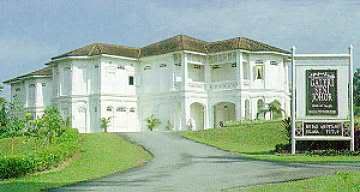
Author: medsworld Time: 17-4-2007 08:58 PM
dl g pahang
sultan pahang mmg de byk istana
siap wat utk isteri dia la
kalo x silap la
Author: HangPC2 Time: 17-4-2007 09:55 PM
itu dikira Istana Atau Banglo ???
Author: sayangidaku Time: 17-4-2007 11:50 PM
ekceli kt sini mana ada lagi istana zaman dlu2 yg tinggal kan?
yg ada skang pon takdela lama sgt. istana mana yg tertua kat mesia ek?
sbb istana dlu byk wat dr kayu...so msti reput n lama2 runtuh gak.
kalo la kat mesia ni org zaman dlu dah pandai wat bangunan dari batu mcm kat europe tu or at least mcm kat angkor wat or borobudur, msti dpt tngok lg istana lama2 ni. 
Author: babyhubby Time: 18-4-2007 11:25 AM

Bagi i la Istana Iskandariah Perak is the best architectural building among the other istana in malaysia.Bila i drive ke bukit chandan to,i mesti kagum.
Author: babyhubby Time: 18-4-2007 11:31 AM

Ini Istana Kenangan,terletak di Bukit Chandan.Bersebelahan dgn Istana Iskandariah.Yg mengkagumkan i is that,istana ini dibina tanpa menggunakan sebarang paku.
Author: babyhubby Time: 18-4-2007 11:41 AM


Ini adalah Istana Hulu atau lebih dikenali sebagai Muzium Sultan Azlan Shah.Sebelum dijadikan muzium,istana lama ini adalah Mazwin School for Ladies.
Author: unnamed Time: 18-4-2007 11:48 AM
yg ni istana alam shah kat selangor....
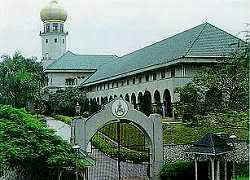
kaya btul sultan ni...membazir je wat besar2
Author: unnamed Time: 18-4-2007 11:59 AM
istana negara
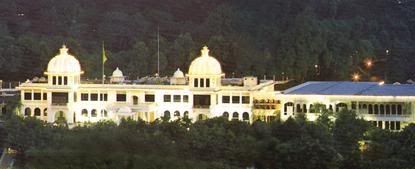
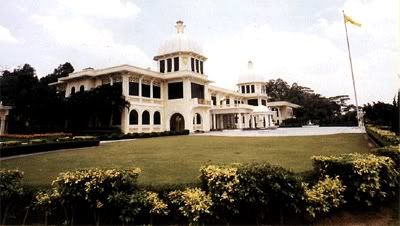
Istana Negara adalah tempat bersemayam Seri Paduka Baginda Yang di-Pertuan Agong dan Seri Paduka Baginda Raja Permaisuri Agong. Bangunan ini telah dibina dalam tahun 1928 dan asalnya adalah rumah kediaman seorang jutawan, iaitu Encik Chan Wing. Pada zaman pemerintahan Jepun dari tahun 1942-1945, bangunan ini telah digunakan sebagai Mes Pegawai Tentera Jepun. Selepas Jepun menyerah kalah, bangunan ini telah dibeli oleh Kerajaan Negeri Selangor dan selepas diubahsuai ianya dijadikan sebagai Istana Duli Yang Maha Mulia Sultan Selangor sehingga tahun 1957.
Kerajaan Persekutuan telah membeli istana ini pada tahun 1957 untuk dijadikan Istana Negara, tempat bersemayam Seri Paduka Baginda Yang di-Pertuan Agong dan Seri Paduka Baginda Raja Permaisuri Agong. Sejak itu, beberapa perubahan dan pembesaran dilakukan. Walau bagaimanapun, pengubahsuaian pada tahun 1980 adalah secara menyeluruh, kerana inilah kali pertama Istiadat Pertabalan Seri Paduka Baginda Yang di-Pertuan Agong dilangsungkan di Istana Negara. Sebelum ini upacara pertabalan dilangsungkan di Dewan Tunku Abdul Rahman, Jalan Ampang, Kuala Lumpur.
Bangunan yang agung ini terletak di perkarangan suatu kawasan permai lagi indah dengan pelbagai tanaman serta bunga-bungaan dan kolam renang dan sebuah dewan badminton bertutup dengan keluasan 11.34 hektar, di Jalan Syed Putra di tengah-tengah ibu negara Malaysia, Kuala Lumpur. Bangunan ini mengandungi beberapa ruang khas dengan fungsi dan tujuan-tujuan yang tertentu seperti dua buah dewan utama di tingkat bawah iaitu Balairong Seri dan Dewan Mengadap.
Keseluruhan kawasan ini berpagar dan jata Yang di-Pertuan Agong adalah diletakkan pada setiap jejari besi antara dua batang tiang sekeliling pagar. Di bahagian hadapannya terdapat pintu utama dan dibina menyerupai pintu gerbang yang indah. Di kiri kanan pintu gerbang ini didirikan pula dua buah pondok khas sebagai tempat berteduh pengawal berkuda yang memakai pakaian istiadat yang segak ala Buckingham, London.
Oleh kerana kawasan istana tidak terbuka kepada orang ramai dan pelancong mengunjunginya, maka kawasan Pintu Utama Istana adalah tempat yang paling digemari oleh pelancong mengambil gambar.
Author: babyhubby Time: 18-4-2007 12:36 PM
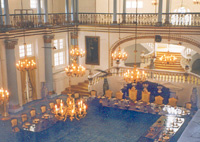
Royal Abu Bakar Museum
Author: babyhubby Time: 18-4-2007 12:42 PM
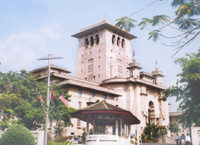
Sultan Ibrahim Building
Author: babyhubby Time: 18-4-2007 12:47 PM

Istana Besar is a royal palace of the Sultanate of Johor.
Author: babyhubby Time: 18-4-2007 12:48 PM

Istana Maziah Terengganu
Author: ct_og Time: 19-4-2007 07:18 PM
Dulu-dulu cuma raja dan sultan yang duduk kat istana... sekarang orang bukan raja dan sultan pun dah boleh duduk kat istana... malah mengalahkan Istana Diraja pulak.... emmm... rezeki masing-masing...
Author: skuter_buruk146 Time: 27-4-2007 10:29 AM
istana pahang tempat sultan bersemayam skarang aku dah masuk..gamba pun aku ade amik..
kalo sempat kang aku upload..
tapi honestly biase je aku rase interior die..
kami cube boleh amik gamba kesemua ruang kecuali satu bilik tue..penjaga tu cakap kalau sultan brunei datang, baginda disambut kat bilik tu..pastu tingkat atas kami tak boleh naik sebab situ area family sultan yang tinggal..misalnye,kalo diorang semua berkumpul, semua akan tinggal kat tingkat atas..pastu setiap bilik dikatakan ade dapur memasing untuk mudahkan diorang masak..
tapi aku rase interior die memang biase jea..cume yang nampak megah ialah sebab ruang dalam die tu ketinggiannye mencapai 6meter..perabotnye jugak memang mewah lea...
Author: jkkkj Time: 27-6-2007 08:00 AM
Originally posted by babyhubby at 18-4-2007 12:36 PM

Royal Abu Bakar Museum
Di istana inilah UMNO ditubuhkan pada 11 Mei 1946.
Author: TheBoss Time: 27-6-2007 12:50 PM
Originally posted by babyhubby at 18-4-2007 11:25 AM

Bagi i la Istana Iskandariah Perak is the best architectural building among the other istana in malaysia.Bila i drive ke bukit chandan to, ...
Bapak sedara aku ketua istana kat iskandariah nie...nampak dengan mata kasar...macam kecik jer (kalau ada yg dah lalu),tapi hakikatnya istana nie besar siap ada court tennis dalam tue...hehehehe
Author: Syd Time: 13-9-2007 09:16 AM
Istana Tengku Anjang Zahab terunggul di Asia Tenggara
ISTANA Tengku Anjang Zahab ini dibina pada akhir tahun 1880 iaitu semasa pemerintahan Tengku Chik Haji dan beliau merupakan Raja Palembang yang ketiga. Tengku Chik mendirikan istana ini di lokasi yang agak jauh dari Kota Palembang disebabkan istana lama di sana terbakar pada tahun 1844. Pusat pemerintahan yang baru ini terletak berhampiran dengan Sungai Besut dan orientasinya menghadap sungai.
Sejarah dan asal-usul pembinaan
Menurut sejarah, Istana Tengku Anjang Zahab ini dibina oleh Tengku Chik Haji lebih kurang 10 tahun lebih awal daripada Masjid Kampung Raja, yang berada di hadapan istana tersebut. Reka bentuk pembinaan istana ini dipengaruhi oleh seni bina Siam, Riau dan Islam. Namun begitu pengaruh Riau amat ketara pada reka bentuk istana ini kerana Tengku Chik adalah kerabat di raja Riau.
Perancangan dan konsep reka bentuk
Istana ini terdiri daripada kelompok rumah yang berasingan dan disambungkan dengan titian antara satu rumah ke rumah yang lain. Namun begitu, istana ini terbahagi kepada dua kelompok iaitu istana puteri dan rumah pengasuh.
Istana puteri ini terdiri daripada ruang balai rong atau ruang hadapan yang berfungsi sebagai tempat berkumpul para pentadbir istana untuk menjalankan sebarang perbincangan, rumah ibu atau ruang tengah adalah ruang peribadi hanya untuk kaum keluarga sahaja seterusnya rumah dapur dan ruang laluan. Rumah pengasuh pula mempunyai rumah ibu, selasar dan rumah belakang serta ruang jemuran.
Elemen reka bentuk dan bahan binaan
Keseluruhan istana ini dibina daripada kayu cengal dan bumbungnya dibina secara dua lapis dan dikenali sebagai bumbung limas Belanda. Tangga di dalam istana ini secara keseluruhannya mempunyai bentuk yang sama. Namun begitu reka bentuknya agak ringkas dan boleh disesuaikan menurut keadaan dan kegunaannya.
Dinding kayu bagi rumah puteri amat menarik yang menggunakan kaedah pemasangan janda berhias dan tindih kasih manakala bagi rumah pengasuh pula ialah daripada dinding sasa secara tindih kasih serta berbentuk menegak dan dibina dari kayu cengal.
Pintu istana ini pula dihiasi dengan kelarai yang bermotifkan tumbuhan-tumbuhan. Istana ini tidak mempunyai pembukaan yang banyak kecuali pada rumah pengasuh dan agak kecil ukurannya iaitu lebih kurang empat kaki dari paras lantai.
Struktur pembinaan berdasarkan kepada struktur tiang rasuk dan alang tetapi kesemua tiang yang digunakan dibina daripada kayu cengal. Kedudukan aras lantainya lebih kurang lima kaki tinggi dari permukaan tanah dan berbeza dari rumah tradisional biasa.
Kesimpulan
Istana Tengku Anjang ini menggambarkan seni bina yang dianggap unik bukan sahaja dari aspek kronologi sejarahnya tetapi juga dari aspek reka bentuk terutamanya dari aspek penggabungan seni bina pelbagai bahasa. Ia memaparkan hasil karya seni bina yang berbeza dan merupakan hasil warisan seni bina terunggul di rantau Asia Tenggara ini.
- Prof. Dr. Mohamad Tajuddin Mohamad Rasdi ialah Pengarah Pusat Kajian Alam
Bina Dunia Melayu (Kalam), Fakulti Alam Bina Universiti Teknologi Malaysia (UTM), Skudai, Johor.
Author: joyahglam Time: 13-9-2007 12:38 PM
fungsi istana ni, kalau buat mcm zmn dulukala kan best,
dimana rakyat jelata blh dtg mengadap. skrg ni semua tu dah takder..
mcm yg tgk dlm filem2 jln ampas. sbnrnya cukup kagum pd sejarah melayu
tentang cara kehidupan dan lain2. walaupun rakyat takderlah kaya mana kan..
Author: sutera_abadi Time: 14-9-2007 01:13 PM

Istana Singapura semasa "Open Day"
Author: sutera_abadi Time: 14-9-2007 01:17 PM
Front View Istana Singapura di Orchard Road
Author: sutera_abadi Time: 14-9-2007 01:25 PM
Ariel View of Kampung Gelam, Singapura
Author: dCrook Time: 14-9-2007 03:51 PM
Title: Reply #35 sutera_abadi's post
b4 this nampak cam setinggan jek, nasib la direnovate balik
[ Last edited by dCrook at 14-9-2007 04:02 PM ]
Author: terrylai Time: 14-9-2007 10:48 PM
ya ker? saya rasa bukan mcm tu
Author: isyahlola1211 Time: 10-12-2008 04:03 PM
nyc architecture..
Author: dCrook Time: 10-12-2008 04:46 PM
Title: Reply #27 ct_og's post
hoho, zaman dlu, rakyat2 takot nak buat rumah batu walaupun ade duit sbb takot kang raja2 marah, ye la, umah dia lagik best dari umah raja 
Author: shawbrother Time: 10-12-2008 06:52 PM
Ni plak Istana Kellie :

Author: lizz_7777 Time: 10-12-2008 09:51 PM

History of Pavlovsk
Among the great historico-cultural complexes in the environs of Leningrad the latest to be created was Paviovsk. Its fame rests on the splendour of the palace with its classical architecture, its sumptuous interiors and great art collections, and on the beauty of the spacious park, which covers around 1,500 acres and is one of the country's largest and most picturesque. A country residence of the Russian imperial family, it was created by a succession of outstanding architects, painters and sculptors within a relatively short span of time: begun around 1780, it was virtually completed by 1825. Construction was started and the first variant realized by the architect Charles Cameron, after whom his ideas and general design were developed and carried out by Vincenzo Brenna, Giacomo Quarenghi, Andrey Voronikhin, Thomas Jean Thomas de Thomon, Carlo Rossi, Pietro Gonzaga and others. Men of rare talent and superior culture, they built up a complex characterized by exceptional unity of style, however different their artistic individualities and aesthetic ideals.
Above: Unknown Artist of the 19th Century
Obelisk Commemerating the Foundation of Pavlovsk
Watercolor, 26 x 34cm
Pavlovsk Palace Museum
The Pavlovsk park, now one of the finest examples of landscape gardening, was laid out on a tract of land covered with swamps and forest. Its numerous decorative pavilions and remarkable statuary have been skilfully introduced into a landscape background; nature and art are blended here in the utmost harmony. In addition to the galaxy of talented architects who built Pavlovsk. such eminent sculptors as Ivan Prokofyev, Fiodor Gordeyev, Ivan Martos, Mikhail Kozlovsky and Vasily Demuth-Malinovsky contributed to the decoration of the park and of the palace.
Its palace and landscape park are not the only remarkable features of the Pavlovsk complex. Most important are also the rare collections of furniture, artistic textiles, objects in hard stone, in porcelain, crystal glass and ivory, decorating the exquisitely furnished interiors. Exceptionally rich and varied, these collections have long since assured the Pavlovsk Palace a place of honour among the country residences of Russia. Gathered together here are specimens of the highest order of every existing form of line and applied arts, both Russian and those of many other lands. However individual in themselves, these objects were used in interior decoration to create an artistic unit in a way which shows the relined taste and high skill of the architects.
The formation of the Pavlovsk complex took place during a momentous period in the history of Russia, marked by the glorious victories of the Russian armies under the generalship of Suvorov, Rumiantsev and Admiral Ushakov, and the crushing defeat of Napoleon in the Patriotic War of 1812; and its style rellects the spirit of the epoch.
In the early 1800s Pavlovsk came to be what may be called a Russian Parnassus, a place where prominent writers and poets forgathered. Among those who often visited and stayed at Pavlovsk were Vasily Zhukovsky, the poet, author of The Slavianka, an elegy praising the beauties of the park, Ivan Krylov, the fabulist, Nikolay Karamzin, the historian, Yury Neledinsky-Meletsky, the poet, and suchl writers as Nikolay Gnedich, Fiodor Glinka and Pavel Svinyin.
[ Last edited by lizz_7777 at 11-12-2008 12:13 AM ]
Author: lizz_7777 Time: 10-12-2008 09:56 PM
Nearly two hundred years have passed since the beauty of the Pavlovsk Palace and the lyric charm of its park first began to attract the attention of artists. Many a canvas, watercolour and engraving of the place have been left us by such outstanding painters and graphic artists as Semion Shchedrin, Andre Martvnov, Mikhail Ivanov, Johann Jakob Mettenleiter, Carl Kogelgen, Gavriil Sergeyev, Timofey Vasilyev, F. Filipson; and later, by Ivan Shishkin, Iosil Krachkovsky, Anna Ostroumova-Lebedeva, Alexander Benois, Vladimir Konashevich, Leonid Khizhinsky, and others whom we count among our contemporaries.
Above: A. Bugreyev
View of the Palace from the Marienthal Pond
Watercolor, 40.5 x 55cm
From the Atlas of Pavlovsk Palace, 1803
Pavlovsk Palace Museum
The importance of Pavlovsk to the history of Russian culture and art extends lar beyond that of a "historic home". Its art collections enjoy world-wide fame. Before the Revolution of 1917 these treasures were barred to the common people; and only when the Revolution had been achieved were the doors of the Pavlovsk Palace and the gates of its park thrown open to the people, their rightful owner. Both palace and park were declared national property, and thus assured complete protection. During the stormy days of the Revolution and the hard years of the civil war the Soviet Government did a great deal for Pavlovsk. It was among those architectural monuments which, despite the difficult financial position of the newly-constituted Soviet Republic, underwent the most urgently needed restoration as early as 1918. PavIovsk was highly appreciated as an outstanding phenomenon of Russian culture by Anatoly Lunacharsky, People's Commissar for Education, who called it a perfect example of the fully expressed taste of its time. In May 1918 Pavlovsk became an art and culture museum and ever sincehas been visited by people from all parts of the Soviet Union.
As soon as the War of 1941-45 broke out, a mass evacuation of the museum collections into the interior of the country was begun by government decision. Hundreds of packing-cases containing thousands of exhibits were removed to special depositories, dozens of marbles and bronzes that embellished the park were buried underground, and the statues and stone vases from the palace rooms were stowed away and walled up deep down in the basement. For nearly two and a half years the invaders ravaged Pavlovsk, plundering what property remained in the palace, blowing up bridges, destroying many of the pavilions, felling some seventy thousand trees to build fortifications in the park. In January 1944, forced into a retreat by the Soviet army, the invaders set the palace on fire, turning it into a pile of rubble and ashes. Ground pockmarked with craters, heaps of upturned earth, large areas entirely shorn of trees - that is what was left of the once beautiful park with its colourful flower- beds and picturesque bits of woodland scenery.
Soon after the liberation of Pavlovsk work was begun amid the palace ruins: excavations among the rubble, carried out by methods used in field archaeology, architectural measurement of buildings, and removal and conservation of the surviving details of decor, seriously damaged by fire and easily crumbling into pieces. Over forty thousand fragments of stucco mouldings, mural paintings and shattered marble fireplaces were collected in special containers to await restoration. Precious elements of the palace decor were thus saved from complete destruction. The original drawings and designs of the architects, the photographs and the vast archives saved by timely evacuation, now provided the documentary material needed to plan and carry out the restoration of the Pavlovsk Palace.
Now, after many years, the palace - risen out of its ruins - once again lifts its dome above the park's green foliage. It was reconstructed, in accordance with the project elaborated by the Lenproekt Institute (senior project architect Sophia Popova-Gunich), by a numerous force of experienced builders and highly skilled restorers mobilized by the Fasadremstroy Building Trust and the Scientific Restoration Workshops of the Architectural Department of the Leningrad Executive Committee, working under the supervision of the State Control Commission for the Preservation of Artistic and Historical Monuments of Leningrad. Slowly, with the greatest attention to accuracy, the work of restoring the decor and furnishings of the palace went on from room to room. Starting in 1954 with the less elaborately decorated rooms in the southern part of the building, which were restored and opened to the public in 1957, and gathering experience and perfecting their craftsmanship as they went, the restoration crew completed their work in the central part of the palace, where the interiors presented a particularly complicated pattern of decor.
[ Last edited by lizz_7777 at 10-12-2008 10:00 PM ]
Author: lizz_7777 Time: 10-12-2008 10:01 PM
In 1970, the year of the Lenin Centenary, the architectural restoration of the palace interiors was complete; and the palace became the first In our country to be fully reconstructed after the war. Gold shines again on the carved wood and moulded ornaments of door and cornice, and walls and columns once more wear their facing of beautiful co loured stucco. Many halls are decorated with painting as before, from graceful grotesques and colourful panels to complicated illusionistic architectural perspectives on the ceilings. The honour of accomplishing the restoration of the painted decor belongs to a group of Leningrad artists, who worked from the sketches and under the supervision of Anatoly Treskin, a prominent expert on the wall and ceiling painting of Russian classicism. Tapestries, paintings, furniture, decorative vases and statues once more occupy their appointed places; countless brilliant drops of crystal scintillate in the chandeliers; and the palace lives again.
Destroyed by the nazi invaders during the war, it rose from its ashes like a phoenix, as beautiful and enchanting as ever. Only the large photographs in some of the halls, - documentary evidence of nazi barbarism, - remind us of the tragic years in Pavlovsk's history. A great love of beauty, and the Weasserting spirit of Soviet men and women - builders of a new society - moved them to fulfil a task which seemed impossible. Pavlovsk reborn is yet another achievement of the Russian people, one more proof of the wealth of native talent and the deeply ingrained respect for national culture.
A monument to the art of times past, brought to life again, the Palace has become a monument to the creative effort of the Soviet people.
Nearly two hundred years ago, in 1777, work was begun on a rural residence for the Grand Duke Paul, heir to the Russian throne. The site chosen lay on the hilly banks of the Slavianka, deep in the woods In the environs of Tsarskoye Selo. The residence comprised two small houses named Paullust I and Marienthal, alter the German manner. These were unpretentious two-storeyed buildings, crowned one with a cupola, the other with a belvedere. In front of Paullust the Slavianka was dammed up, and the "palace" stood reflected in its waters. In the modest garden adjoining the house they built a few small bridges, a Chinese Kiosk and a set of romantic ruins - common features of country estates during the second half of the eighteenth century. No definite plan for the estate was worked out, nor do we know who erected the first buildings. It may have been Piotr Paton, a little-known architect mentioned in the early documents of the palace archive.
Before long, however, the modest size of the summer residence began to incommode the owners; and in 1779 the architect Charles Cameron first appeared at PavIovsk. Engaged by Catherine II to work at Tsarskoye Selo, he was "graciously loaned" to the son for whom the Empress had no love. Cameron was commissioned to build a new palace and layout a park in what was then a tangled forest. Accordingly, the first foundation stone of the palace-to- be was laid, in May 1782, next to Paullust; and on the other bank of the Slavianka a stone obelisk was set up, with an inscription recording that Pavlovsk was founded in 1777. The basic work was completed four years later, in 1786; and Paullust was torn down. On the sloping bank of the Slavianka there now rose a palace in golden yellow and white, reminiscent of the famous villas of Andrea Palladio.
[ Last edited by lizz_7777 at 10-12-2008 10:02 PM ]
Author: lizz_7777 Time: 10-12-2008 10:03 PM
At first the palace was composed of three parts: a central block and two curved wing galleries terminating in service blocks. The central building, practically cube-shaped and three storeys high, was crowned with a shallow dome on a broad low drum encircled by sixty-four columns. It was flanked by two single-storeyed colonnaded galleries, linking it with the service blocks one and a half storeys high. The forecourt enclosed by these buildings on the far side, and by a moat with a paling on the near side, was of oval shape.
The architectural decor of the buildings was selected by Cameron to accord with their functions. The simple architecture. of the service blocks set off the beauty and classical elegance of the dominating central building housing the state rooms and private suites. All the four facades present a different appearance,a device greatly enhancing the effect of the whole. The entrance front has a portico with four pairs of columns. The absence of a pediment affords a better view of the graceful lin es of the dome both from the forecourt and from the Lime A venue. The facade overlooking the river was given a pediment in order to create an impression of greater height, and the portico was left with only two paired columns at either end and two single ones between. The north and south fronts are simpler in treatment, differing in the decoration of the second-storey windows, which on the south side are ensconced in niches and embellished with columns and pediments, and on the north side have only surrounds of modest design. In both cases the corner windows of the second storey are given special prominence by the use of pilasters, porticoes and bas-reliefs. An air of elegance is lent to all the four faces of the building by the exquisitely moulded friezes and relief decorations executed by Ivan Prokofyev, a gifted Russian sculptor of the late eighteenth and early nineteenth centuries.
The compositional pattern typical of the early classical style: a central block and two low wings linked with it by columned galleries, greatly influenced the architecture of Russian country estates during the eighteenth and nineteenth centuries. It inspired the designs of scores of country mansions which were built to look like palaces in style and decoration, if not in size.
The principle of the palace's decor and furnishings had already been determined when the general contours and layout of the future building were only beginning to take shape on Cameron's drawingboard: the interior decoration was to be in keeping with the austere classical architecture. To this end it would have been necessary to purchase, in Italy, large numbers of antiquities and quantities of costly building materials. The cost of the Pavlovsk project as planned by Cameron was, however, too high for its owners, - the future emperor was then only heir apparent to the Russian throne, - and they had to forgo many of Cameron's interesting but expensive ideas.
The layout of the central building was explicit and easy to read. Compositionally, it centred around the Italian Hall, a rotunda under the dome. Lighted by a glazed aperture in the roof of the dome, the hall was designed to imitate the interior of a classical Roman temple of the Pantheon type. The rotunda was situated within a hollow square, forming a corridor which communicated with the hall and had recesses in the walls to hold antique statues, busts, cinerary urns and other objects of antique art. Next to the Italian Hall came the Great Drawing Room; - fashioned after the sphaeristerillm, or hall for ball exercises, a typical feature of the Roman thermae. Here began the state apartments of the northern and the southern suites. The central part of the palace, including the Italian Hall, was conceived as a "museum of antiques" in the eighteenth-century meaning of the word, with antique objects serving purely decorative purposes.
Author: lizz_7777 Time: 10-12-2008 10:05 PM
Cameron began the interior decoration of the palace with the living rooms of the ground floor, using I simple and inexpensive materials. Fine mouldings set against lightly tinted backgrounds formed the basis of his decor. Guided by a concept of beauty derived from his studies in antique art, Cameron succeeded in creating interiors of exquisite charm. In his private suites, even the state rooms had some detail or other which lent to them a sense of intimacy. Large numbers of genuine antiquities were purchased in Italy at Cameron's request to be used for decorating the state apartments of the palace: statues, Roman portrait busts, cinerary urns, bronze sculptures, antique pottery and other objects discovered during archaeological excavations in Rome and Pompeii. The first few packing-cases with antique marbles arrived at Pavlovsk from Italy in May 1783. Cameron's idea of creating a museum of antiquities in the central building was never fully carried out in his time; but Vincenzo Brenna, who worked after him, I also gave antique marbles a prominent place in the palace interiors. The antique sculpture lent to the halls an air of grandeur and dignity and, in its turn, took on a new lease of life, so to speak, as a link between the classic tradition and the creative effort of Russian architects.
Furnishings, too, received their full share of attention. It was decided to fit up the palace rooms with the very latest types of furniture produced by Western European cabinet-makers. Fashions and tastes in the field of art were dictated by Paris, long since acknowledged as the arbiter elegantiae, and the sumptuous carved and gilded furniture for the state apartments, and the somewhat more modest but no less elegant sets for the private rooms were therefore ordered from Henri Jacob in Paris. Within the next two years this furniture-maker, who was well known for the superb quality of his work and who competed successfully with his namesake Georges Jacob, made sixteen sets of furniture comprising some two hundred pieces. These sets were executed in accordance with detailed instructions and even designs sent to him from Russia, since the shape of many pieces was determined by the place they were to occupy in the interiors, as, for example, in the case of the sofas which had to fit into the semicircular recesses in the state drawing-rooms that were later to be named the Hall of War and the Hall of Peace. Henri Jacob's furniture is noted for its beauty of line and proportions, its exquisite carving resembling chased bronze, and its superb gilding. The sets for the State Bedroom, the Grecian Hall, the Tapestry Room and other state apartments are highly representative of his art.
The colour scheme of each room shows artistic discrimination of a high order. The upholstery of Lyons silk, and the drapery borders matching it in colour and design, were chosen in delicate tints, with colourful floral patterns. They were perfectly in accordance with the general character of the palace as a summer residence situated in the midst of a park with its acres of flower-beds. Tasteful combinations of different co loured silks changing from room to room in carefully thought-out sequence added liveliness and variety to the decor. Exquisite hand-embroidery was widely used - the product of Parisian needleworkers. Some specimens have been preserved, and may be seen on the furniture of the Grand Hall and Tapestry Room. Strikingly beautiful, they are examples of very superior technique.
Author: lizz_7777 Time: 10-12-2008 10:07 PM
We have already said that Cameron had been unable to realize all of his ideas. Continuous dissatisfaction and carping on the part of the owners forced the talented architect to give up direction of the Pavlovsk project after 1786. Having begun with the ground-floor private suites, Cameron had managed to finish only the Egyptian Vestibule and five adjoining rooms, including the Dancing Room, the Old Drawing Room, Billiard Room and Dining Room. From there on the decoration of the palace interiors was entrusted to Vincenzo Brenna, Cameron's assistant, while Cameron's own role in the Pavlovsk project was now limited to occasional consultations on special problems. On Paul's accession to the throne Cameron was dismissed as "no longer useful".
Brenna completed the decoration of the palace, drawing upon his knowledge of the architecture and interior decoration of imperial Rome and late Italian Renaissance. But he found it necessary to evolve schemes that would not clash too strongly with the "country retreat" style of Cameron's architecture. He had even to forgo some of his original designs, as, for instance, that elaborated for the Italian Hall, too heavily overloaded with ornamental detail, columns, mouldings, allegorical sculptures, draperies, etc., and to adopt other variants, more severely classical. He was not free, either, to follow his own inclinations in the matter of layout but had to respect that of Cameron.
It was in the sphere of interior decoration that Brenna allowed himself to be guided by his own taste. Gone were the dreamy elegance and exquisite intimacy of Cameron's interiors. Brenna's style, a masterly imitation of the decorative techniques of imperial Rome, may be majestically austere, as in the Italian Hall, or solemnly magnificent, as in the Grand Hall, but it always bears a stamp of his strong artistic personality. With Brenna, ornamentation acquired an extraordinary richness and expressiveness, perfectly blending classical motils with those of the Italian Renaissance and even of the Italian baroque. A prominent place in his scheme of interior decoration was given to painting and sculpture (notably the antiques brought from Italy). An important role was also assigned to colour. In decorating the studies and libraries in the state suites Brenna used the crimson Gobelins tapestries and the colourful Savonnerie carpets, gifts of Louis XVI. To set off the biggest Gobelins tapestries to advantage, the wall iacing the windows, intended to receive them, was given a rounded shape.
When the work of decoration and furnishing was at last completed in 1794, the Pavlovsk Palace could hold its own - in the beauty, richness and elegance of its architecture and interior decor - against many of the celebrated palaces of Europe. Brenna's interiors, though highly individual, completely harmonized with the architecture of the palace, developing and enriching Cameron's scheme. This explains why many students of the Pavlovsk Palace, notably Vladimir Kurbatov and Igor Grabar, attributed the interior decor of its state apartments to Cameron, treating Brenna's and Voronikhin's contribution merely as "editorial amendments" and "addenda".
One of Paul I's earliest ukases, or decrees, upon his accession to the throne in 1796 conferred upon the village of Pavlovsk the status of a town. Now that Pavlovsk was proclaimed an imperial residence, the modest dimensions of the palace were no longer considered adequate. Brenna, appointed Chief Architect to the Court, was commissioned to make the necessary alterations and additions for the accommodation of the vast imperial household, and to create large new halls for the formal life of the court.
To bring the new structures into harmony with the existing buildings and grounds was no easy task. Leaving Cameron's ensemble intact, Brenna enlarged the palace by adding to the original wings a second storey, and putting up a new semicircular block at the end of each, which changed the shape oi the entrance court, now almost entirely enclosed by buildings. Following the change in the height of the wings, light open loggias with arcades of trelliswork, designed in the style of garden architecture, were built over the galleries of the first storey. A large hall was constructed over the southern gallery to house the collection of paintings. On the first floor of the southern wing, Brenna made a suite of large state apartments, cosy anterooms, and service rooms. To link the old apartments and the new, changes had to be made in the last three rooms of the Empress's suite. It was then that the Dressing Room was given its final shape, and the Room for the Ladies-in-Waiting was created.
Author: lizz_7777 Time: 10-12-2008 10:09 PM
Notwithstanding Brenna's tactful approach and his desire to bring into harmony the new and previously existing elements of the building, the latter lost its "country estate" appearance and came to look like a fortified palace with a spacious drill and parade ground before it. The character of the decor altered: in keeping with Brenna's stately and majestic style, imperial cyphers, crowns, Roman trophies, etc. were now used instead of the classical ornaments and bas-reliefs favoured by Cameron. Only the dome with its ethereal Tuscan colonnade still retained its dominant role. One of the important elements in Brenna's decorative schemes was bronzework. A great number of bronzes were brought to Russia from France by Brenna personally after the bourgeois revolution of 1789 selected the best, such as candelabra, perfume burners, fire-dogs, chandeliers, lanterns, clocks, etc. The Pavlovsk collection includes priceless bronzes by Pierre Gouthiere, Pierre Philippe Thomire and many excellent, if less outstanding craftsmen.
The remarkable collection of clocks, scattered throughout the palace, is of particular interest. Clocks, or "time-keepers", were objects of luxury in the eighteenth century, rather than articles of necessity. Clock cases were given a great deal of attention: some were made in ormolu, others decorated with mother-of-pearl, tortoise-shell, porcelain, coloured marble or rare kinds of wood. They were embellished with sculptured groups, allegories, etc. Some show the phases of the moon in addition to the time of day; others, calendar clocks, show the month, the date and the day of the week. Many are equipped with musical mechanisms that play songs or dance music, or melodies from the popular operas of the day. Sergey Kostin, an outstanding watchmaker, was able to bring these clocks back to life and make them tell the time and play the delightful tunes of bygone days. The poetic charm of the chimes and music of the old time-keepers are best enjoyed when walking, of an evening, down the deserted, dimly lit halls, and hearing now the solemn, resounding strokes as of a tower clock, now the tinkle as of silver bells coming, seconds later, from the next room, or the pleasant melody of an old-time dance. This polyphonic intermezzo produced by clocks chiming one after another fills the old palace with a charm all its own.
In 1800 Paul I decided to change the decor of several private rooms. He engaged the services of Giacomo Quarenghi, a celebrated architect with a profound knowledge of classical art, who had already taken part in the work at Pavlovsk Palace. Quarenghi continued the work of interior decoration. He also built two small paved terraces, each with a balustrade and steps leading down into the Private Garden; they were entered from the living rooms through French windows. Quarenghi's interiors completed Cameron's and Brenna's eighteenth-century palace complex.
The death of Paul I, coming in 1801, ended for Brenna his years of endeavour at Pavlovsk. He was pensioned off and left Russia in 1802, taking with him his favourite pupil, the young Carlo Rossi.
This was the time when Andrey Voronikhin, who had already made a name for himself as an architect while redecorating the interior of the Stroganov Palace in Nevsky Prospekt, first came to work at Pavlovsk. His erudition in the field of art and architecture and his exceptional capacity for work soon won him the favour of the mistress of Pavlovsk, Maria Feodorovna, the late emperor's widow, and an appointment as architect to her court.
In January 1803 chimney-flue trouble caused a fire in one of the palace rooms, which, spreading, destroyed the decor of the state apartments and living rooms of the central building. For three days the soldiers of the Pavlovsk garrison, the townspeople and peasants from neighbouring villages fought the fire. Thanks to their efforts it was possible to save all of the priceless furnishings of the palace apartments and even some fragments of the architectural decor, such as door panels, fireplaces, mirrors, etc. Seared fragments of stucco mouldings were all that was left of Cameron's and Brenna's interior decoration. The palace interiors had to be done all over again. The Empress gave orders to find Brenna and ask him for the designs and sketches he had taken with him when leaving Russia. In July 1803 Carlo Rossi arrived in St Petersburg with only a part of them, those pertaining to some of the state apartments; the rest were missing.
Reconstruction was begun practically on the morrow of the fire, with Andrey Voronikhin in charge. Voronikhin used the surviving fragments of the original decor, the available drawings and even the advice of those who knew how the apartments had looked. His aim was to save all that was best and most typical in the interiors done by Cameron and Brenna. At the same time, Voronikhin wished to bring the decor more into line with the new tastes in architecture, and this made him introduce some quite important changes into the decorative scheme of certain apartments. Thus, Ivan Prokofyev's Twelve Months in the Lower Vestibule, which had perished in the fire, were replaced by a new group of figures emblematic of the months, done in the style of ancient Egyptian sculpture. The decor of the Italian Hall was supplemented by graceful caryatids in the same style. Rhythmically arranged over the frieze, they emphasized the massive cornice supporting the dome.
Author: lizz_7777 Time: 11-12-2008 12:04 AM
This interest in Egyptian art was connected with the events of the political and cultural life of the period. Napoleon's Egyptian campaign of the late 1790s had awakened popular curiosity about the art of the land of the pyramids, first in Western Europe and then in Russia. Voronikhin was the first Russian architect to introduce Egyptian motifs into architecture and even into applied arts.
In restoring the palace decor, Voronikhin used fine stuccowork in preference to painting, approach. ing in this respect to Cameron's manner. In the Halls of War and Peace, for instance, he built, instead of the old painted ceilings, a semblance of classical coffered vaults, and decorated the lunettes with bas. reliefs in the classical style instead of the former painted panels. Where Brenna's lofty manner was not Justified by the purpose of an apartment he tried to modify it, as in the Library of Paul I, for example, where he refrained from restoring the gilding on the mouldings. Alterations were also made in the designs of the painted ceilings. Instead of the panel Ariadne Crowned by Bacchus, the ceiling of the Grecian Hall was painted in grisaille with an illusionistic perspective view of a coffered dome in the centre. The new ornamental compositions by Giovanni Scotti, decorating the ceilings of the state apartments, were more elegant, and better accorded with the general style of the palace, than had those which existed before the fire. Voronikhin was the first among Russian architects to make use of plate glass in the windows and French doors. His huge frameless windows in the Halls of War and Peace served the purpose of decorative landscape panels, making of natural scenery an element of interior decoration.
Engaged in the difficult and pressing tasks connected with the restoration of the Pavlovsk Palace, Voronikhin found himself overburdened, for he was, at the same time, in charge of the Cathedral of Our Lady of Kazan, then in the process of building, the restoration of the Strelna Palace, also destroyed by fire, and many other works, both in the capital and in its environs. He had no choice but to invite Giacomo Quarenghi again, to help in designing interior decoration for the Pavlovsk Palace. Many items of decor - the mahogany doors of the Italian Hall with their inlaid decoration and bronzework, the carved doors of the Grecian Hall, the gilded overdoors in the Halls of War and Peace, the framing of the ceiling panel in the Library of Paul I, and others, were restored from Quarenghi's drawings. Working together, the two architects managed to complete the restoration of the palace in less than two years.
In restoring the interiors, Voronikhin gave a great deal of attention to the problem of furniture. The original carved and gilded furniture by Parisian cabinet-makers appeared by now to be outmoded. After the French revolution, artists and architects in France and, later, in Russia turned for inspiration to the art of republican and imperial Rome. The murals, utensils, bronze furniture and other objects found during the excavations of Herculaneum and Pompeii exercised a strong influence on the interior decoration of the period. Furnishings a l'anfique began to come into fashion. In France the new trend was headed by Louis David, the celebrated painter, and the architects Charles Percier and Pierre Fontaine. Voronikhin, who happened to be in Paris during the revolution, had an excellent opportunity of acquainting himself with the latest works by French craftsmen. Himself a talented artist, however, he never copied them, preferring to work out a style of his own; and this style made an epoch in the history of Russian applied and decorative arts.
At first, the Empress wanted to have the original decoration of the palace reproduced to the smallest detail, but Voronikhin succeeded in convincing her that the style of the new interiors called for modern decor a l'anfique. With the exception of the State Bedroom and the Tapestry Room, where the old furniture was retained at Maria Feodorovna's desire, all the state apartments received new furniture made from Voronikhin's own sketches. In its forms and decoration were used the motHs typical of the marble and bronze furniture from the excavations at Rome and Pompeii. Painted in imitation of green antique bronze, with gilt ornaments and coverings of tapestries and artistic embroidery, Voronikhin's furniture became completely integrated with the interiors. The choice of forms was determined both by the architecture and the function of the various apartments. The bronze coloured X-frame stools with legs carved as lion's paws and decorated with winged satyr masks, harmonized perfectly with the austere architecture of the Italian Hall. The wide low long seats resembled the couches of Roman patricians. The light-blue silk upholstery, with its borders of brilliant orange painted with a classical ornament in black, together with the hangings in the arches of the second tier, struck a colourful note so characteristic of classical art. In keeping with the dignity of the Grecian Hall were its monumental console tables, sofas and armchairs whose sumptuous gilt carved decorations: acanthus motifs, figures of gryphons, eagles etc., created an effect of contrast with the ground colour of antique bronze. The dark-blue tapestry coverings of exquisite design, woven at Beauvais, matched to perfection the luxurious finish of the furniture, producing an impression of extraordinary opulence. The glitter of gold in the Hall of War and the Hall of Peace, which used to serve as Presence Chambers during the brief reign of Paul I and were now redecorated by Voronikhin as drawing-rooms, was echoed in the bronze- and gold-painted X-frame chairs imitating the famous curule chairs of Roman consuls and other high dignitaries. Somewhat more unassuming furniture was designed for other state apartments and for private rooms, though this, too, was excellent from the point of view of comfort and finish: in mahogany, with carved decorations painted to imitate patinated or antique bronze, and with gilding used sparingly, only to stress the beauty of line. Sets of this type appear in the Pilaster Room, the Dressing Room, the Bedroom and several other private apartments. They, too, have the severe but graceful classical forms, which lend them al peculiar charm. A festive touch of colour is added by the hand-embroidered upholstery. The bureaux, secretaires, cabinets, tables and consoles of mahogany with bronze ornaments and brass encrustation on ebony inlays, are remarkable for their faultless finish. Many pieces show a great wealth of imagination and ingenuity of construction, for example, the bureaux with containers for flower pots mounted in them, or the work and drawing-tables with a rising desk; these are ornamented with sam piers of coloured silk embroidery, watercolours, or pastel drawings skilfully built in.
Above: Unknown Artist of the 19th century
The Aviary: View of the Interior
Watercolor, 27 x 55.5cm
Pavlovsk Palace Museum
[ Last edited by lizz_7777 at 11-12-2008 12:05 AM ]
Author: lizz_7777 Time: 11-12-2008 12:06 AM
Most of this handsome and comfortable furniture was made by Heinrich Gambs, a native of Durlach-Baden and a pupil of David Roentgen, who arrived in Russia in the 1790s. One of the leading cabinetmakers of St Petersburg, whose work was highly valued and very much in vogue, Gambs worked much from Voronikhin's designs. Excellent specimens of his craft, produced during the first decade of the nineteenth century, are to be seen in the palace apartments.
Voronikhin designed not only furniture but also decorative objects for the palace rooms, borrowing his forms from the art of classical antiquity. He worked out a new type of lighting arrangements modelled on Roman lamps, suspended from long chains of bronze. In the Grecian Hall the lamps are done in white marble, with chased ormolu masks and rings. A similar lamp of green crystal and bronze hangs in the Boudoir. Even the crystal chandeliers in the Tapestry Room and the Library of the Empress Maria Feodorovna, also executed from Voronikhin's drawings, are Roman in inspiration. In 1808 and 1809 the palace rooms were embellished with numerous "Voronikhin" vases of crystal and opaque glass, with decorations in chased ormolu; made at the St Petersburg Imperial Glass House. The Pavlovsk Palace showed not only Voronikhin's gifts as restorer but also his talent as architect, for many interiors had to be decorated anew, and he did it after his own designs, in accordance with his own ideas. In 1805 he created, in the ground-floor private suite of the Empress, a new Bedroom, with an adjoining diminutive and cosy Oval Boudoir. To provide access to the Private Garden, a tiny portico with marble columns was added to the boudoir. In 1807 Voronikhin built his famous Little Lantern, one of the most perfect specimens of Russian interior decoration of the early nineteenth century. The Little Lantern was followed by many other interiors, most of which, unfortunately, have not survived to our day. Voronikhin devoted almost fifteen years to Pavlovsk, and only his untimely end, in February 1814, prevented the fulfilment of his many interesting projects.
Working on the interiors of the Pavlovsk Palace with Voronikhin was Pietro Gonzaga, an interior decorator of note, who had begun, while Brenna was still in charge of the project by painting the ceilings in the apartments designed by that architect.
Above: A. Bugreyev
The Dairy at Pavlovsk
Watercolor: 18 x 25cm
Pavlovsk Palace Museum
In 1806 and 1807 Gonzaga did the murals of the open gallery (then known as the Open Dining Room) built by Brenna in 1797, at the time when the palace was being enlarged. This gallery was on the far side of Cameron's colonnade, which led to the northern part of the palace. Gonzaga painted the gallery walls with perspective views in fresco, depicting colonnades, galleries and stairways of imaginary classical palaces embellished with sculptures and vases. The seven frescoes were divided by pairs of white pilasters flanking statues and busts of marble. Gonzaga's splendid knowledge of the laws of perspective and his excellent command of colour and chiaroscuro enabled him to achieve a strong effect of continued recession in depth. His paintings created a perfect illusion of distant prospects where fancy led one to stroll among the majestic edifices conjured up by the painter's imagination.
The frescoes painted by Gonzaga adorned many of the park pavilions: the Old and the New Chalets, the Peel Tower, and the Aviary. These frescoes are no longer extant. Neither are those of the gallery. In 1944, during the fire in the palace, the flaming wooden structures of the Rossi Library crashed down into the Gonzaga Gallery, and most of the frescoes perished. The recreation of the Gallery's painted decor is envisaged by the restoration plan. It will be based on the study of the surviving fragments and of other examples of Gonzaga's work known to art scholars.
The last great architect of Pavlovsk, who was destined to put the finishing touches to the complex, was Carlo Rossi. As a youngster apprenticed to Brenna he had worked for him on sketches and designs. In 1815-16, succeeding the late Voronikhin, he redecorated some of the palace interiors. Among other things he constructed the Corner Drawing Room to replace the Bedroom of Paul I. In 1822 Rossi finished the Dining Room on the ground floor of the palace. To comply with the desires of the Empress it was necessary to sacrifice two of Cameron's interiors, the Dancing Room and the Old Drawing Room, joining them together to build the new apartment. During the reconstruction work carried out in 1969, however, both the Cameron interiors were restored to their original aspect.
In 1824 Rossi created one of his best works: the Palace Library. Built over the Gonzaga Gallery, it merged organically with the rest of the complex. Although finished in the style of late classicism, the Library's facade harmonizes with the Gonzaga Gallery below it. With its vast windows, richly ornamented in stucco work, it seems a natural continuation of the ground-floor colonnade. Despite its somewhat different and more lavish decor, Rossi's facade does not clash with the classical architecture of either Cameron or Brenna.
[ Last edited by lizz_7777 at 11-12-2008 12:11 AM ]
Author: lizz_7777 Time: 11-12-2008 12:11 AM
Rossi's handling of the Library interior shows superb craftsmanship. Perfect proportions, a restrained style and tasteful decor join to produce an interior of great beauty. The curved gallery was roofed over with a shallow tunnel vault which excellently lent itself to painted decoration. The ceiling was painted in silvery-lilac grisaille by Barnabas Medici, one of the leading decorators of St Petersburg. The Library's semicircular windows provide plenty of light, so necessary for studying books or manuscripts or drawings. The furniture was made by Vasily Bobkov, who regularly fulfilled Rossi's orders for palace furnishings. Tall glazed bookcases of Russian birch, with light carving tinted the colour of patinated bronze, were ranged along the walls. Other furnishings included long tables, curved to suit the shape of the hall and decorated in the same manner as the bookcases; show-cases containing various collections; chairs upholstered in light-green morocco; bronzes; and a great many decorative vases in hard stone, of Russian work, placed on top of the bookcases. Large as it is, the Library had but a single door ornamented with dummy book-backs to look like a bookcase full of morocco-bound volumes; this device created an atmosphere of seclusion, conducive to study and meditation.
Like Voronikhin, Rossi showed great concern for the stylistic unity and perfection of his interiors. The furniture, vases of porcelain or hard stone, lighting fittings, draperies and embroideries were all done from his own sketches. His veneration of Voronikhin and his determination to achieve artistic unity moved Rossi to base much of his work on his great predecessor's ideas. Thus, in furnishing the Old Drawing Room on the ground floor, which retained Cameron's and Voronikhin's decor, he created milk-glass chandeliers, modelled on those designed by Voronikhin. Taking the crystal hanging lamp in the Boudoir as a model, Rossi created still another type of chandelier in the "antique" style, which matched to perfection the decor of the Corner Drawing Room. As to his furniture, Rossi preferred it to be made of native kinds of wood, such as Russian and Karelian birch, poplar or walnut. To achieve a wider colour range, he employed a rich variety of stained woods; and carving and gilding were used merely to bring out the contours of a piece.
Rossi's work in the late classicist style formed the closing phase in the creation of the Pavlovsk ensemble. After about 1850 no additions of any importance were made either to the architecture or to the interior decoration of the Palace. It has retained to this day all the exquisite beauty of the eighteenth and early nineteenth-century classicism, all the charm of the art of the talented architects, painters and craftsmen of the past.
Author: lizz_7777 Time: 11-12-2008 12:18 AM
The Ruined Palace - Pictures from 1944
[ Last edited by lizz_7777 at 11-12-2008 12:22 AM ]
Author: lizz_7777 Time: 11-12-2008 12:23 AM
Palace Facade - Exterior Pictures
[ Last edited by lizz_7777 at 11-12-2008 12:24 AM ]
Author: lizz_7777 Time: 11-12-2008 12:25 AM
The Egyptian Vestibule
The Lower or Egyptian Vestibule is one of the five rooms decorated in 1786 by Cameron. Its walls are rusticated like the facade of the building, tinted the colour of Pudost limestone and capped by a Doric cornice with triglyphs. This severely classical interior is enlivened by medallions bearing the signs of the zodiac framed in "rural trophies", and by bronze-coloured plaster statues sculptured by Ivan Prokofyev, and emblematic of the twelve months of the year. Actually rather small, the Egyptian Vestibule is made to appear spacious by the use of mirrors set into the doors - a device typical of eighteenth-century palace architecture.
The mouldings of the frieze, partly painted in imitation of bronze, gradually lead the eye upwards, to the ceiling fresco done in grisaille, originally the work of Giovanni Scotti. The fresco consists of four scenes of cupids engaged in occupations symbolizing the four seasons. The signs of the zodiac, the statues and the ceiling fresco were supposed to emphasize that this was a summer residence, a country retreat. Architecture, sculptures and murals form here an organic whole.
The original statuary perished in the fire of 1803, and a set of new sculptures were made in the Egyptian style from the sketches of Voronikhin. These figures, painted the colour of patinated bronze, seem to step out of the wall. At their feet are the attributes of the months, illustrating the activities and pastimes proper to each. The figures - dark, austere and immobile - create, together with the dark granite of the floor, an atmosphere of solemnity, cool and repose.
The lanterns in the Vestibule, embellished with festoons of large drops of faceted crystal, resemble inverted bells.
An arch connects the Egyptian Vestibule with the Main Staircase, whose walls have retained Giovanni Scotti's painting of a ramp which leads down to a garden, with two "Egyptian" sculptures 01 seated women on the left. It provides a link between the Egyptian motifs of the Lower Vestibule and the classical decor of the staircase and the Upper Vestibule, and connects the palace Interior with the park outside. A single flight of steps of modest proportions sweeps in a gentle curve to the Upper or State Vestibule, constructed after Cameron's design and decorated in 1789. This vestibule is separated from the staircase by a wide arch supported by two telamones, executed, possibly, by Ivan Prokofyev. The powerful physique and vigorous postures of the two figures have been rendered by the sculptor in a truly masterly manner.
[ Last edited by lizz_7777 at 11-12-2008 12:27 AM ]
Author: lizz_7777 Time: 11-12-2008 12:27 AM
The State Vestibule
A single flight of steps of modest proportions sweeps in a gentle curve to the Upper or State Vestibule, constructed after Cameron's design and decorated in 1789. This vestibule is separated from the staircase by a wide arch supported by two telamones, executed, possibly, by Ivan Prokofyev. The powerful physique and vigorous postures of the two figures have been rendered by the sculptor in a truly masterly manner. The corners of the State Vestibule are occupied by figured stoves, and by floor lamps in carved wood, painted white over gesso to look like mouldings, with the standards shaped as palm-trees growing on rocks, and the invariable antique helmets. The walls of both staircase and vestibule are decorated with relief stucco-work presenting mediaeval armour, Roman trophies, Russian banners and Turkish trophies and standards. These motifs were inspired by the victories won by Russia in the wars of the second half of the eighteenth century.
[ Last edited by lizz_7777 at 11-12-2008 12:31 AM ]
Author: lizz_7777 Time: 11-12-2008 12:28 AM
The Italian Hall
The Italian Hall, the compositional centre of the palace, belongs to the suite of state apartments. It is practically a replica of an antique Roman temple with its noble proportions. The high coffered dome with a round glazed aperture in the roof, modelled on the "eye" of the Pantheon, the arcaded gallery in the second tier, and the alternating flat and semicircular niches underneath, create an impression of tranquility and balance. The strict symmetry, structural clarity, and distinct horizontal articulation achieved by the use of moulded cornices and friezes, are all typical features of classical, architecture.
The Italian Hall was never completed by Cameron. The design for its interior decoration was drawn up by Brenna; after the fire of 1803, Voronikhin added the caryatids in the Egyptian style, the gallery balustrades, the figures of eagles on the upper cornice, embellishments over the doors, and other details. The wooden doors inlaid with coloured woods and decorated with ormolu are after a sketch executed by Giacomo Quarenghi.
Colour plays an important role in the decorative scheme of the Italian Hall. The pale pink of the dome, and the pink and lilac of the stucco facing of the walls, are emphasized by the dark border below, of a colour imitating porphyry. Sunlight pours in from above into the half-darkness of the interior and reflected by the polished marble circle on the floor lights up the recesses and throws reflexes on the marble statues. The white and gilt stucco-work of perfect workmanship, done from Brenna's drawings, adds to the dignity of the hall.
The sculptures of the Italian Hall are excellent Roman copies made in the first - third centuries AD from Greek originals dating back to the fourth - third centuries BC: Dancing Satyr and Satyr with a Flute of the school of Praxiteles, and Eros Stringing His Bow by Lysippos. The Eros is particularly remarkable for its rare state of preservation. Antique Roman bas-reliefs in medallions, inset in the stucco facing of the walls, complete the hall's atmosphere of antiquity.
After dark the Italian Hall was lighted by sconces in the shape of althorns adorned with ribbons, and by a chandelier of unusual design. The bronze frame of the chandelier is exquisitely chased, its stem is shaped like a vase of ruby glass, and the festoons of crystal drops, the pendants, and the "ostrich feathers" of crystal beads, sparkle and gleam like diamonds. No doubt the chandelier was designed by a master of the first rank: sketches for lighting fittings of all kinds were usually made by eminent architects like Giacomo Quarenghi, Nikolay Lvov, Andrey Voronikhin or Carlo Rossi.
The Italian Hall is a remarkable example of an interior finished in the style of late eighteenth-century Russian classicism.
[ Last edited by lizz_7777 at 11-12-2008 12:34 AM ]
Author: lizz_7777 Time: 11-12-2008 12:28 AM
The Grecian Hall
The Grecian Hall was created in 1789 by Brenna on the site assigned by Cameron to a state drawing-room. A Corinthian colonnade gives the interior a resemblance to a Greek temple.
Compared with the Italian Hall, the Grecian Hall is treated in a cooler range of colours. Its fluted columns of verde antico form a contrast with the white stucco facing of the walls and the golden yellow panels of Siena marble. The magnificent mouldings on the ceiling, the frieze of acanthus scrolls and gryphons, and the Roman trophies and standards, together with the white statns in fine plaster, modelled from the plaster casts of antique sculptures, which had been brought from Rome, and occupying the recesses of the walls, lend to the Grecian Hall a stately and dignified air. The interior was restored by Voronikhin, after the fire of 1803, practically to its original form. The monumental marble fireplaces faced with lapis-lazuli and jasper were made earlier from the sketches of Brenna for the Maltese Gallery of the St Michael Castle in St Petersburg, and brought here by Voronikhin.
Two large vases of Altai jasper with exquisitely chased ormolu mountings decorate the hall; they . were designed by Andrey Voronikhin and fashioned by Filipp Strizhkov, a talented stone carver of the Kolyvan Factory in the Altai region. The. Grecian Hall is noted for its many fine bronzes, such as a clock stamped "L. J. Laguesse", candelabra with sculptural groups, vases and fire-dogs of perfect design. Exquisite in shape, chasing and gilding are the bronze lanterns. Similar lanterns adorn the adjoining Halls of War and Peace. The marble chandeliers in the form of Roman lamps, fashioned from the sketches of Voronikhin, hang suspended from chains between the columns, forming an integral part of the antique decor of the hall.
The sofa and chairs of the Grecian Hall once belonged to a set, no longer extant, which was designed for this interior by Voronikhin. The upholstery in Beauvais tapestry perfectly harmonizes with the woodwork, painted in imitation of antique bronze and embellished with gilded carving. The rest of the set - consoles, sofas and chairs, lost during the War of 1941-45, will be reproduced (the coverings have all been saved); and the decor of the hall will then assume its original appearance. The Grecian Hall is flanked by the Hall of War and the Hall of Peace, connected with it by archways. The functions, the names and the position of the two halls created by Brenna were inspired by the planning of the royal palace at Versailles.
[ Last edited by lizz_7777 at 11-12-2008 12:36 AM ]
Author: lizz_7777 Time: 11-12-2008 12:28 AM
The Hall of War
The Hall of War, serving as a Presence Chamber, was entered from Paul I's private suite of rooms. I Cameron planned the Halls of War and Peace as state drawing-rooms, and sets of carved and gilded I chairs and semicircular sofas shaped to fit the recesses in the walls were ordered for them from Henri Jacob in Paris. No record remains of Cameron's projected decoration for these interiors, and they were finished, in 1789, in accordance with designs worked out by Brenna.
The Hall of War was embellished with a ceiling fresco painted by Brenna himself with the assistance of Johann Jakob Mettenleiter; it perished in the fire of 1803. A "military" atmosphere was given the hall by magnificent carved and gilded floor lamps with standards composed of lictors' fasces and swords, shields and helmets of Roman legionaries. Though relatively small, it is sumptuously decorated and quite impressive. Its rich mouldings, the glitter of gold set off by the white stucco of the walls, and the flood of light streaming in through the tall windows - all join to lend it a festive and stately air.
The walls are decorated in bas-relief with Roman trophies and garlands of interwoven oak and laurel, leaves - symbols of power and glory - on a gold background.
The hall is octagonal, with niches in the walls, one of which contains a stove embellished with trophies of arms in stucco-work and surmounted by the figure of an eagle (symbolizing Jupiter) on burning bombs: a personification of military might.
The ceiling with moulded coffering was done by Voronikhin, as were the eagles on the cornice over the corners, and the classical reliefs in the lunettes, depicting episodes of the Trojan war: these replaced the paintings lost in the fire of 1803. Large plate-glass windows .are calculated to include the landscape into the general decorative scheme of the interior.
During Paul I's short reign the Hall of War served as the Emperor's Presence Chamber. Here, facing the arch which leads into the Grecian Hall, against the background of a crimson velvet curtain drawn over the window, under a silver-embroidered and tasselled canopy of the same fabric, stood the Chair of State, a sumptuous gilded armchair designed by Brenna. Court etiquette forbade any other furniture in the room, and in the niches, therefore, instead of settees, stood antique marble busts of Roman emperors (first - second centuries AD). At present there are there: those of Septimius Severus, Heliogabalus and Agrippa.
The tripod stand of chased ormolu, with a vase of blue glass suspended from chains within the legs of the tripod, and the top inlaid with Siberian jasper, the work of Russian stone carvers and bronze-workers, is one of the marvels of eighteenth~century craftsmanship. It was used on ceremonial occasions to hold the imperial regalia: the crown, sceptre and orb.
[ Last edited by lizz_7777 at 11-12-2008 12:39 AM ]
Author: lizz_7777 Time: 11-12-2008 12:31 AM
The Tapestry Room
The Tapestry Room takes its name from its main decorative feature, the Gobelins tapestries presented to the Grand Duke Paul and his wife by Louis XVI. In order to bring out the full beauty of the largest of these, a rounded wall was built facing the windows; and directly opposite, between them, was installed a purely decorative fireplace with a large over-mantel mirror in which the tapestry is reflected. This device serves to heighten the impression of the tapestry, and to alter the apparent shape of the room, making it seem oval, and adding to the balance of its composition.
The interior decoration of the Tapestry Room as it is at present reproduces the design of Voronikhin, realized in 1803-4. The painted ceiling, and the wide frieze consisting of panels in grisaille, painted with mythological subjects, each scene divided from the other by a moulded gilt console, were done in 1804 by Giovanni Scotti.
The tapestry in the centre of the wall depicts Don Quixote Served by the Ladies. It was woven in 1776 by Pierre-Francois Cozette at the Gobelins Tapestry Works in Paris. The cartoons for the Don Quixote series of twenty-seven tapestries were designed by Charles-Antoine Coypel. Several sets were made, with backgrounds of different colours: crimson and rose, orange and the col. our of straw. Louis XVI's gift to Paul I, in 1782, consisted of four tapestries of the crimson and rose variety, particularly prized and now extremely rare.
The side walls are decorated with eighteenth-century Brussels tapestries also depicting episodes from Cervantes's Don Quixote, which was enjoying great popularity at the time: Don Quixote being knighted, and his encounter with a flock of sheep. The set of carved and gilt furniture, with upholstery in exquisite Lyons needlework, was made in 1784 at the workshop of Henri Jacob, in Paris. Furniture of this type was originally installed in all of the state apartments and private rooms of the Pavlovsk Palace. Other decorative objects in the Tapestry Room include sculptures, porcelain vases, works in carved ivory and amber, and several rare clocks.
[ Last edited by lizz_7777 at 11-12-2008 12:44 AM ]
Author: lizz_7777 Time: 11-12-2008 12:31 AM
The Library of Paul I
The Library of Paul I and the Study, though divided by a wide semicircular arch, practically form a single apartment. The plan belonged to Brenna and was respected by Voronikhin. The walls are faced with white stucco. In the Library they are decorated with long and narrow Savonnerie carpets, illustrating subjects of the fables of Lafontaine, set against landscape backgrounds with a vast expanse of light blue sky, and surrounded by ornamental borders. The low book cabinets lining the walls were designed by Brenna as pedestals for the display of scul ptures belonging to the palace collection of antiquities, Roman portrait busts, decorative vases of porcelain and coloured stone, etc. In the centre of one of the walls hangs a large portrait of Maria Feodorovna, the wife of Paul I, done in 1794 by the Austrian painter Johann-Baptist Lampi. The refined colouring, meticulous attention to detail and subtle flattery are typical of the court art of the eighteenth century.
The marvellous vases, of jasper known as Ridder breccia, one of Russia's most beautiful coloured stones, were made in 1794 by Filipp Strizhkov at the Kolyvan Factory.
The high standard of craftsmanship which characterized the work of Russian cabinet-makers is exemplified by the monumental writing tables in the Library of Paul I and the Tapestry Room. The one in the Library, made of mahogany and ornamented with fine chased ormolu decorations, inlays of milk glass, cameos, etc., rests on twelve ivory legs in the shape of slender columns. On the table are several decorative objects in the same style: an ivory and amber model of a classical building, "Temple of Vesta", with a statue of the Roman goddess of the hearth within, and a writing set in the antique style, with a pair of candelabra, also of ivory and amber. The tables and decorative objects belonging to them were made in St Petersburg from the designs of Brenna. He also designed the model of a round columned temple, standing in the Library, and the fireplace screen in the Study. The writing table in the Study, with a bronze vase clock and candlesticks at either end, is stamped P. Denizot. The long-case clock with ornamentation of masonic emblems, also in the Study, is by David Roentgen, with movement by Peter Kinzing. The elegant chandelier is the work of Pierre Gouthiere, one of the outstanding bronze workers of the eighteenth century.
[ Last edited by lizz_7777 at 11-12-2008 12:46 AM ]
Author: lizz_7777 Time: 11-12-2008 12:35 AM
The Dressing Room of Paul I
The Dressing Room of Paul I, a small room, oblong in shape, with apsidal ends, is the last apartment of the northern suite. It was built to the design of Charles Cameron, and decorated with mouldings and paintings executed from the drawings of Vincenzo Brenna. The decor is exquisite in its delicacy.
Here the barrel vault and frieze are decorated with bas-relief mouldings on a lightly tinted background. The delicate shades of colour excellently suit the motifs of the painted ornament: garlands of jasmine, floral wreaths. The lunettes in the exedrae carry bas~reliefs of Bacchus and Ariadne and The Triumph of Ceres by Ivan Alexandrov, a sculptor active in the early nineteenth century.
In the window niche stands a statue: Faun and Panther, a first-second century AD Roman copy of a third-century BC Greek original. In keeping with the function of the room is the palm wood dressing and writing-table with fittings: its top can be pushed back, disclosing a mirror on a folding rack, a rising desk which can be used as a book-rest or a writing-board, and a variety of compartments for toilet requisites and writing implements; a special partition contains an inkstand and a sand-box. This table was made in the famous workshop of David Roentgen, son of Abraham Roentgen, in Neuwied on the Rhine. Roentgen, who styled himself "Englischer Kabinettmacher", was a leading German cabinetmaker of his time, highly skilled in the mechanics of furniture-making. He created a distinctive style of furniture decoration, with marquetry of coloured woods and fine ormolu and brass ornaments.
In 1784-86 large quantities of furniture in mahogany, palmwood, thuya and burr walnut were brought by David Roentgen to St Petersburg and offered for sale to Catherine II and her courtiers. Many of these pieces were installed in the Pavlovsk Palace in the early years of its existence and are still part of its decor.
[ Last edited by lizz_7777 at 11-12-2008 12:47 AM ]
Author: lizz_7777 Time: 11-12-2008 12:35 AM
The Secretary's Room
Adjoining the Dressing Room is the Secretary's Room; it was fitted with a mezzanine for the use of Paul I's personal attendant. As it belonged to the suite of state apartments, the Secretary's Room was furnished in mahogany. The furniture, with brass fillets, was of the type introduced by the brothers Jacob (the sons of Georges Jacob), which gained wide popularity towards the close of the eighteenth century. Following Western European fashions, St Petersburg cabinet-makers produced a great many variants of this type which came to be associated with the name of Jacob.
[ Last edited by lizz_7777 at 11-12-2008 12:49 AM ]
Author: lizz_7777 Time: 11-12-2008 12:36 AM
The Hall of Peace
The Hall of Peace, decorated by Brenna, repeats the layout and general architectural forms of the Hall of War, but is the latter's exact opposite in the motifs of its decor. It is ornamented with emblems of the arts, farming implements, sheaves of grain, basketfuls of flowers or fruit, musical instruments, clusters of grapes, cornucopias, etc.; in other words, attributes typical of the eighteenth-century cult of nature and idealization of rural life, and associated with the idea of peace.
The ornamental pattern of the carved and gilded doors includes a Cupid's bow and a quiver with arrows, the emblems of love. The stove is surmounted by the figure of a peacock (symbol of conjugal fidelity and friendship), and adorned with a lyre, wreaths of wild flowers, and musical instruments suspended from bows. The Hall of Peace opens the suite of state apartments belonging to the Empress Maria Feodorovna. Originally meant to be a state drawing-room, during Paul I's reign it served as the Empress's Presence Chamber, and a Chair of State was installed there, upholstered with silver-embroidered velvet, like the Emperor's in the Hall of War. Antique marble busts of Roman empresses and noblewomen (first - second century) were placed in the niches. The splendour of the hall was accentuated by bronze candelabra on tall gueridons, made in France.
After the fire of 1803 Voronikhin built here a ceiling imitating a vault and ornamented with moulded coffering, replacing the ruined paintings of Brenna. Voronikhin's bas-reliefs present mythological scenes centering around women. The only note of discord in the generally peaceful decor of this hall is struck by the figures of eagles on the cornice, which, though clutching flowers instead of thunderbolts, are still a symbol of might and greatness.
In 1809 here, as in the Hall of War, was placed a large Athenienne, a decorative tazza on a tripod stand, fashioned from Voronikhin's sketches at the St Petersburg Imperial Glass House (the Athenienne in the Hall of War was destroyed by nazi soldiers during the War of 1941-45). Modelled on the bronze altar of classical antiquity, it has a shallow bowl of cut crystal and amber-coloured legs of topaz glass. The Athenienne stands in front of the large plate-glass window, and the play of sunlight on its crystal facets reveals in full measure the beauty of the material and the excellence of the workmanship. Similar Atheniennes with legs of blue crystal adorn the console tables in the Pilaster Room.
At each end of the suite consisting of the three state apartments - the Hall of War, the Grecian Hall and the Hall of Peace - stands a large porcelain vase in underglaze blue, With delicately chased ormolu handles. The classical form of the vases, their beautiful colouring and the fine gold tracery woven over the surface, are all distinctive features by which we identify Sevres porcelain. The vases had been made for Napoleon who, according to tradition, presented them to Alexander I as a diplomatic gesture, when the two emperors met at Tilsit. Equally perfect examples of French craftsmanship are the pair of ormolu lanterns hung, one each, in the Hall of Peace and the Hall of War. Judging by the general character of the design, by the delicacy of the chasing and the excellent quality of gilding, they may well have come from the workshop of Pierre Gouthiere.
[ Last edited by lizz_7777 at 11-12-2008 12:53 AM ]
Author: lizz_7777 Time: 11-12-2008 12:37 AM
The Library of the Empress
The Library of the Empress Maria Feodorovna is laid out on the same plan as the Tapestry Room. Its rounded wall is adorned with a large Gobelins tapestry Don Quixote Consults the Enchanted Head, one of the-Don Quixote series done by Pierre-Francois Cozette in 1780. The side walls are hung with two Gobelins tapestries woven in the 1770s to the designs of Claude Audran III: Jupiter Representing the Element Fire, and Ceres Symbolizing the Season Summer, from the Curtains of the Gods series, consisting of eight tapestries with allegories of the seasons and the elements. All these tapestries have retained their original brilliance of colour, and this gives them additional charm.
Here, in the Library of the Empress, Just as in that of Paul I, the low book cabinets serve as bases for numerous sculptures. Intended for formal receptions, the room was calculated to impress the visitor with the idea that its mistress patronized art in all its forms. The marble figures of Apollo Citharaedus and The Nine Muses on the book cabinets lining the walls, copies of genuine antiquities preserved in the Vatican, were made by Italian sculptors. The Sleeping Ariadne is also a copy of a Vatican original. An exception is Polyhymnia, an antique Roman sculpture which dates back to the second century AD.
The writing table, created in 1784 by David Roentgen, is remarkable for the skillful use of mahogany of different shades and patterns of graining, for its excellent polish and the fine ormolu and brass decorations which serve to bring out the contours. The armchair at the table, painted in imitation of antique bronze, was designed by Voronikhin. The cornucopias flanking the back were made hollow in the upper part, so as to hold flower-pots: flowers were in great favour in the early nineteenth century.
Well in keeping with the architecture and furnishings of the Library is the chandelier of almond-shaped crystal drops. This chandelier, in the form of a bowl, and its twin in the Tapestry Room, were made in 1804 from the sketches of Voronikhin. The ormolu framework for chandeliers was generally made in the numerous bronzesmiths shops of 5t Petersburg, and the glass and crystal details at the 5t Petersburg Imperial Glass House. The cutting of crystal was done at the Peterhof Factory. The wonderful chandeliers sparkling with all the colours of the rainbow that adorn the halls of the Pavlovsk Palace are the work of 5t Petersburg craftsmen.
In 1967, when the palace was undergoing reconstruction, the inlaid floors of the Library and the adjoining three rooms of the southern suite, ruined by the fire of 1803 and left unrestored, were finally reproduced after fragments preserved from the eighteenth century. These superb, finely designed floors are made of amaranth, rosewood, sandalwood, palm wood and mahogany.
[ Last edited by lizz_7777 at 11-12-2008 12:54 AM ]
Author: lizz_7777 Time: 11-12-2008 12:37 AM
The Boudoir Of the Empress
The Boudoir of the Empress has, to a large extent, retained the rich architectural decor created by Brenna in the early 1790s. Its walls are decorated with marble pilasters made in Rome and painted with grotesque motifs copied from Raphael's Loggie in the Vatican. The spaces between the pilasters are decorated with eight landscape panels reproducing Indian views, by Thomas Daniell, engraved by Thomas and William Daniell, English landscape painters who had extensively travelled in India.
Of the marble reliefs, two are genuine Roman antiquities dating back to the second century AD. One of these is a half-length portrait of an elderly Roman, the other shows a terminal figure, with a reed-pipe on the pedestal. The oval bas-relief portraits of Alexander the Great and his mother Olympia are eighteenth-century Italian.
The Boudoir's elegant fireplace with a niche decorated with mirrors is set in a portico with two monolithic porphyry columns brought from Rome. The classical portico with a pediment is the compositional centre of the interior. The colourful ceiling with four architectural landscapes, presenting morning, day, evening land night, was painted in 1804 by Giovanni Scotti from his own sketches. And the groups of cupids with wreaths of flowers, topping the door cornice, as well as the gilt ornaments on the door panels, are based on the designs of Voronikhin.
The furnishings of the Boudoir are in perfect accord with its architectural decor. The large vase of porphyry, adorned with chased ormolu, which was made in 1789 at the Kolyvan Factory, and the various other objects in coloured stone which stand on the mantelpiece, harmonize excellently with the porphyry columns of the portico.
The colour of green antique bronze, imitated in the painted-figures on the ceiling, which represent classical sculptures, and on the furniture made in the classical style from Voronikhin's designs, is echoed by the greenish tone of the crystal chandelier shaped like an antique lamp, suspended on long slender chains. Two mahogany secretaires by David Roentgen and a writing-table stamped P. Denizot, a twin of the one in the Study of Paul I, with a revolving-band clock and candlesticks, also deserve to be mentioned. The elegant piano in a marquetry case was made in 1774 in London. It had once stood in the Rose Pavilion in the park, where it was used by many celebrated musicians visiting Pavlovsk; but the Rose Pavilion perished, like so much else, during the war.
A very interesting piece of furniture is a round table with rich ormolu decorations, made at the St Petersburg Imperial Porcelain Factory in 1789. Its top, almost a metre in diameter, is of porcelain; it bears a picture of the Pavlovsk Palace as it looked in the days of Cameron. The firing of so large a slab of porcelain was quite a miracle of technique in those days. Caryatids of white glazed porcelain adorn the legs of the table. The contrast of the brilliant white of the porcelain, the dark hue of the finely patterned burr, and the chased ormolu decorations, make it an object of exquisite beauty. No porcelain factory in the country has produced a comparable piece of furniture ever since.
A clock and candelabra of Sevres porcelain with bronze decorations, a perfume burner of coloured Italian marbles - a gift of the King of Sardinia - and many other remarkable objects complete the decor of this magnificent interior.
[ Last edited by lizz_7777 at 11-12-2008 12:57 AM ]
Author: lizz_7777 Time: 11-12-2008 12:37 AM
The State Bedroom
The State Bedroom of the Empress was decorated by Brenna in imitation of the royal bedchambers of the kings of France. Unlike the severely classical state apartments, this interior is done in what is known as the Louis-Seize style, in vogue on the eve of the French bourgeois revolution of 1789. The walls are ornamented with light gilded mouldings on a white ground, enframing panels of cream-coloured silk painted in tempera with "rural trophies": fruit, flowers, musical instruments and gardening implements within a border of flower-bedecked trelliswork. These panels, as well as the drapery borders executed in colours of rare brilliance and freshness, were done by Johann Jacob Mettenleiter from the sketches of Willem van Leen of Holland, who worked for the royal court in Paris.
The Bedroom ceiling was painted to harmonize with the decor of the walls. It shows an inside view of a pretty trellised bower covered with roses and other flowers, and against the blue sky in the oval openings, peacocks, the symbol of conjugal happiness.
The furniture of the State Bedroom is a triumph of the cabinet-maker's art. The magnificent gilded bed, beneath a canopy hung with silk draperies, is exquisitely carved with a variety of motifs: basketfuls of flowers, symbolic of abundance, an altar of love over which cupids hold a wreath of roses, greyhounds, symbolic of faithfulness, sphinxes, a symbol of longevity, signs of the zodiac, and other symbols and emblems typical of eighteenth-century art.
Equal perfection of design and craftsmanship marks the dainty Duchesse-type couch and the armchairs with the owners' joined cypher on their backs. This, and a few other sets of furniture made by Henri Jacob for the Pavlovsk Palace, have no analogies in our other museums.
In a hood-case near the window is the famous toilet set made at Sevres in 1782 on the order of Marie Antoinette for a present to Maria Feodorovna.
The set comprises over sixty pieces of "jewelled Sevres" painted in gold over underglaze blue with classical. subjects, and having applied gold decorations of the utmost delicacy, with tiny drops of coloured enamels fused onto the surface to imitate precious stones. This technique was considered at the time to be the last word in the art of porcelain decoration. Of superb craftsmanship is the oval mirror adorned with the figures of the Three Graces in biscuit porcelain. Models for these sculptures and for the playing amorini on the porcelain boxes were made by Louis Simon Boizot, director of sculpture at the Sevres factory. The gold and bronze decorations are the work of Jean Claude Duplessis, goldsmith to the French court, and the jewelling was done by the enameller Joseph Cotteau, the inventor of this technique. This masterpiece which won world-wide fame, cost the royal exchequer 60,000 livres, and no other set like it was made ever since.
The chandelier in the State Bedroom is one of the best works by St Petersburg craftsmen of the period (late eighteenth century). Its light bronze frame seems to melt away amidst the beautifully sparkling festoons of crystal drops full of prismatic colour, whose effect is enhanced by the stem of ruby glass. The use of coloured glass in chandeliers is a distinctly Russian technique.
[ Last edited by lizz_7777 at 11-12-2008 12:59 AM ]
Author: lizz_7777 Time: 11-12-2008 12:40 AM
The Dressing Room of the Empress
The Dressing Room of the Empress, which terminates the southern suite, is one of the smallest apartments in the palace. It is elegantly ornamented with stucco mouldings, classical bas-reliefs by Ivan Prokofyev, and panels with views of the Pavlovsk Park painted in fresco by Andrey Martynov and Giovanni Scotti. The fine white moulded ornament on a background of pale blue, and the dainty garlands of roses lightly traced on the coffered vaulted ceiling, give a rare charm to this room resembling a piece of Wedgwood ware.
Opposite the balcony door is the end wall of the Picture Gallery. To reduce the unpleasant effect of a surface closing the view, it was painted in fresco with a magnificent portico of a classical building with columns, an inner court and an arch. This illusionistic perspective is the sole surviving fragment of those parts of the original mural decor of the palace, which were painted by Gonzaga.
Remarkable among the furnishings of the room is the dressing-table with a mirror on a box stand flanked by vases, a chair and a footstool, and other objects of Tula steel, decorated with gilded bronze, silver encrustation, and thousands of steel "diamonds", each of them executed individually, faceted and polished, and sparkling like a precious stone. This masterpiece was created in 1788-89 by a craftsman named Semion Samarin. Art objects in steel were produced by the gunsmiths of Tula in their spare time, at home.
The acme of perfection in the technique of cut steel is a small working-table with a footstool, made at Tula in 1801. It consists of more than 10,000 individually forged details forming a fine openwork design, enlivened with blueing, ormolu and gold encrustation. The Pavlovsk collection of cut steel work illustrates the entire range of techniques employed by the Tula craftsmen.
Originally the Dressing Room of the Empress Maria Feodorovna was laid out on the same plan as that of Paul I: it was also an oblong with an apse at each end, embellished with painted panels showing architectural landscapes. When the new state apartments in the southern section of the palace were built, however, Brenna altered the Dressing Room to provide a link between the central and the southern blocks. He made it smaller, using a part of it, together with two other small rooms, to create a new apartment for the ladies-in-waiting in attendance upon the Empress. The decor of this apartment is modest, in keeping with its original function; the walls are faced with white and lightly coloured stucco panels framed with graceful mouldings.
[ Last edited by lizz_7777 at 11-12-2008 01:04 AM ]
Author: lizz_7777 Time: 11-12-2008 12:40 AM
Room for the Ladies-in-Waiting
The Room for the Ladies-in-waiting contains many specimens of first-class furniture, such as a sofa and armchairs of eighteenth-century Russian workmanship, upholstered in silk with a design of swans and pheasants, woven at the Lazarev textile factory near Moscow; a cylinder-top desk by David Roentgen; and an inlaid commode stamped J. Dautriche. Among the pictures are canvases by Jean-Baptiste Greuze, Hubert Robert, Carle van Loo and other eighteenth-century painters.
Remarkable for their fine design are the bronze sconces by Pierre Gouthiere, as is also a clock with a scene from Pierre-Alexandre Monsigny's opera The Deserter, to which a musical box in a case of Karelian birch has been added by Russian craftsmen. The mechanism plays several airs from that opera, popular in the 'eighteenth century.
[ Last edited by lizz_7777 at 11-12-2008 01:06 AM ]
Author: lizz_7777 Time: 11-12-2008 12:40 AM
The First and Second Anterooms
The First Anteroom - a small apartment of irregular shape, with a kind of screen pierced by an arch - serves to connect Cameron's central building with Brenna's rooms in the southern wing. The walls are decorated with white stucco-work: cornucopias, swags of flowers, rosettes, oval medallions with the figures of cupids, all beautifully set off by the light colouring of the walls. The fireplace faced with white and coloured marble is decorated with an over-mantel mirror in a luxurious carved and gilded frame. On the mantelpiece are porcelain vases produced in the second half of the eighteenth century at the Berlin and Ludwigsburg porcelain factories. The fireplace with its luxurious appointments, strongly contrasting with the austere style of the interior, effectively terminates the perspective which opens hom the Upper or State Vestibule.
An important element of the anteroom's decor are two sculptured groups of patinated bronze: Jupiter on an Eagle and Juno on a Peacock, executed by Michel Anguier from the models of the Italian sculptor Alessandro Algardi, commissioned from him by Diego Velazquez who was acting for King Philip IV of Spain. Another remarkable piece of furniture was a secretaire of finely patterned burr with chased bronze ornaments and a Wedgwood bas-relief plaque depicting a classical scene. The secretaire is the work of Adam Weisweiler, a well- known French cabinet-maker.
The range of apartments built by Brenna over the southern colonnade opens with The Second Anteroom. This anteroom and the similar Third Anteroom, situated at the other end of the curved Picture' Gallery, connect it with the adjoining apartments. The walls of the Second Anteroom are faced with stucco. The ceiling is painted in imitation of stucco mouldings set against a background of gold mosaics. " The niches in the walls are occupied by large porcelain vases made by the craftsmen of the St Petersburg Imperial Porcelain Factory as a gift for Paul I. The unusual shape of the vases, the dark blue colouring, and the graceful gilded figurines of infant satyrs holding wreaths of ivy create a striking decorative effect.
[ Last edited by lizz_7777 at 11-12-2008 01:08 AM ]
Author: lizz_7777 Time: 11-12-2008 12:41 AM
The Picture Gallery
The Picture Gallery is one of the most remarkable of the interiors created by Brenna. Its great length, its slightly curving shape and the rows of windows on both sides make it highly suitable for the exhibition of pictures. This function dictated an extremely restrained architectural decor: walls painted a light uniform colour, a moulded cornice, and a painted ceiling with three panels executed in oil on can vas.
The subject of the central panel, which is a free version of Guido Reni's famous composition Aurora, or the Triumph of Apollo (now in Rome) and shows Apollo driving a chariot, accompanied by the nine muses, was chosen to emphasize the function of the hall.
Easel paintings played 'an important role in eighteenth-century interior decoration: they were intended to testify to the owners' cultivated taste. Yet pictures were acquired in a casual manner and hung only with an eye to their decorative effect. The dominating role in the Pavlovsk Picture Gallery belongs to large canvases by Italian and Flemish masters, painted expressly for display in palace apartments. The Gallery also contains smaller paintings by celebrated seventeenth-century Dutch masters - genre pieces and landscapes in the realistic manner, such as were generally used to decorate the houses of Dutch burghers. One of the large canvases, Expulsion from Paradise by Luca Giordano, notable for its dramatic colouring and strongly dynamic quality, ranks with the master's best works.
Among the gems of the gallery are the small genre canvases and landscapes by such Dutch masters as Gerard Terborch, Adriaen van Ostade, Jan van Goyen, Philips Wouverman and others, and the still lifes, typical of the Dutch School, by Pieter Claesz, Jan Baptist Weenix, and by Pieter van den Bas whose works are rarely to be seen in the world's art galleries.
Special mention should be made of Rubens's brilliant oil sketch for the painting Lamentation for the Dead Christ (now in the Antwerp Museum).
Many of the gallery's canvases were painted on the orders of the owners of the palace, among them some by Jean-Baptiste Greuze, Pompeo Girolamo Batoni, Angelica Kauffmann, Anton Raffael Mengs, Jules Vernet and Hubert Robert.
On the whole, the selection of canvases by painters fashionable in Western Europe is quite characteristic of the tastes prevailing in the second half of the eighteenth century.
The walls of the Picture Gallery are lined with beautiful vases of coloured stone, in a variety of shapes, produced at the Peterhof, Ekaterinburg and Kolyvan Stone Works. The serf masters who made them had a keen sense of the beauty of the stone, which they revealed through the techniques of their craft. The pink rhodonite with darkish spots, greenish Revniukha (Revnevskaya) jasper, dark brown Korgon porphyry, pale greenish-grey Kaikan jasper, each adds its own touch of colour to the decor of the gallery.
The interior is furnished with carved and gilded furniture, card tables of inlaid wood, crystal chandeliers with stems of blue glass, from the workshop of Pierre Gouthiere, candelabra on tripod stands, of faultless outline, with exquisite bronzework, a clock, etc.
[ Last edited by lizz_7777 at 11-12-2008 01:09 AM ]
Author: lizz_7777 Time: 11-12-2008 12:41 AM
The Third Anteroom
The Third Anteroom is exactly like the Second in shape and layout. Its walls are faced with stucco and decorated with panels confined by borders of opaque blue glass, painted in oils with floral motiis, and having, in the centre, medallions with classical subjects executed in the same technique. The central panel presents a colourful composition, The Triumph of Amphitrite.
To make the difference in the height of ceiling between this and the next building less noticeable Brenna again resorted to illusionistic perspective. The ceiling was painted by Gonzaga, who created a complex architectural composition showing a lofty classical interior with a dome, extending the architectural space of the room upward, toward an imaginary opening to the sky. Though small, the apartment is decorated like a state drawing-room, with French furniture upholstered in eighteenth-century Lyons silk, made in the workshop of Louis Delanois, the famous cabinet-maker to Mme du Barry and one oi the originators of the classical style in furniture.
The mahogany secretaire of original design, with bronze mountings, was made in 1784 by David Roentgen. Its legs, shaped like paired coiumns of the Doric order, support an architrave with bronze triglyphs. Its drop front is adorned with a medallion of chased ormolu, displaying the attributes of the sciences and the arts. A typical specimen of David Roentgen's work, the secretaire conceals a number of mechanical devices; it has' drawers and various secret compartments opened by pressure on a button or a concealed lever. On the top stands a sculpture of the Three Graces, executed in biscuit from the model of Gottfried Schadow; and also two small vases with wreaths of flowers in biscuit. The three pieces were made at the Berlin Porcelain Factory.
The large porcelain vases of Russian make are similar to those in the Second Anteroom, except that the figures oi the satyrs and the rest oi the sculptural ornaments retain their natural white. The clock on the mantelpiece has the form oi a portico. Fashioned of black and white marble and chased ormolu, it was made at the Parisian workshop of Pierre Augustin Caron, watch-maker to the court, who later became famous as Pierre Beaumarchais,' the author of Le Mariage de Figaro.
[ Last edited by lizz_7777 at 11-12-2008 01:10 AM ]
Author: lizz_7777 Time: 11-12-2008 12:41 AM
The Grand Hall
The Grand Hall bears the alternative name of Throne Room, as it had once contained a Chair of State. Here Paul I presided over the ceremonies of the Knights of Malta, whose Grand Master he was since 1797. The decoration of the interior had not yet been completed - the gilding of the mouldings and the painting of the ceiling panel still remained to be done when the Chair of State was already installed, under a canopy of embroidered velvet with the imperial arms and the emblems of the Knights of Malta, against the background of a window hung with a drapery of the same fabric.
The Grand Hall was designed by Brenna as an autonomous architectural unit, an isolated block, with great French windows set under arches in all the four walls (the window giving into the adjoining apartment has mirrors instead of glass). The archivolts were supported by caryatids executed from Brenna's sketches by Ivan Martos and Mikhail Kozlovsky, Russian sculptors of note. Destroyed during the war, the figures have been reproduced by Nadezhda Maltseva and Tamara Shabalkina with Professor Igor Krestovsky as artistic advisor.
This hall, the largest in the palace, designed on a square plan, with truncated corners containing niches, each with a stove embellished with mouldings, produces an effect of magnificence and grandeur. The wealth of ornamental stuccowork, the white and gold wall lights of carved wood, the polished mahogany doors with gilded decorations, all add force to this impression.
The decor of the Grand Hall provided a dignified setting for court ceremonies.
The height of the hall was felt to be out of proportion to its length and breadth (the entire area being 400 square metres), yet Brenna was against increasing it in this particular section of the palace for fear of spoiling the proportions of the whole complex. He chose to increase the apparent height of the room by creating, with the help of the trompe-d-oeil technique, an effect of upward perspective movement.
Pietro Gonzaga submitted three versions of a design for a painted ceiling presenting the upper tiers of a splendid classical hall seen in perspective from below, with a colonnaded gallery, balconies, draperies and banners, and endin in a dome with a round aperture through which was seen a blue sky, with white clouds floating in it. But the grandiose project was not destined to be carried out: the death of Paul I cut short the work on the Grand Hall before the painting of the ceiling or the gilding of the mouldings were even begun.
When the work on the restoration of the palace was resumed in 1957, a team of painters under the direction of Anatoly Treskin did the ceiling fresco from the most decorative of Gonzaga's designs, thus completing the architectural decor of the Grand Hall.
Of the art objects decorating the hall, the most important are the great vases of Sevres porcelain, produced in the 1780s. With their exquisite shape, the beautiful colour scheme combining the deep cobalt : .blue ground and the white band with relief figures in ormolu, the delicate chasing and fine gilding of the bronze, these vases rank with the noblest masterpieces of French decorative art.
[ Last edited by lizz_7777 at 11-12-2008 01:11 AM ]
Author: lizz_7777 Time: 11-12-2008 12:41 AM
The Music Room
Next to the Grand Hall is the modest Music Room, whose walls are painted with classical motifs. It was reserved for the musicians of the court orchestra which performed on such occasions as balls .or public dinners. An ingeniously constructed musicians' table with rising frieze panels incorporating folding racks against which music can be stood, and with a top veneered with a pictorial marquetry with emblems of music, has been preserved. Here, too, are kept two marble monuments by Ivan Martos, dedicated to the memory of Paul I's daughters, who died young, and two works of Mikhail Kozlovsky, an Apollo as Huntsman and Youth on a Rock, both belonging to his early period.
[ Last edited by lizz_7777 at 11-12-2008 01:12 AM ]
Author: lizz_7777 Time: 11-12-2008 12:42 AM
The Church Gallery
The state apartments of the first floor of the palace, finished and decorated in 1798 by Brenna, terminate in the Church Gallery. Originally conceived as a "hall of antiques" to house ancient Roman statues and cinerary urns, it is lavishly ornamented with stucco mouldings. Relief panels in the classical style, depicting processions, sacrificial ceremonies and bacchanalian dances, adorn the upper part of the walls. Other elements of wall decoration are ornamental cornices, moulded female masks, swags of flowers and panels of the Grecian fret. The pale green of the walls and the ceiling which is painted in grisaille in imitation of stucco-work, add to the unity of the decorative scheme.
"Halls of antiques" of this kind were a common feature of Russia's palaces in the second half of the eighteenth century, when the vogue for classical art, which began after the discoveries at Pompeii, reached its height.
The Pavlovsk collection of ancient Roman sculpture consists mainly of works dating back to the first - third centuries. Most of the statues were acquired in 1782 in Italy, while others came from the famous collection of the Englishman Lyde Browne from whom they were purchased by Catherine II for the Hermitage.
Two Roman statues of the second century AD deserve special mention. One represents Annia Galeria Faustina, the wife of Marcus Aurelius, as Venus; the other is a Resting Satyr, a copy of the famous fourth-century BC sculpture of Praxiteles.
In the early months of the War of 1941-45 all antique and other sculptures were walled up in the basement of the Pavlovsk Palace. Only three statues, too heavy to be moved, remained in the Church Gallery; they were scorched by fire and broken. Two of these, Roman Wearing a Toga and Nymph with a Sea Shell. have since been restored.
[ Last edited by lizz_7777 at 11-12-2008 01:14 AM ]
Author: lizz_7777 Time: 11-12-2008 12:42 AM
The Rossi Room
The Palace Library, created by Carlo Rossi in 1824, completes the suite of state apartments. It is reached from the northern range of rooms through a small, very simply decorated lobby, now known as The Rossi Room. Its furniture, made of poplar and ornamented with delicate gilded carvings from the sketches by. Rossi, came from one of the capital's best workshops. The decor was completed by paintings and bronzes (early nineteenth-century chandeliers, candelabra and a clock).
The Library used to contain over 20,000 volumes covering all fields of knowledge, as well as an important collection of drawings and sketches by the architects who built Pavlovsk. A considerable part of both the library and the collection has been preserved. With time, new bookcases and other equipment will be installed instead of those that perished in the fire. Only the architecture of the Library, and the painted ceiling, have so far been restored. At present the hall is used for temporary exhibitions of the palace art collections. The greatest treasure among the objects on display is a porcelain vase, one of the largest made in the eighteenth century at the St Petersburg Imperial Porcelain Factory. Its graceful shape, the rich tone of the cobalt blue, the beautiful moulded ornaments and the delicate gilding, all bear witness to the high skill of the factory's Russian craftsmen.
A high level of craftsmanship distinguishes the large inlaid cylinder-top desk of Paul I. It is decorated with scenes of the life of Alexander the Great, views of Pavlovsk and delicate ornamentation which covers also the inner surfaces. This piece of furniture is the work of Matvey Veretennikov, a serf owned by Count Saltykov. The same master made the inlaid kidney table with a view of the Pavlovsk Park on the top, showing the Slavianka, and on its banks, the Palace, the Temple to Friendship and other structures which existed at the time.
[ Last edited by lizz_7777 at 11-12-2008 01:16 AM ]
Author: lizz_7777 Time: 11-12-2008 12:42 AM
The Dancing Room
The Dancing Room, like the adjoining Drawing Room, was among the first apartments decorated by Charles Cameron. It is of modest size, having been intended for entertainment on a small scale. The decor of Cameron was rich and refined at the same time. In the walls were large mirrors, rounded at the top, fitted with candelabra of graceful design and embellished with applied decorations in gilded carved wood, shaped as figures of gryphons, floral designs, relief plaques and medallions. The spaces between the mirrors were adorned with round and oval medallions painted by Giovanni Scotti with allegories of the twelve months. In
1802 the mirrors were taken down and replaced with some canvases by Hubert Robert, brought from the St Michael Castle. Later the Dancing Room and the Drawing Room were combined to form the Grand Dining Room.
In 1969 Cameron's original layout and decor were restored, with the exception, however, of the mirrors, for the available drawings and descriptions do not provide sufficient materials for their reproduction. The hall therefore retains the appearance it had in 1802. The walls of the Dancing Room are decorated with a gilded stucco-work frieze of trailing vine and classical vases, and the ceiling with two interlacing stems of ivy, forming an oval. The pink background of the frieze and the pale blue of the walls combine with the white of the ceiling and the gold of the mouldings to give the hall a festive and elegant appearance.
[ Last edited by lizz_7777 at 11-12-2008 01:17 AM ]
Author: lizz_7777 Time: 11-12-2008 12:50 AM
The Old Drawing Room
The decor of the Old Drawing Room, reconstructed from Cameron's sketches, is similar in character to that of the Dancing Room. Its walls are hung with Gobelins tapestries of The Indies series, woven in 1780 by Jacques Neilson from the cartoons of Alexandre-Francois Desportes at the Gobelins Tapestry Works in France. They were also a gift of Louis XVI to the Grand Duke Paul. The Zebra tapestry depicting a leopard attacking a zebra, is symbolic of Asia; another, known as King Carried by Moors, pictures youths bearing an Abyssinian chief; it is an allegory of Africa. The colourful, saturated compositions reflect the artist's idea of the abundance of vegetation and wild life in the parts of the world of which but little was known in those days. Magnificent carved and gilded furniture from the workshop of Henri Jacob, with original coverings embroidered in tambour stitch; a French bronze clock and candelabra; Sevres porcelains and other decorative objects complete this interior typical of the end of the eighteenth century.
[ Last edited by lizz_7777 at 11-12-2008 01:20 AM ]
Author: lizz_7777 Time: 11-12-2008 12:50 AM
The Billiard Room
The decor of Charles Cameron has been best preserved in the Billiard Room, finished in 1786. Laid out on a square plan, it has a slightly raised ceiling imitating a vault, with a large rosette in the centre, an ornamental border, and bas-reliefs of classical subjects in the corners. The walls, divided into panels, are topped by a cornice with a frieze of delicate design. The absence of gilding, mirrors or painting, and a very light, almost white colouring, add to the severely classical style of the interior.
Voronikhin made no alterations in Cameron's decor when reconstructing the Billiard Room after the fire. The walls are hung with canvases by eighteenth-century Italian painters, including several by Michele Marieschi, the rest being old copies of pictures by Antonio Canale (known as Canaletto): views of Venice, with palaces, churches and other beautiful buildings.
The furniture of the Billiard Room includes a table with a large Wedgwood bas-relief plaque showing Diana and Endymion. The card-tables of inlaid wood are remarkable specimens of the work of Russian mid-eighteenth century craftsmen, while the mahogany furniture with brass trimmings was made by St Petersburg cabinet-makers toward the close of the eighteenth century. A piece of special interest is the organ clavichord, a very rare eighteenth-century musical instrument. Its case is ornamented with a pictorial marquetry of musical instruments, an open music book, etc. On the inside of the lid is another inlaid composition of musical instruments, with a sheet of music, in which the notation may be read; it records the beginning of a Russian song. Ordered by Catherine II for Prince Potiomkin, it was made in 1783 at the Gabrahn workshop in 5t Petersburg.
[ Last edited by lizz_7777 at 11-12-2008 01:23 AM ]
Author: lizz_7777 Time: 11-12-2008 12:50 AM
The Dining Room
The Dining Room, which is the largest of the ground-floor rooms, was designed by Cameron; the work of decoration started by him was finished by Brenna. The rhythmic pattern of white fluted pilasters with Corinthian capitals on a pale pistachio green background of the walls gives the hall a dignified air. The walls are surmounted by a moulded frieze with acanthus scrolls, classical vases, cupids, lions, etc.
The large oval bay-leaf garland in the centre of the ceiling was intended as a frame for a panel which, however, was never painted. In reconstructing the hall, Voronikhin very tactfully added to Cameron's ceiling decoration a finely designed moulded border harmonizing with the frieze. The lush acanthus that Voronikhin was so fond of, agrees perfectly with Cameron's architectural idiom - an antique ornament in low relief on a delicately coloured background.
The plate-glass French windows of the Dining Room open upon a broad granite stairway leading down to the park. This creates a sense of unity with nature, which is further sustained by landscape panels on the Dining Room walls, depicting park scenery with the waterfall on the Slavianka, the Ruin Cascade in Old Sylvia, the Temple to Friendship and the Peel Tower, painted by the Russian artist Andrey Martynov in 1800.
Many objects in porcelain decorating the interiors record the early period of Pavlovsk, as for example articles made at the St Petersburg Imperial Porcelain Factory and painted after the drawings by Andrey Martynov and his teacher Semion Shchedrin. The medallions on the two companion vases created about 1763, now exhibited in the Dining Room, show the town's first buildings, Paullust and Marienthal, some of the park pavilions and even Cameron's palace in the process of building, with minute figures of workmen on the scaffolding.
Another art treasure exhibited in the Dining Room is the so-called Guryev dinner service of porcelain, with sculptural decorations executed from the models of Stepan Pimenov. It was made between 1807 and 1817 at the St Petersburg Imperial Porcelain Factory.
The Guryev service is remarkable for the subject matter of its painted and sculptural decorations. A work of court art, it evinces a hitherto most unusual interest in the life of the common people. This has an explanation in the history of the country. The War of 1812 against Napoleon, whose armies had invaded Russia, caused a tremendous growth of patriotic feeling among all strata of Russian society. The tall dessert vases of the Guryev service, intended to occupy a prominent position along the central line of the table, are decorated with sculptural figures of peasant girls in Russian national costume. Motifs of Russian country dances are painted on the ice pails, and figures in national costume representing the various peoples of the Russian empire, on the plates. The wine-coolers are embellished with views of Moscow and St Petersburg and their environs, done after the canvases and drawings of such landscape painters as Semion Shchedrin or Fiodor Alexeyev. The deep, rich russet ground tone in combination with gold gives the service an air of splendour and dignity.
[ Last edited by lizz_7777 at 11-12-2008 01:24 AM ]
Author: lizz_7777 Time: 11-12-2008 12:50 AM
The Corner Drawing Room
The Corner Drawing Room, - the former bedroom of Paul I, redecorated in 1816, - was created by Rossi. In the middle of the nineteenth century, the room was remodelled. The restoration of the 1960s, which returned to the room its original aspect, was based on such of the surviving details of Rossi's decoration as were retained in the later version; on Rossi's own coloured drawings; and on some archival documents of his time (accounts and official records of the progress of work).
Since the Drawing Room was intended for official receptions, Rossi gave it an air of formal stateliness characteristic of palace interiors in the early nineteenth century. Here he used coloured stucco, white and gilt mouldings of a severe pattern, ceiling painting in grisaille, etc.
The vivid violet and lilac tones of the stucco panels on the walls form a contrast with the borders painted with ornaments the colour of gilded bronze. The door is of Russian birch with gilded carvings, as is the furniture set made from Rossi's sketches by a St Petersburg cabinet-maker named Johann Boumann. In harmony with the furniture are the draperies of golden-yellow silk with a lilac edging, and of white silk trimmed with yellow.
The bronze clock and candelabra, the chandelier of exquisitely chased bronze and coloured crystal, the vases of porcelain and hard stone modelled from Rossi's sketches, all add to the unity of impression: like Voronikhin, Rossi designed all the furnishings in his interiors. The Corner Drawing Room is a perfect example of the late classical style, expressed most vividly in the works of Rossi.
[ Last edited by lizz_7777 at 11-12-2008 01:25 AM ]
Author: lizz_7777 Time: 11-12-2008 01:20 AM
The New Study
The New Study opens the suite of Paul I's private apartments. It was created, in 1800, by Quarenghi. Both intimate and very elegant, the room is an example of Quarenghi's severely classical style.
The walls are faced with coloured stucco and ornamented with mirrors and panels of natural white marble painted with grotesques. This decor gives to the room an air of dignity. The exquisite colour scheme is enriched by coloured prints set into the walls. Executed by Giovanni Volpato, they show the frescoes painted by Raphael and his pupils in the stanzas of the Vatican: Parnassus, School of Athens, Fire in the Borgo and other compositions.
The mahogany furniture with ormolu decorations comes from the workshop of David Roentgen. The cylinder-top desk at the west wall and the writing- and reading-table with a rising top, "at which one can write either sitting or standing", in the words of an old inventory, are interesting examples of furniture decorated with severe simplicity, yet comfortable in construction and well suited for deskwork.
On the table stands a writing-set in coloured marble, chased ormolu and patinated bronze. This set composed of an inkstand, a sand box and two candlesticks, each in the form of a cannon or a mortar supported by cupids, was "made from the models by Jean Antoine Houdon originally created by him for the Chesme writing-set which had been ordered by Catherine II to celebrate the brilliant victory at Chesme in 1770. Other first-class specimens of French bronzework are a clock with the figure of a bacchante, a pair of candelabra, and fire-dogs, decorating the fireplace of black and white marble, of eighteenth -century Italian workmanship.
Three large blue porcelain vases with gilding and portrait medallions stand on the console table in front of the mirror. They are rare presentation pieces fashioned at the Ludwigsburg factory of the Duke of Wurtemberg.
A handsome crystal and blue glass chandelier of late eighteenth-century Russian workmanship completes the decor of the New Study.
[ Last edited by lizz_7777 at 11-12-2008 01:26 AM ]
Author: lizz_7777 Time: 11-12-2008 01:21 AM
The Family Sitting Room
The apartment known as the Family Sitting Room was used by the family of Paul I for spending the evenings in practising different accomplishments: drawing, cameo-cutting, embroidery, etc. Its walls were hung with family portraits executed by prominent Russian and Western European artists of the eighteenth and early nineteenth centuries, such as Vladimir Borovikovsky, Orest Kiprensky, Stepan Shchukin, Johann-Baptist Lampi, Johann Tischbein, Josef Grassi; one of the portraits, a large canvas, is by Gerhard Kugelgen; it was painted in 1800-l.
The Family Sitting Room retains the modest decor given it toward the close of the eighteenth century by Vincenzo Brenna. Its walls, painted a uniform colour, are finished with a frieze of delicate moulded ornaments on a lightly tinted background. The ceiling is done in grisaille. Its central panel has a border of classical scenes, one subject being divided from the other by the introduction of a painted sculpture, the colour of antique bronze, of Apollo and the Nine Muses. The painted decorations are probably the work of Giovanni Scotti.
The furniture is mostly mahogany, of Russian make. The large bureau decorated with architectural motifs: columns and a balustrade of bronze, was made in 1786 in the workshop of David Roentgen. Objects in ivory and amber, carved from the drawings of Vincenzo Brenna and Carlo Rossi, adorn the tables and the low bookcases. Through the French window opening upon the paved terrace built by Giacomo Quarenghi can be seen the walks and flower-beds of the Private Garden.
[ Last edited by lizz_7777 at 11-12-2008 01:28 AM ]
Author: lizz_7777 Time: 11-12-2008 01:24 AM
The Crimson Room
Next to the Sitting Room is the Crimson Room or Old Study, where Paul I was in the habit of working. The room's architectural decor is restrained: a white moulded cornice in the classical style and a modest marble fireplace with an over-mantel mirror, also in the classical style. The walls of the Crimson Room are hung with large panels, the work of Semion Shchedrin, Professor of the Academy of Arts, one of Russia's pioneers in landscape painting. The panels were done in 1797-1800 on the order of Paul I, for the St Michael Castle; they picture some of the beautiful spots in the park at Gatchina.
The furniture is typical of the late eighteenth century: carved and gilded, upholstered with crimsoh silk. Special mention should be made of such interesting pieces of furniture as the bureau and the card-and checker-table by David Roentgen. The large long-case clock surmounted by a figure of Apollo holding a lyre is the work of David Roentgen, with movement by Peter Kinzing who also fitted it with a musical mechanism which plays a selection of pieces, in sounds resembling the flute and harpsichord.
[ Last edited by lizz_7777 at 11-12-2008 01:29 AM ]
Author: lizz_7777 Time: 11-12-2008 01:27 AM
The Anteroom and Round Room
The Anteroom is a modestly decorated apartment of irregular shape, with a mezzanine designed for the use of service personnel on duty. In its decor and furnishings, the room is not unlike the interiors of country mansions of the early nineteenth century. The walls are adorned with canvases by Western European landscape painters of the seventeenth to nineteenth centuries. The furniture, mainly of the Jacob type, includes several beautiful pieces from the workshop of Heinrich Gambs: a secretaire and two commodes of mahogany with chased bronze decorations; the large bureau is an early work of Gambs, done in the manner of David Roentgen, his teacher.
The elegant set of mahogany chairs and armchairs with carved and gilded figures of swans is attributed to Voronikhin. Most of the late eighteenth-century watercolours and gouaches that adorn the walls are the work of Semion Shchedrin and Andrey Martynov. They show views of the parks at Pavlovsk, Gatchina and Tsarskoye Selo, and thus provide invaluable information for the historians of these palace and-park complexes.
The Anteroom links the apartments of the central building with those of the southern suite. Initially their architectural and decorative scheme was designed by Vincenzo Brenna; and the first room of the suite, The Round Room, has retained his decor: the moulded door ornaments with lion masks, the cornices, the ceiling painted in imitation of a coffered vault, etc. All the other rooms of the suite, remarkable examples' of early nineteenth-century palace interiors, were decorated by Giacomo Quarenghi and Andrey Voronikhin.
[ Last edited by lizz_7777 at 11-12-2008 01:35 AM ]
Author: lizz_7777 Time: 11-12-2008 01:30 AM
The Pilaster Room
The Pilaster Room, created in 1800 by Giacomo Quarenghi, was meant to serve as a reception room in the suite of private apartments. Of all of Quarenghi's interiors it is the most impressive. In shape, it is slightly curved, following the contour of the gallery which it adjoins. The walls are rhythmically articulated by pilasters of the Corinthian order, whose golden-yellow stucco facing, closely imitating Siena marble, enriches the general colour scheme. Here Quarenghi allowed himself a departure from his usually severe style, setting into the walls relief panels, coloured in imitation of dark-green antique bronze. The combination of yellow and white stucco with the dark "bronze" decoration gives a monumental quality to this relatively small interior, without destroying, however, its intimate mood. The painting on the ceiling, done from the designs of Giovanni Scotti, also includes motifs reproducing ornaments in patinated bronze, such as antique helmets, acanthus scrolls, or figures of sphinxes, and is subordinated to the colour scheme of the apartment.
The Pilaster Room is one of Quarenghi's best. interiors illustrating the Russian classical style. Its function as a place for the less formal receptions and evening family gatherings determined the choice of furniture, which includes console tables, bureaux, a screen, work-tables, etc.
Most of the pieces were made from the drawings by Andrey Voronikhin at the workshops of Heinrich Gambs. Austere in shape and elegant in decoration, with bronze ornaments and inlays on ebony, his work is distinguished by rare perfection of veneering, and a fine sense of the natural beauty of the wood, which is brought out by excellent polish.
Voronikhin also designed many other objects decorating the Pilaster Room, as, for example, the crystal Atheniennes,- tazzas on tripod stands,- the obelisks of coloured stone, and the vases of Urals jasper, fashioned at Ekaterinburg.
[ Last edited by lizz_7777 at 11-12-2008 01:39 AM ]
Author: lizz_7777 Time: 11-12-2008 01:30 AM
The Little Lantern
The Little Lantern, one of Voronikhin's best works, is a gem of Russian early nineteenth-century interior decoration. It was created in 1807, in place of a small room that had served as a private library, - a function retained by the newly constructed apartment. Voronikhin replaced the outer wall with a bow-window looking out onto the park, with a coffered semi-dome supported. by four Ionic columns faced with white stucco. Large windows fill in the spaces between the columns, linking the interior with the Private Garden, and creating a sense of unity with nature. The link with the outdoors is further strengthened by the growing flowers in flower stands, which seem to continue the parterre of the garden. Seen against the landscape, the arch stands out in bold silhouette, supported by two graceful caryatids in antique robes, the work of Vasily Demuth-Malinovsky. It emphasizes the contrast between the even luminosity of the bow-window and the darker, shady interior. This effect of contrast is enhanced by the white book cabinets and the black and gold colours of the painted furniture. The dignity of forms and the harmonious combination of the architectural decor and the furnishings give the interior a classical beauty, creating at the same time a mood of comfort and privacy.
Pictures form an important element of the decor. Their choice is characteristic of the palace collections of those days. Most of the canvases are by seventeenth or eighteenth-century Italian painters of the academic school, such as Guido Reni, Carlo Do1ci, Francesco Albani, Francesco Parmigianino and others. There are some works by prominent French painters of the same period, as, for instance, Charles Lebrun, Pierre Mignard, Sebastien Bourdon, and also by Jose Ribera, the celebrated Spaniard.
Displayed on the low book cabinets are vases modelled from the drawings of Voronikhin. Those of green Kalkan jasper come from the Peterhof Stone Works, while the porcelain Atheniennes painted the colour of patinated bronze, with chased ormolu decorations, are the work of the St Petersburg Imperial Porcelain Factory.
The bureaux and writing-tables by David Roentgen, and the smaller tables with tops of bronze, coloured glass and crystal, are provided with writing implements, soufflet cases for letters, with a lock and covers joined by flexible leather sides, boxes and other objects, mostly gifts, characteristic of early nineteenth-century interiors.
[ Last edited by lizz_7777 at 11-12-2008 01:40 AM ]
Author: lizz_7777 Time: 11-12-2008 01:30 AM
The Dressing Room
The Dressing Room was created in 1800 from the design by Giacomo Quarenghi, who gave it an austerely classical decor. Its walls faced with white stucco panels, with borders of the same material, are finished with a wide painted grey and greenish frieze articulated with moulded corbels. The frieze and ceiling were both done in grisaille by Giovanni Scotti. The classical door cornices emphasize the severe architecture of the interior.
In excellent harmony with the decor of the room is its furniture, made from the designs of Voronikhin. The console table, the Recamier couch, the armchairs and X-frame stools, carved, painted the colour of antique bronze and embellished with gilding, display a variety of forms and decorative motits. The mahogany bureau from the workshop of Heinrich Gambs is provided with containers for flower pots. This type of furniture, made from Voronikhin's drawings, is to be found only at Pavlovsk.
The famous "Voronikhin" washing set, of black, amber-yellow, blue and colourless crystal mounted in chased ormolu, comprises a stand, a flattish basin and a ewer of exquisite beauty. The ewer, made of seven separate parts of blue and colourless crystal, is a mystery of glass making which modern specialists have so far failed to solve.
A keen sense of beauty and a highly developed technique enabled Russian craftsmen to create yet another masterpiece, the Green toilet set of porcelain, made for the Pavlovsk Palace in 1800-1 at the St Petersburg Imperial Porcelain Factory.
This set includes an octagonal mirror in an ormolu frame with an eagle holding a garland, mounted on a porcelain stand with seated female figures in biscuit. Cupids with garlands, also in biscuit, adorn a pair of dainty porcelain candelabra with ormolu stems terminating in roses which conceal the sockets. There are altogether thirty-four pieces including a breakfast service, all delightfully shaped and decorated with dainty grisaille painting in reserved panels, depicting classical subjects. The delicate pistachio-green ground colour is beautifully set off by the excellent gilding displaying a relief design of acanthus in bright gold on a dead ground of the same metal. The Green toilet set is representative of Russian porcelain of the classical period, with its exquisite forms, refined colouring and high quality of finish.
The alabaster lamp suspended on bronze chains is typical of the decor of early nineteenth-century private apartments. It shines with a warm diffused light which gives great charm to the interior.
[ Last edited by lizz_7777 at 11-12-2008 01:42 AM ]
Author: lizz_7777 Time: 11-12-2008 01:31 AM
The Bedroom
The Bedroom, one of the daintiest apartments in the private suite of the Empress Maria Feodorovna, was decorated in 1805 from the sketches of Andrey Voronikhin.
Polychrome painting is the principal feature of the decor: garlands - of wild and garden flowers and clusters of lilacs-are set off by the white stucco facing of the walls; the ceiling is painted to resemble a blue sky with tiny gold stars in it. The painting was done by Giovanni Scotti from the sketches of Voronikhin. The fireplaces faced with green Kalkan jasper were made from Voronikhin's designs at the Ekaterinburg Stone Works.
The set of furniture with carved decorations painted black, comprising a sofa which was used as a bed, armchairs, and stools of antique shape, was made in the workshop of Friedrich Hagemann, a St Petersburg cabinet-maker. The room also contains a cabinet and small tables from the workshop of Heinrich Gambs, and some excellent examples of French furniture, such as a console table trimmed with bronze, by Pierre Thomire, and the chests of drawers from the workshop of Dominique Daguerre.
[ Last edited by lizz_7777 at 11-12-2008 01:44 AM ]
Author: lizz_7777 Time: 11-12-2008 01:31 AM
The Oval Boudoir
The small Oval Boudoir adjoining the Bedroom, which once used to be draped in muslin and therefore called the Canopy, was redecorated in accordance with Voronikhin's design to match the Bedroom, with its stucco facing on the walls, its painted garlands of flowers, etc.
Both the interiors are good, examples of the vogue for flowers characteristic of the beginning of the nineteenth century. Floral wreaths and festoons are to be found not only ,in the wall and ceiling painting, but also in the upholstery of the furniture, in the design of draperies and carpets. Growing flowers in jardinieres and cut flowers in vases, used in great profusion, strengthened the effect of floral motifs in interior decoration.
The Oval Boudoir opens onto a portico with six marble columns, also built by Voronikhin, to which Rossi later added a porch with a wrought-iron railing and awning, decorated with flowers and plants and offering a charming view of the flowering shrubs and the paths of the Private Garden.
[ Last edited by lizz_7777 at 11-12-2008 01:45 AM ]
Author: lizz_7777 Time: 11-12-2008 01:42 AM
The Park
The Pavlovsk park, one of the largest in our country (600 hectares in area), may be called an encyclopedia of landscape architecture. Its layout reflects all the main trends in European eighteenth and nineteenth century garden design. The French regular or formal style is employed in the Palace area; the Italian style, in the Great Circles, Brenna's stairway and the Amphitheatre; the Dutch style, in the Private Garden, and the English landscape style, in the Siavianka valley and other sections.

Ivan Chessky
Fortress at the Town of Pavlovsk, 1800
Pavlovsk Palace Museum
These various types of landscape compositions, each chosen to suit a particular natural setting, are happily combined to form a single harmonious whole. Strict geometry of layout is skilfully used to set of!, by contrast, the beauty of wild, unadorned nature. An effect of rich and constantly changing scene s created, to which the park owes much of its unique, inimitable charm.
The scenery of the Russian north is presented here in an endless diversity of lyrical moods. The slender green firs, the white birches, the clumps of maples and limes, the sturdy old oaks and the silvery willows bathing their supple twigs in the quiet waters of the Slavianka, give a rare enchantment to the landscape. The park pavilions, built in a variety of styles - some severely classical, monumental and dignified, others affecting rural simplicity - are all tasteful and elegant. Decorative sculptures of perfect beauty, enveloped in a mood of pensive sadness, blend with the surrounding scenery. But it is the beautyof Nature herself, - the green lawns and meadows, the shady groves, the sunlit valleys, the winding river with water bubbling over the stones, the gushing cascades, the shining pools, - that links together the creations of the architects, gardeners and sculptors, and lends unity to all.
Perfect harmony of Nature and art, as a source of aesthetic delight - that is the end which all the designers of the Pavlovsk Park sought to achieve. Forming a single architectural and artistic whole with the Palace, the park is closely associated with the names of Charles Cameron, Vincenzo Brenna, Andrey Voronikhin, Carlo Rossi and Pietro Gonzaga, the designers, builders and decorators of this remarkable edifice. In the course of fifty years they shaped all the main park areas, creating unrivalled specimens of garden design. Each left on the park an impress of his personality, but the desire to reveal the beauty of Russian nature was common to them all and his gave unity to their work.
Three periods can be distinguished in the history of the park's formation.
The first, from 1780 to 1787, covers the years when Charles Cameron built a mansion for Paul and laid out the gardens. His work was distinguished by exquisite taste. He aimed at creating an intimate mood, a sense of comfort, and an atmosphere of artistic refinement both within and out of doors.
During the second period, from 1796 to 1800, Vincenzo Brenna laid out the Palace area in the formal style befitting an imperial residence.
The third period, from 1801 to 1828, witnessed the further development and completion of the ensemble by Andrey Voronikhin and Carlo Rossi, and the creation of large landscaped areas by Pietro Gonzaga, a painter decorator and landscape designer of note.
The nazi occupation of Pavlovsk in the war of 1941-45 caused great damage to the park. The bridges and dams were blown up, the pavilions reduced to ruins; many of them, such as the Kriek, the I Old Chalet, the Rose Pavilion, were utterly demolished. Whole areas - the Old Sylvia, the Great Star I and a considerable part of the White Birch - were shorn of trees. Over 70,000 old trees of various species were felled by the fascists. Countless bomb and shell craters, trenches, over 800 bunkers, pill-boxes and dug-outs, mine fields and huge antitank barriers of tree trunks - it seemed that no power on earth could restore to the park its original aspect. And yet the park has been brought back to life. Right after the liberation of Pavlovsk from nazi occupation in the spring of 1944 works in the park were started. The pill-boxes and dug-outs were destroyed, the craters filled with earth, the stumps uprooted, young trees planted, the drainage system repaired, and the walks and avenues surfaced.
The restoration of a historic park on such a scale as that was an absolutely novel experience in the field of museum work. It could be effected solely on a scientific basis. New methods, specially devised for the purpose, were successfully applied. The restoration scheme was based on the study of archival documents collected by the Museum's research staff, notably Nathalie Gromova, Xenia Kurovskaya, Zoe Weiss, and George Kurovskoy. Along with the old plans, drawings, photographs and other material, these documents served as the groundwork for the project worked out by the Lenproekt Institute. The reconstruction of architectural features was carried out under the direction of Sophia Popova-Gunich.
Highly important data for the restoration of the park were provided by the 1935 Area Planting Schemes and Professor Leo Tverskoy's Photographic Index of Landscape Compositions for 1939-40, as well as aerial photographs of the park taken in the pre-war years. These materials made it possible to establish the range, number and disposition of different tree and shrub species required for re-planting. Over 70,000 trees and 68,000 shrubs were planted in the park during the post-war period under the direction of George Kurovskoy, Nikolay Anufriyev and Marina Vliet, experienced landscape gardeners.
During the war years and the post-war period, open spaces were gradually becoming choked with the birch, the aspen, the alder and the willow growing wild, particularly in the areas of the White Birch and the Valley of the Pools. To restore to the clumps and groves their original form and the Gonzaga pattern in the choice and arrangement of the trees, and to open anew the prospects, this undergrowth must be skilfully rarified. Landscaping is conducted in accordance with the plan approved by the State Control Commission for the Preservation of the Artistic Monuments of Leningrad.
The restoration of Gonzaga's landscaping in the White Birch, with its wide expanses of meado..y and its picturesque groves, will complete the reconstruction of the Pavlovsk park, this magnificent monument of Russian culture and one of the most picturesque parks in the world.
During the early years of Pavlovsk's history the banks of the Slavianka were cleared of undergrowth and small gardens were laid out around Paullust and Marienthal. In the dense woods and groves along the sloping river banks the owners placed numerous pleasure houses and pavilions. In line with current fashion there was a Chinese Kiosk with the roof shaped like an umbrella, and a romantic folly meant to resemble the half-ruined barbican of some medieval castle. Of special note were the park's "pastoral" buildings, intended to satisfy the sentimental idyllic whims of the nobility who affected a taste for "simple" life close to nature. These included a Charbonniere (charcoal-burner's hut) hidden from view in the dense woodland, a log building shaped like a saddle roof, and covered over with earth and moss, but with a luxurious stately interior. There was also a Hermit's Cell, a deliberately stark-looking little house faced with tree-bark and with "simple" rustic furnishings inside. The Hermit's Cell stood in a pine-grove on the bank of the Slavianka. Not far away was the Swiss-style Old Chalet, a building with a thatched roof, outwardly plain but fitted inside with magnificent decorations and furniture.
[ Last edited by lizz_7777 at 11-12-2008 01:48 AM ]
Author: lizz_7777 Time: 11-12-2008 01:42 AM
llllllllllllllllllllllllllllllllllllllllllllll
[ Last edited by lizz_7777 at 11-12-2008 02:12 AM ]
Author: lizz_7777 Time: 11-12-2008 01:49 AM
lllllllllllllllllllllllllllllllllllllllll
Author: lizz_7777 Time: 11-12-2008 01:49 AM
Three Graces Pavilion
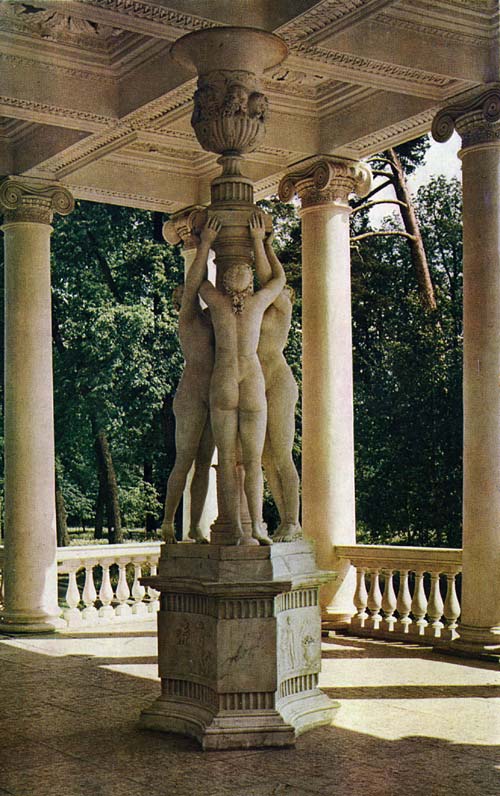
The Three Graces from the pavilion of the same name at Pavlovsk
by Triscorni
Late 18th century
Acquired by Alexander I in 1802 and presented to his mother, Maria Feodorovna.
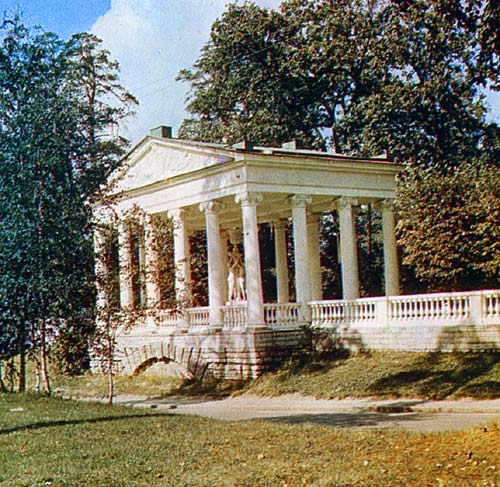
[ Last edited by lizz_7777 at 11-12-2008 02:14 AM ]
Author: lizz_7777 Time: 11-12-2008 01:49 AM
Pavlovsk in the Snows of Winter
[ Last edited by lizz_7777 at 11-12-2008 02:16 AM ]
Author: lizz_7777 Time: 11-12-2008 01:54 AM
Gates of Pavlovsk Palace
Broad and massive, the severe Doric order of the gateway, which is made of painted cast iron, is meant to impress. The portal is the design of Brenna. It was built in 1826
Immediately upon entering the estate through the gate one senses a different personality at work than at Catherine's palaces, which were meant to impress a visitor with Catherine's culture and intellect. These were the virtues that Catherine preferred to 'broadcast' in her buildings.
Although he was dead when the gate was erected, Paul must have been involved in its design. Clearly, Paul's intent was to impress his visitors with his military attitude and 'strength of will'. On top of the gate stands the Imperial emblem of Russia, the double eagle. The eagles are missing their crowns.
Note: This is page from our old site on Pavlovsk - it is here for those who had bookmarked it.
Bob Atchison
[ Last edited by lizz_7777 at 11-12-2008 02:17 AM ]
Author: lizz_7777 Time: 11-12-2008 01:54 AM
The Apollo Colonnade and the Cascade
[ Last edited by lizz_7777 at 11-12-2008 02:18 AM ]
Author: lizz_7777 Time: 11-12-2008 02:18 AM
The Temple of Friendship
Author: totokreturn Time: 11-12-2008 09:50 AM
bagi aku istana raja melayu neh takder seni halus...
bila dilihat..
istana raja melayu lebih kepada menghormati pemimpin..
istana inggeris plak lebih kepada kebanggan mereka terhadap raja, seni halus yg melambangkan kekuasaan raja tersebut memerintah...
Author: dexa Time: 11-12-2008 10:03 AM
Originally posted by totokreturn at 11-12-2008 09:50 AM 
bagi aku istana raja melayu neh takder seni halus...
bila dilihat..
istana raja melayu lebih kepada menghormati pemimpin..
istana inggeris plak lebih kepada kebanggan mereka terhadap raja, ...
interesting observation -
menghormati pemimpin tu apa maksud totok? -
kalau di europe sana - dari zaman dulu monarch kena ikut cakap church juga -
kalau baca sejarah battle of hastings - 1066 - banyak juga raja2 yang
memang tak dapat penghormatan dari subject depa -
norman menang pun pergunakan infantry sedahsyat dahsyatnya -
an interesting battle and history - cuma nak stress kat sini
raja2 kat europe sana bukan immune mana pun -
berbalik pada istana raja2 -
ye la.. macam kata totok - istana2 raja kat malaysia ni tak berseni -
kalau tengok kat england sana - ukiran, lambang.. so artistic
dan nampak 'gah' dan prominent -
Author: smma Time: 11-12-2008 12:13 PM
tapi betul ka sesetengah org ckap org biasa x bleh masuk sembarangan dlam isatana raja2 melayu.. hmm aku dengor2 jela.. btull ka idak tu, aku pun tak tau...
Author: kasmila Time: 11-12-2008 04:00 PM
Originally posted by unnamed at 18-4-2007 11:48 AM 
yg ni istana alam shah kat selangor....
http://i175.photobucket.com/albums/w151/superiorinfinity/selangor_istana_alam_shah.jpg
kaya btul sultan ni...membazir je wat besar2
tak membazir
kalau isteri 4
anak berderet2 ...
| Welcome to CARI Infonet (https://mforum.cari.com.my/) |
Powered by Discuz! X3.4 |

































